WHAT WAS THE PROBLEM WITH HALO INFINITE, AGAIN?
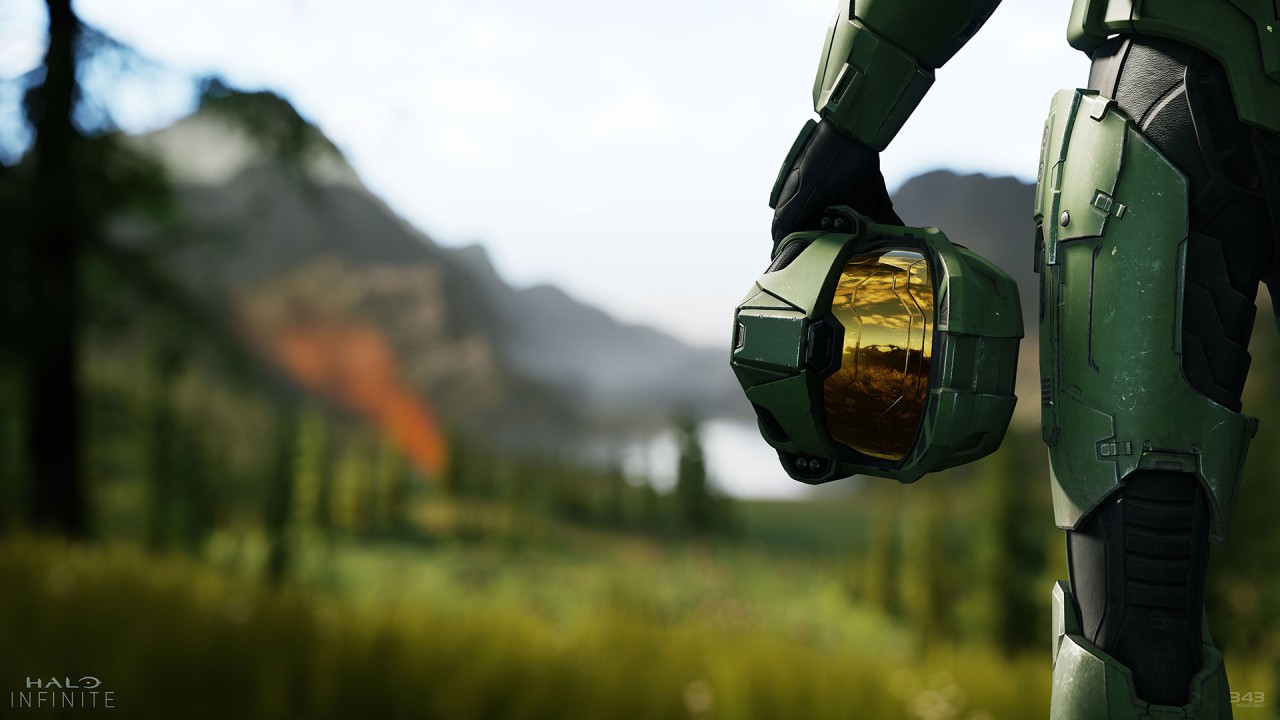
the year is 2018. it is E3, and Microsoft has just opened their conference with the reveal of Halo Infinite. no gameplay, no hints as to where the story might take us - more of a tone piece to convey some key aspects of the game. without coming right out and saying it, it looks like a new take on the franchise with some kind of open world, while also returning to a more classic aesthetic after 4 and 5 shifted the art style dramatically.
it's a breath of fresh air, because Halo 5: Guardians is already coming up on the three-year mark. it's the longest wait for between Halos yet - assuming some kind of pattern, the sixth game would have been expected to fall mere months after this E3 trailer. but it is 2018, and game development is only going to keep getting more different.
as i write this, we're closing in on the one-year anniversary of Halo Infinite's release. after a pandemic threw production off-course and the team fought for a full year's delay past the coveted console launch window, the game has been in our hands for quite a while now. it launched to, at least as far as i can tell, a warm critical reception. the open world isn't the deepest in the industry, but people like the moment-to-moment gameplay, because it's Halo, and it feels like some good-ass Halo. fans appreciate the multiplayer for taking a more classic, pared-down approach, merging elements from previous games to return Halo to its roots while keeping the pace up compared to the classics. before its campaign has even gotten into player's hands, Halo Infinite is crowned the winner of the Players' Voice award at Geoff Keighley's yearly solstice ritual/awards show, beating out such heavy hitters as Metroid Dread and Resident Evil Village.
if you read what people have to say about Halo Infinite today, whether on social media, gaming enthusiast spaces, or franchise-focused boards, you will see a very different picture being painted. nobody hates Halo more than Halo fans. Infinite is labeled as broken, worthless, a lost cause. it is, as people love to say, a "dead game".
so what the hell has happened over the course of the last year to make people turn around so harshly? what's the secret to unlocking the deep mysteries of Halo discourse? what brings a game from beloved to belittled, and what can that process tell us about where games as a medium stand today?
i can't necessarily promise to answer those questions. to be upfront - this post is not going to be me at my most even-handed. i am not looking at this phenomenon from the outside in. my friends have endured hearing me talk about this for the past year, and when making this very website, i knew one of its many purposes would be to contain my nuclear-grade takes about this exact issue. i am down there in the trenches of internet discourse and this article is going to be written from the perspective that what's happening to Halo Infinite actually kind of sucks, so if you're looking for me to dunk on this game, this is not the article for you. i can only hope that along the way, i will coincidentally stumble into something resembling a prognosis for these broader trends in gaming.
PART ONE: THE PROBLEM WITH HISTORIC EXPECTATIONS
'how we got here' is a messy concept. i could start in 2015, with the release of Halo 5: Guardians, a game who's own mixed reception informs many of Infinite's fundamental aspects. i could go back to 2012, when 343 Industries took the reins of the franchise with Halo 4. it wouldn't be inappropriate to jump all the way back to 2004, when Halo 2 launched and revolutionized the way games are played together over the internet. maybe our story starts somewhere outside Halo, like the 2017 release of Fortnite Battle Royale, or any number of 'games as a service' that have shaken up old industry standards of what post-launch support looks like.
pinpointing a single game as the beginning of all this seems like a bit of a futile effort though, because this isn't only a story about Halo Infinite. we have to go broader than that, across a path that intersects all of these moments in the history of online multiplayer shooters. but i also respect your time, so i'll try to be quick about it, as much as i can be.
Halo is a series of sci-fi first person shooters developed under Microsoft, originated by acquired subsidiary Bungie and later handed over to a newly created internal studio, 343 Industries. it was one of the early pioneers for bringing first-person shooters to console and standardizing a control method for the genre that didn't require the keyboard and mouse setup of PC games. as the series continued, it also was a leader in championing online multiplayer through Microsoft's Xbox Live service, creating a system of 'playlists' to funnel hundreds of thousands of players together instead of relying on server browsers as its PC contemporaries did.
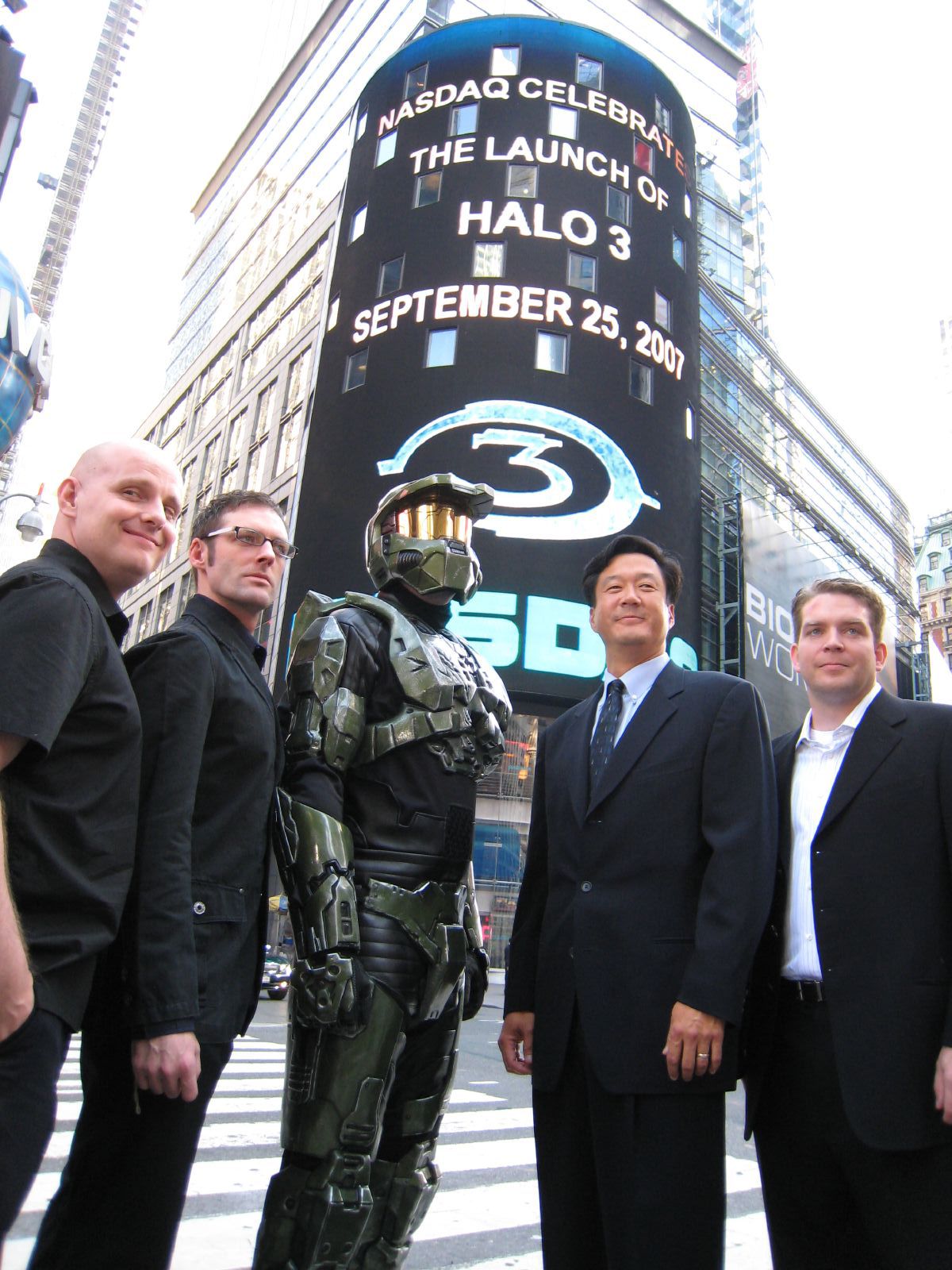
it is a massive understatement to say that Halo was a big deal in the 2000s. it's not a phenomenon i can even fully speak to - i must confess to being a fake gamer who, due to the unfortunate linear nature of time, was perhaps a bit young to be present for Halo's cultural zeitgeist. the imprint it left on media is well-documented, though; for millions of people, consoles were where you did your gaming, and Halo was the option for first-person shooters on a console. Halo was everywhere. it was a game, it was novels, it was a gamer-oriented soda, it was a televised competitive league, it was a burgeoning movie deal with Peter Jackson. Halo 3 was, in its time, the 'biggest entertainment debut in history', selling absolute gangbusters and pushing video games into the attention of mainstream media coverage unlike anything that had come before it.
with success, of course, comes competition. as the 2000s marched on, there were enough studios gunning for the throne that the term "Halo killer" became common marketing parlance for a myriad of first-person shooters. if any game 'won' in this regard, it would probably be the Call of Duty series, which slowly but steadily worked its way up from humble WW2 origins to eventually being the biggest competition on the market, straying from Halo's 'arena shooter' style to provide a faster, twitchier experience. perhaps its most lasting fingerprint on the genre is the ever-present progression system, constantly giving players a positive feedback loop of unlocking new content the more they play. all of the sudden, FPSes had meters to be filled and goodies to be uncovered.
with the market becoming more and more saturated with games that could genuinely contend with its popularity, Halo was in a bit of a weird spot. after wrapping up their original trilogy, Bungie decided they were ready to move on - they had said all they had to say about Halo, and it was time to go invent something new. it's a bit bizarre to think about now, but at arguably the height of their power, they successfully negotiated a separation from Microsoft, with one main caveat. there would have to be two more Halo games before they could be released from their contracts. with these terms laid out for them, Bungie got to work, and the results were odd, to say the least.
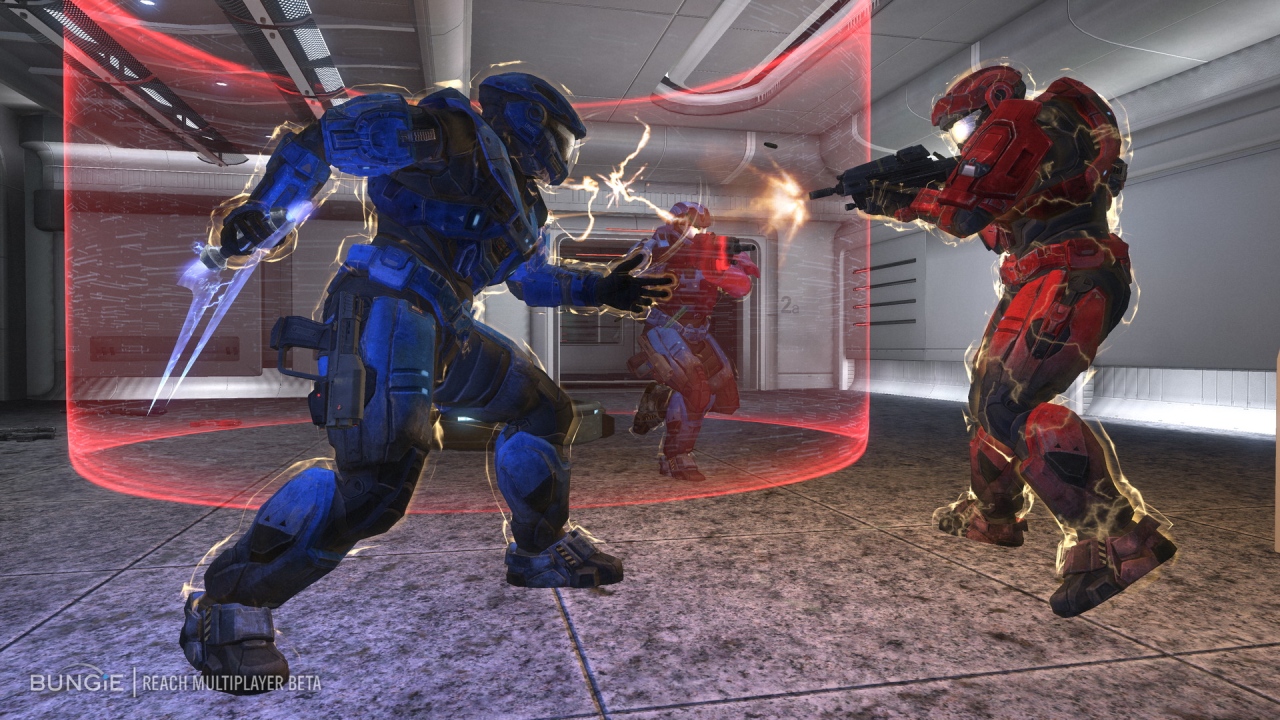
Halo 3: ODST and Halo: Reach represent the franchise at perhaps its oddest. they certainly feel like Bungie games, but both represent the studio at a time when they were ready to move on from the franchise. this exhaustion with Halo surfaces not as a lack of effort or care, but by making both games deviate heavily from the original trilogy - ODST is a single-player focused experience with a hub world and a mild coating of film noir aesthetics, while Reach effectively tries to throw the franchise back to 2001 while also embracing Call of Duty-esque design choices, such as letting players choose from different starting kits, or its overall grittier, more muted 'boots to the ground' approach to storytelling.
i feel like this bit of disclosure is going to inform a lot about the rest of this article - Halo: Reach was my introduction to the franchise. i can still remember the box sitting on the entertainment stand, and the sort of shrug of approval that i got from my family about probably being old enough to shoot some aliens at that point. it's by no means my favorite Halo game, but Reach nostalgia in the Halo fandom is a beast all its own. once reviled by the community at large, it has been rehabilitated by people who grew up on it, and its shadow will loom heavy over the rest of this story.

with Bungie taking their last bows and heading once again into independent development on a new project, the task of shepherding Halo's future fell to 343 Industries, an in-house team at Microsoft that had been quietly brewing for years since it became clear Bungie wouldn't be around to handle Halo forever. only two years after the release of Reach, they put out Halo 4, a somewhat divisive follow-up to the original trilogy. it's been praised for how far it pushed the Xbox 360 technologically and many will point to its story as the most emotional of the series, but it drew just as much ire for a number of reasons - leaning even harder into a Call of Duty-inspired multiplayer design with killstreak rewards, writing that was accused of relying too much on outside material to be understood, and an extensive reinvention of Halo's visual identity.
the pace of a new Halo game every three or so years would continue for the next installment, but before we get there, i think it's important to take stock of a few things about where Halo was at, and where video games as a whole were heading. Call of Duty had already taken a strong lead in the market, working at an even more intensive 'game per year' pace and releasing across multiple systems rather than being tied to the Xbox brand.
games like Battlefield continued to add more competition to the market, and PC gaming was on an upswing, with Valve at perhaps the peak of their power and many rallying around the catchphrase "PC master race", a phrase which, in hindsight, really makes my face shrivel up like i just bit into a lemon. it was a crowded market as the 2010s kicked off, and the way multiplayer games were designed and monetized were at a volatile crossroads where trends that seemed like immovable wisdom carved in stone could dissolve in a matter of months.
Halo 4 was the last Halo game to feature the DLC model that was generally followed as far back as Halo 2, in the form of "map packs". players would pay somewhere around 5 to 10 dollars for a handful of new arenas for multiplayer, with new packs generally coming out quarterly or so for the first year after a game's release. it was a simple model with its roots in a tradition of expansion packs being sold for PC games - you just pay a little extra, get a little extra. the problems that surfaced as the years went on were the unreliability of that purchase's value - if you wanted to see any of those new maps you paid for in online matchmaking, you had to hope the funnels grouped you together with other people who had made the same purchase, which could be anywhere for three other players to fifteen.
attempts were made to mitigate this by providing DLC-only playlists to filter out anyone who didn't own the extra content, but these often quietly fizzled out, because ultimately, people didn't want to wait longer to play on a smaller selection of maps. there were haves and have-nots, and while that might have worked in the days of Halo 2 - when Halo was practically the only game of its kind on the console market, and map packs were expected to be made free after a certain threshold of time - it wasn't sustainable as a long-term model in a changing landscape for multiplayer.
by the time the next Halo title hit the market, the way games were being monetized was changing. if you had transactions in your game, you wanted them to be small, like some kind of… micro-scale exchange of money. if only we had a term for that.
there was a time in gaming when actual analysts who actually get paid with very real money to analyze the industry earnestly thought that mobile gaming on phones would decimate the console market. consoles cost hundreds and the standard price for a full-fledged game was hovering around $60, so how do you compete with a computer everyone carries in their pocket that has games for only 99 cents?
you adopt their strategies. you make the barrier for entry lower, and the transactions smaller. it was a time of growing pains for games, especially competitive multiplayer games such as Halo, where developers constantly had to walk the line of providing value in small purchases without stumbling into the dreaded territory of "pay-to-win" by offering anything that actually made players perform measurably better at the game.
in 2015, Halo 5: Guardians released, and before we delve into how its multiplayer embraced the trends of the time, we need to unpack where it sits within the franchise's history on a different level. it was a tumultuous time for the series - the year before, the Master Chief Collection launched with debilitating, game-breaking bugs, and it was still in a state of very limited functionality. 343 Industries was seeking to push Halo as a brand further than ever before, promising a television series executive produced by Steven Spielberg and launching their own 'Halo Channel' app for the Xbox One in anticipation of a new multi-media vision for the franchise's stories. Halo 5's story was a hard swerve from what Halo 4 had provided, ditching the overarching didact plot they had invested a trilogy of novels into and instead focusing on the shocking twist of reviving Cortana as a villain spearheading an AI uprising. if fans couldn't embrace Halo 4's direction, they would simply wipe the slate clean and go somewhere Halo had never gone before.

on the multiplayer side, Halo 5 was fundamentally split down the middle into two halves, which shared all the same basic mechanics but strived for two very different goals. fans had loudly protested the loadouts and killstreaks of Halo 4, so 343 Industries sought to bring the series back to its arena roots with the aptly-named Arena modes. Halo 2 was a pioneering game for 'esports', but later installments never quite caught the competitive scene's attention in the same way, so Halo 5 was carefully crafted to zero in on this aspect of the series. where it deviated from the classics was in its enhanced mobility, with all players capable of running, climbing, hovering, and jetting around the map. many have argued this is a case of Halo looking to its competitors for inspiration, and it's hard to deny that in the mid-2010s, this kind of heightened, 'split-second decision' mobility was very in vogue.
the other half of the multiplayer suite came in the form of Warzone, a mode meant to expand on the large-scale combat of Halo by combining PVP elements with a variety of active objectives and an AI presence on the field. unlike in previous Halo games, the 'small' and 'big' multiplayer experiences couldn't really overlap; Warzone maps were for Warzone, Arena maps were for Arena. it was in this side of the experience that Halo 5 embraced the next evolution of microtransactions - the loot box.
loot boxes are a fascinating artifact of mid-2010s game design in terms of how omnipresent they felt in multiplayer games and how quickly they seemed to all but vanish from all games. i can't necessarily speak to every single design choice that lead to them, but the fundamental principle seems clear - if you're trying to make the transactions as small as possible but still want repeat buyers, and if the thing you're selling is trying to avoid making players objectively better at the game, why not leave the purchase up to chance and pull from a random pool of items?
(gambling. the reason you don't do that is because it's gambling.)
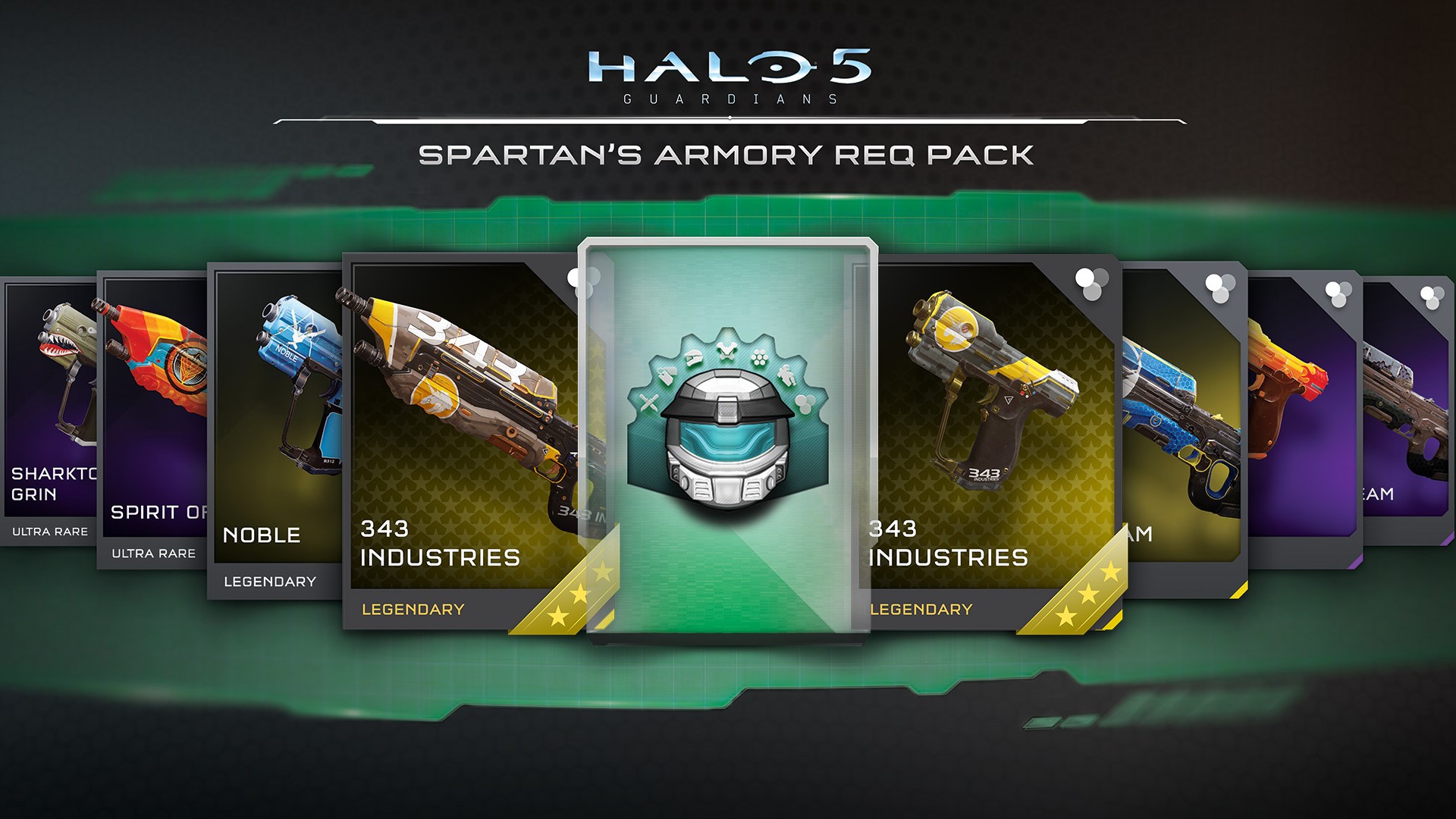
Halo 5's loot boxes, known as REQ Packs, weren't the most egregious on the market, but they certainly weren't great, either. REQ Packs contained two broad categories of items - purely cosmetic content like new armor and weapon skins for your Spartan, and single-use cards that were deployed in Warzone mode. rather than scavenging for your power weapons as in traditional Halo multiplayer, Warzone had players draw from a limited cache they owned, regulated by an in-game scoring system that required you to play well to earn the ability to call in stronger equipment. in a very technical sense, it's not pay-to-win, because you still have to 'earn' the right to call in your power weapons, and if you die, anyone is free to pick them up and continue using them, but it's certainly tip-toeing the line.
as with most loot boxes of its time, one way the game tried to pre-emptively cut off complaints of paying to win was by making the packs earnable with in-game currency. i would know this very well - i put hundreds of hours into Halo 5 and unlocked almost every bit of armor the game had to offer, only ever paying real money in cases where items weren't being offered for points. hypothetically, it is a thing anyone could do if they're willing to play a lot of Halo 5. on a personal level, i would never recommend anyone try to do it - i was at a point in my life where i had the capability to play basically as much Halo as i wanted and it still took me a good two or three years to accomplish, and i would hardly call it 'worth it' nowadays.
reactions to Halo 5: Guardians as a whole are a bit tricky to gauge, in the sense that i think a lot of players do not like it, and those that do almost take a sort of begrudging stance about it - a sort of "you couldn't understand Halo 5 because you weren't in the trenches with me grinding to rank 152" approach, almost? it also doesn't help that in the wake of Infinite, plenty of people are willing to double back and try to defend 5 as somehow being better despite how much of it they detested back when it was the headliner of the franchise.
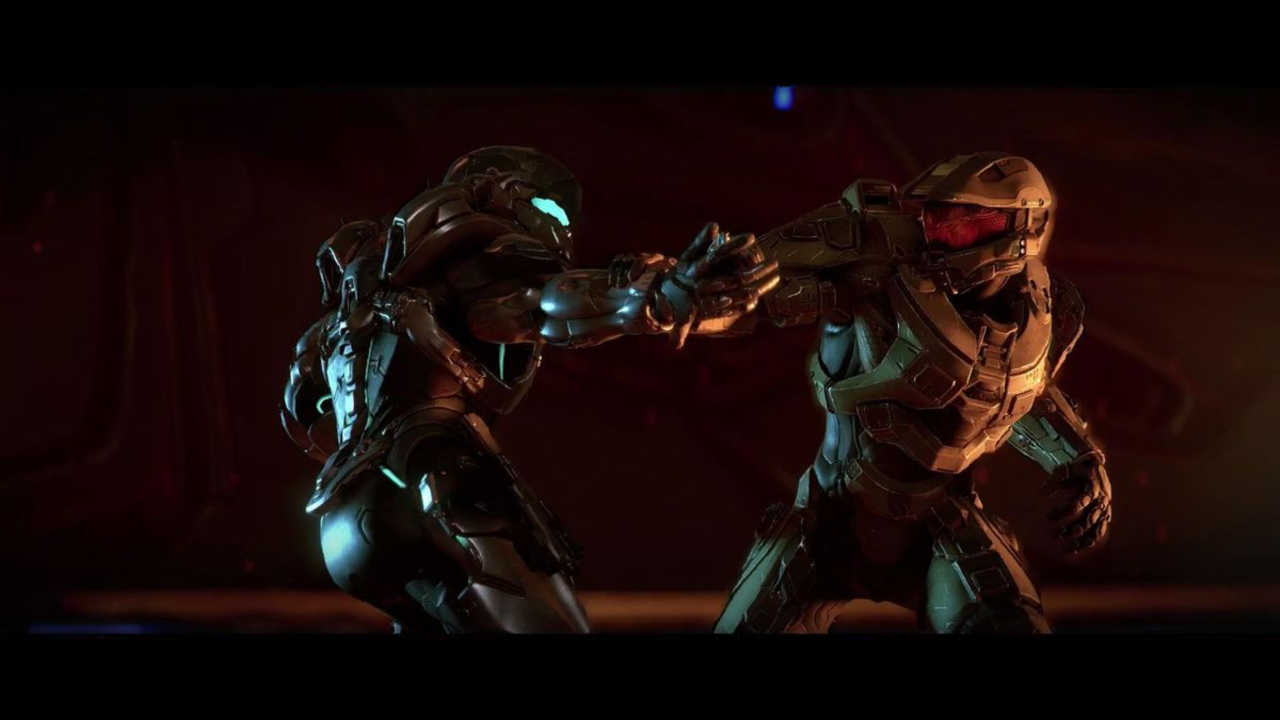
people certainly didn't enjoy the story any more than Halo 4's, although the reasons why often differ from person to person, with a common complaint being a lack of focus on Master Chief in favor of a new secondary protagonist, Jameson Locke. Locke is definitely not the most engaging character ever, and his introduction through live-action miniseries Halo: Nightfall left basically no impression, but i get the sense most people just have a weird attachment to their specific vision of Master Chief and felt some level of offense that he was being sidelined for this game.
it also feels like it might be irresponsible of me to not point out that Jameson Locke also happens to be black - most discourse about him doesn't read as overtly racist, but especially when talking about capital-G Gamers, it is unavoidable that certain people were definitely critiquing him from a prejudiced angle and that perhaps fed into a broader distaste for the character.
in painting a picture of how we got to Halo Infinite, it's also important to talk about two concepts that sculpted the narrative around Halo 5 - "missing features'' and "games as a service". despite certain elements being designed with cooperative play in mind, Halo 5 was the first game in the series to exclude local splitscreen co-op. other features, such as the series' Forge map editor mode and Big Team Battle multiplayer, came after launch in the form of free monthly updates. this was the upside of the microtransaction model; if you push enough sales for small, unimportant things, then you have the money to provide larger content updates like new maps and features for free, eliminating the issue of splitting your playerbase. overall, though, there was a pervasive sense in the fandom that Halo 5 was missing some substantial features and that these were something to be outraged about.
our deep dive into the history of multiplayer games and how they influenced Halo Infinite's design doesn't just stop with its immediate predecessor in the Halo franchise, though. within a few short years of Halo 5's launch, many of the trends it had ridden the coattails of had already vanished from the landscape, making it feel like a preserved fossil even only seven years after its release. enhanced mobility, while never quite disappearing, didn't stick around as a genre hallmark in other franchises, and after games like Star Wars Battlefront II pushed loot boxes to their absolute limits, the looming threat of government intervention led to the industry largely washing their hands of the whole idea.
as platforms like Twitch skyrocketed in popularity and changed the ways playerbases interact with games as a medium, the next big trends that overtook multiplayer shooters seem almost tailor-made to produce games that are incredibly engagement-driven. for a moment, it seemed like class-based 'hero shooters' like Overwatch would be the new standard of choice, but out of nowhere, PlayerUnknown's Battlegrounds set the stage for the 'battle royale' genre, flipping traditional competitive multiplayer on its head into a slow burn survival challenge, but without a doubt, the most influential multiplayer game of the late 2010s is the game that came in and ate PUBG's lunch, Fortnite Battle Royale.
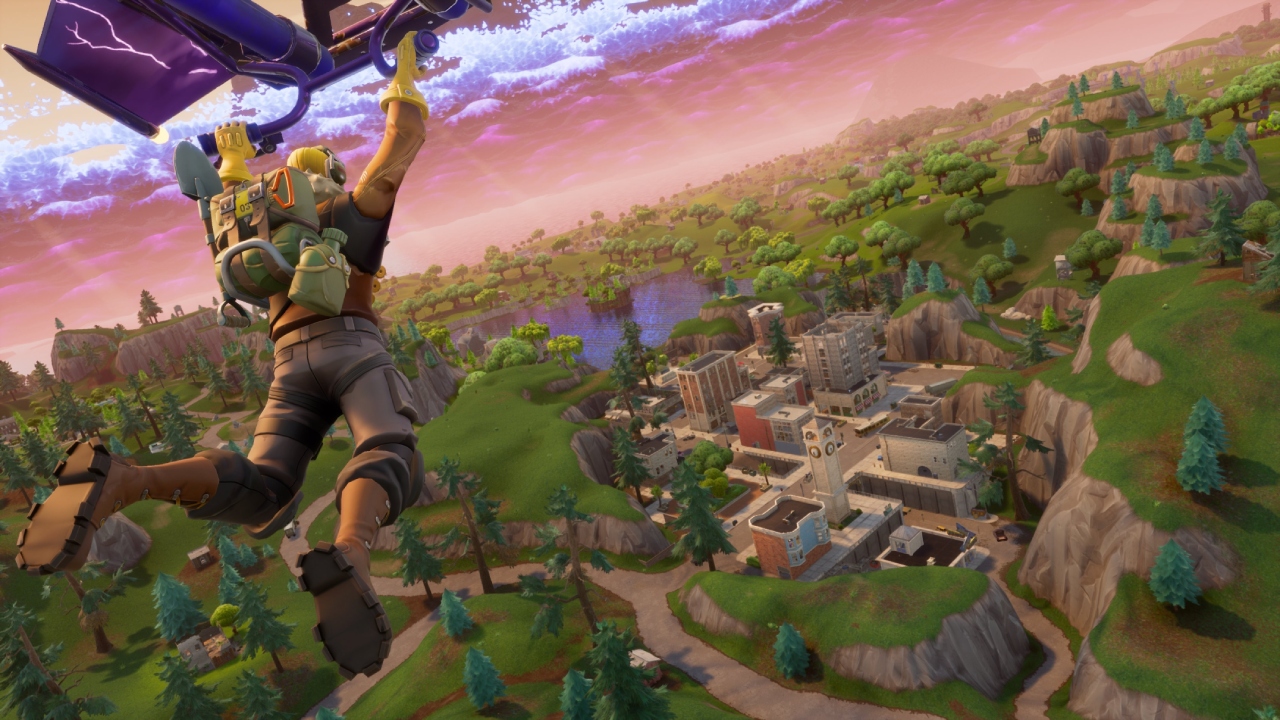
i remember installing Fortnite briefly when its battle royale mode was first blowing up and wondering what all the fuss was. in hindsight, all the ingredients were pretty shockingly obvious. PUBG cost money, was exclusive to PCs for a long time, and had its roots in mods for games like ARMA, focusing on a very grounded tone with real world finicky gun physics. Fortnite took that same feedback loop of striving for a win against 99 other players, used much game-ier physics, and was completely free. of course people gravitated towards it.
while the 'battle royale' genre itself became oversaturated over the following months, perhaps an even broader impact Fortnite brought to the table was the idea of the 'battle pass'. it's a concept that originated with MOBAs like Dota 2 years beforehand, but Fortnite's explosive popularity at a moment when the games industry needed a quick, easy replacement for loot boxes effectively locked battle passes in as an overnight must-have for any new multiplayer release.
battle passes combine old-school meter filling with new-school monetization - players progress by playing the game more and more, with a set track of cosmetic rewards, generally split into a free tier and a paid 'premium' tier with more enticing prizes. the paid tier also usually includes enough currency to pay for itself, with the caveat that these passes are tied to limited seasons and disappear once they're over. in this sense, the developers don't have to worry about you earning your future passes for free - they've got you hooked, because you have to be dedicated to playing their game, and maybe only their game, to pull that off. for anyone who doesn't earn back their money in time, tough luck.
so that leaves us at some point in the late 2010s, going into the 2020s. over the course of the decade, the standards for online multiplayer have shifted dramatically. games that were once supplanting Halo with their innovative new systems have now come full circle, trying to adopt the innovations of their newer successors to get a slice of the pie. Fortnite is putting out new content at a blistering rate, practically reinventing itself every few weeks to meet player demand, with an increasing focus on high-profile brand tie-ins. the hardware people play on is stronger than ever, with players demanding higher fidelity than ever to match, yet almost every major player in the multiplayer space has to offer itself up for free just to stand a chance of building a following.
i don't think i've actually managed to make that a short story. anyways, how is Halo doing around this time?
PART TWO: THE PROBLEM WITH BLAM! AND SLIPSPACE
as support was winding down for Halo 5: Guardians, all eyes were on 343 Industries to see where the franchise would go next. there was a general sense in the fandom that this had to be the time they got it right - players both casual and professional were advocating for a return to the fundamentals of the Bungie games, whether that was in terms of broad mechanics or minute details.
somehow, as a result of this type of thinking, one of the very first things we heard about a sixth Halo game was that the Spartans would once again have black undersuits for their armor. as someone who was in the fandom at the time, i can assure you, this was an actual thing that people, including myself, complained about, and even at their most tight-lipped, 343 Industries wanted us all to hear that this very specific feedback had been heard.
other than this definitely absolutely critical bit of information, things were quiet. many of the minds behind Halo 5, both in terms of its story and its gameplay, quietly left the studio in the intervening years. interviews gave the impression that 343's main takeaway from critiques of Halo 5's story was "these games need to be all about Master Chief", with little said about things like Cortana's death being undone for the sake of a twist. one early promise from studio head Bonnie Ross was that every Halo going forward would include local split-screen support, in response to backlash against its absence.
now that Infinite has been out in the wild and gaming journalists have sought to dissect the nature of its development, we know a bit more about what was going on behind the curtain during this time. the team was shuffling around into new positions post-Halo 5, and new ideas were being tried out. one bit of information that has become increasingly notorious in the fandom is that some amount of time was spent prototyping a sixth Halo game in the style of Overwatch, with different preset classes.
both the developers at 343 and the very journalists who unearthed this information have emphasized that this type of experimentation is extremely normal for any game to go through, but people seem very eager to wield this information as some kind of sign of incompetence - how dare they even try, they wasted time on this and that must be why I don't like the game, etc.

another point of contention in the fandom is the development of Halo Infinite's Slipspace Engine. all Halo games, dating all the way back to 2001, have run on the same fundamental bones that Bungie developed, known as the Blam! Engine. not only are proprietary engines much harder to program for than off-the-shelf solutions like Unreal, but this was one that had accumulated almost twenty years of odds and ends across multiple studios and multiple games that came in infamously hot. one of the first things revealed in the wake of the E3 2018 trailer was that Halo Infinite would be moved to a new proprietary engine, known as Slipspace.
Slipspace, at its core, is not an entirely new engine. it still contains several elements of the Blam! Engine. this, again, is often pointed out as perhaps some kind of waste of time or outright false advertising from 343 Industries. my understanding, from reading about these engines and hearing takes from people who do work in game development, is that this is all incredibly normal. engines like Source and Unreal still contain very old components because making game engines is an iterative process and most studios work under the assumption that upending decades-old code to replace it is only going to create even more issues. i cannot claim to have personal expertise on the matter, so i could be entirely off-base, but most of the people complaining about this type of thing in the fandom are equally inexperienced with game development, so there's that.
all my attempts to clarify game development processes aside, it does seem like Halo Infinite had a particularly tough production process. high-level employees cycled in and out of the company and it seems to have taken some time for the team to pin down what the direction of the project would be. all of these issues were only magnified by Microsoft's hiring policies, focusing on hiring contract workers but also putting a limit on how long they can stick around.
this meant a developer might work 18 months on the game, have no choice but to leave, and then be replaced by someone who needs to spend some of their own 18 month contract being caught up to speed. this whole process seems highly inefficient and almost assuredly isn't great for the people actually making the game. when i bring all this up, it isn't to excuse poor hiring policies, but to elaborate on the realities of how this game was developed, for better and in this case for worse.
on the subject of months and years, a third correction i feel like addressing is the amount of time between games. people often throw around "6 years of development" when talking about Halo Infinite's shortcomings, and the answer is a lot more complicated than some flat amount of time a game is in production. work on the Slipspace engine seems to have started around 2016, and pre-production was certainly in motion, but games do not just start getting made the second the previous one is out, especially nowadays when you see games such as Halo 5: Guardians receiving extended support through updates. 'the sixth Halo game' is certainly an idea that was being kicked around for six years, but that is not the same as what people like to imply, which is that Halo Infinite was in full-blown production for that entire time.
it's hard to pinpoint exact dates on when the project we would recognize as Halo Infinite actually started to come together, but by some time around 2018, it seems like the broad goals were in place - a return to classic-style Halo gameplay with an expanded sandbox and an open world campaign. it was a massive undertaking, and to compound things even further, it was being positioned as the lynchpin for a generational shift, releasing across the Xbox One, its beefed up Series S/X older brother, and PC. even as the vision of what Infinite is came into focus, it seems like development was a struggle as separate teams brainstormed what 'open world Halo' would mean and tried to cover all their bases.
during this phase of development, things stayed somewhat suspiciously quiet, with generally yearly updates around E3 season. just as 2018 had brought us the first showcase of the Slipspace engine, 2019 showed off the introductory cutscene for the game, establishing the tone of the story, with the mysterious hook that Master Chief had been drifting unconsciously through space after the events of Halo 5 and woke up to a world where the UNSC had lost a major war in the meantime. occasional details would trickle out between these showcases, but for the most part, Halo Infinite was being kept close to the chest - perhaps with the thinking that it would be best suited as a secret weapon for the launch of Microsoft's next-gen consoles, or perhaps due to troubles behind the scenes.
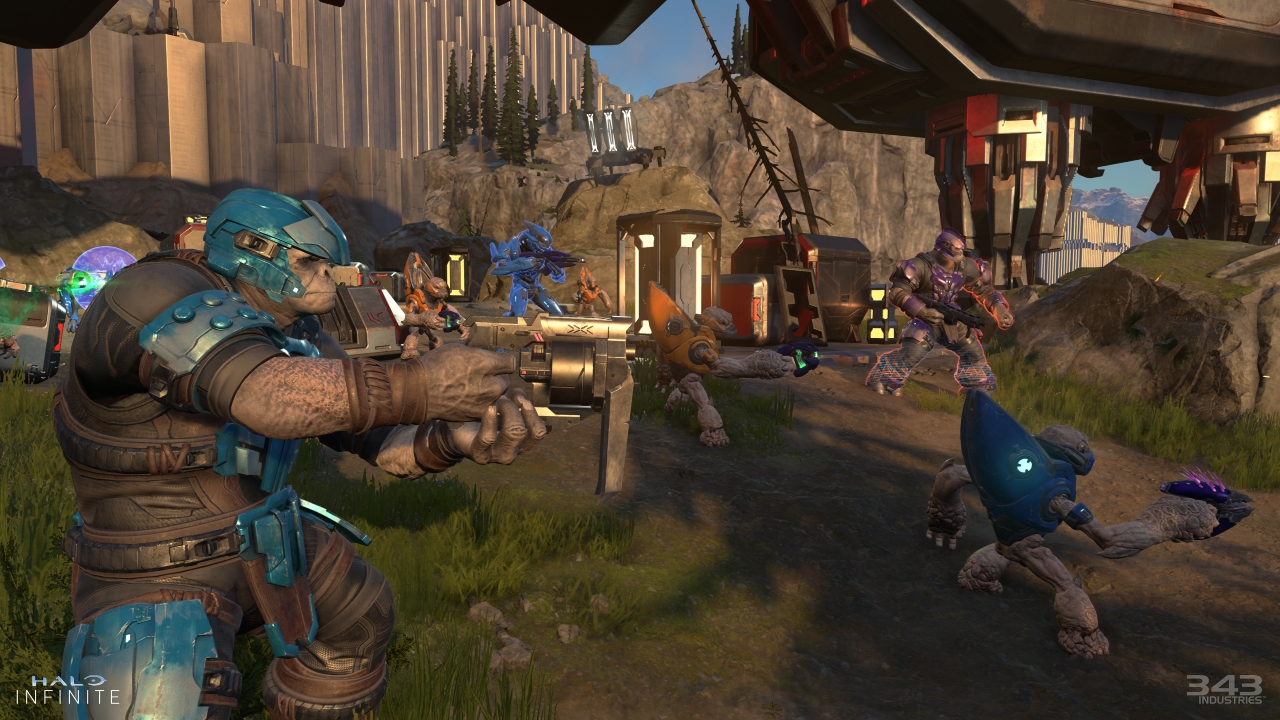
the floodgates truly open with the not-quite-E3 digital showcase in 2020, with a 8-minute demonstration of real gameplay footage. i remember watching this and being really excited - the idea of an open world Halo game was a bit scary in terms of my distaste for most modern AAA open worlds, but the combat encounters looked fun, with so many clever expansions to the traditional Halo combat loop, like being able to pick up explosive coils as makeshift weapons or the addition of a grappling hook. it has been my long-standing opinion that all video games are better with a grappling hook, and now, arguably my favorite game of all time had one. it was great! and the art style was clearly skewing closer to the classics with less overbearing lighting effects and detail, focused instead on instantly readable silhouettes and a bright, bold color palette.
so, anyways, people hated this fucking demo.
hated might be a strong word - the gameplay elements were all relatively well-received, perhaps with some caution from old-school fans but with an overall sense of optimism when discussing how the game might play. the issue, then, was that most people had very little interest in talking about the gameplay. the primary feedback from this demo was dissatisfaction with the graphical quality of Infinite.
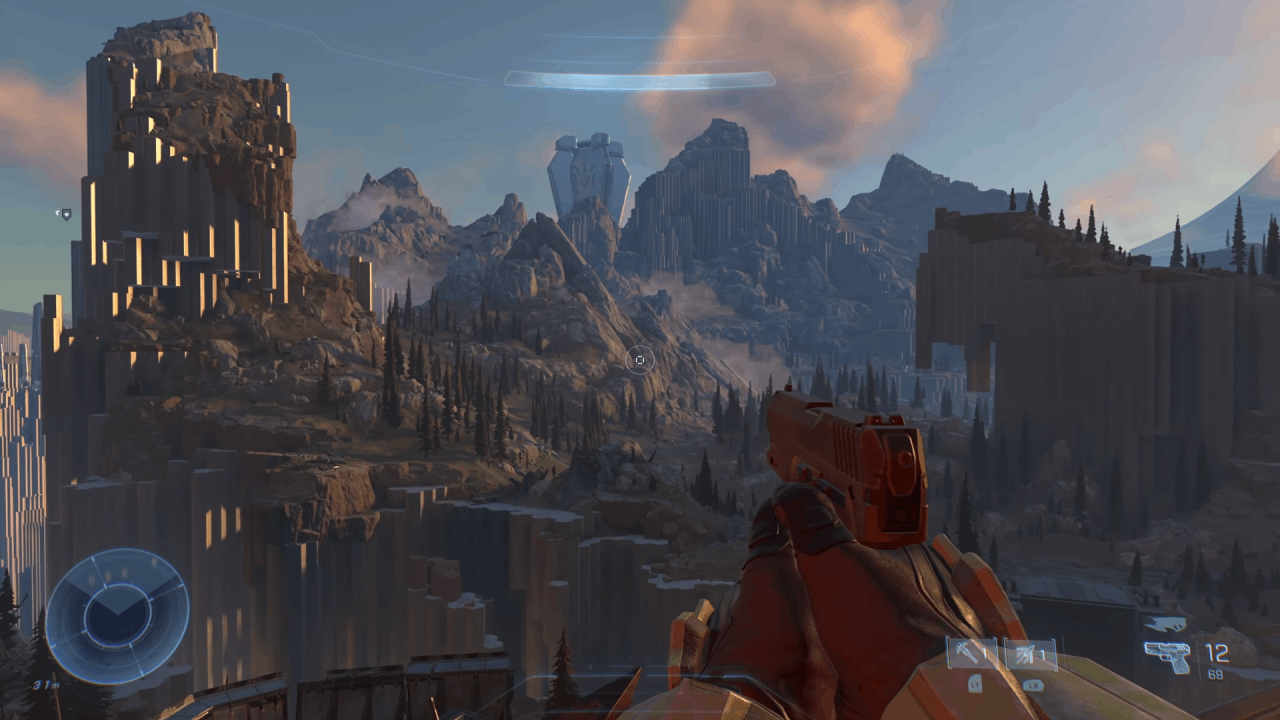
my personal opinion is that the backlash to this demo was vastly overblown due to its place in the broader context of a generational shift in consoles. as much as it is easy to feel like perhaps discourse around video games has risen above petty shots back and forth about which of these two $500 computer boxes is better (despite them being more and more similar internally as the years go by), the console wars are still very alive, and Halo Infinite was seen as some kind of colossal misstep in Xbox's marketing for its next-generation hardware.
to very quickly go over my points against these arguments; Halo Infinite was being built for a range of hardware dating back as far as 2013. graphical polish and optimization, to my understanding, often come pretty late into development once you have your gameplay fundamentals locked down. and, perhaps most frustratingly, the game's art style was everything people had been asking 343 to return to for years. i'm not going to sit here and tell you the demo looked fantastic or anything, it definitely represents a product that isn't in a finished state, but in my opinion, having a cohesive art style is astronomically more important than the resolution it's being rendered at or whatever.
the demonstration was definitely representative of a work-in-progress, but the overwhelming narrative around the demonstration was that it was some kind of disaster. as people dissected the footage, a particular frame of a Brute people labeled as Craig became an emblem of people's concerns with the game's graphical prowess.
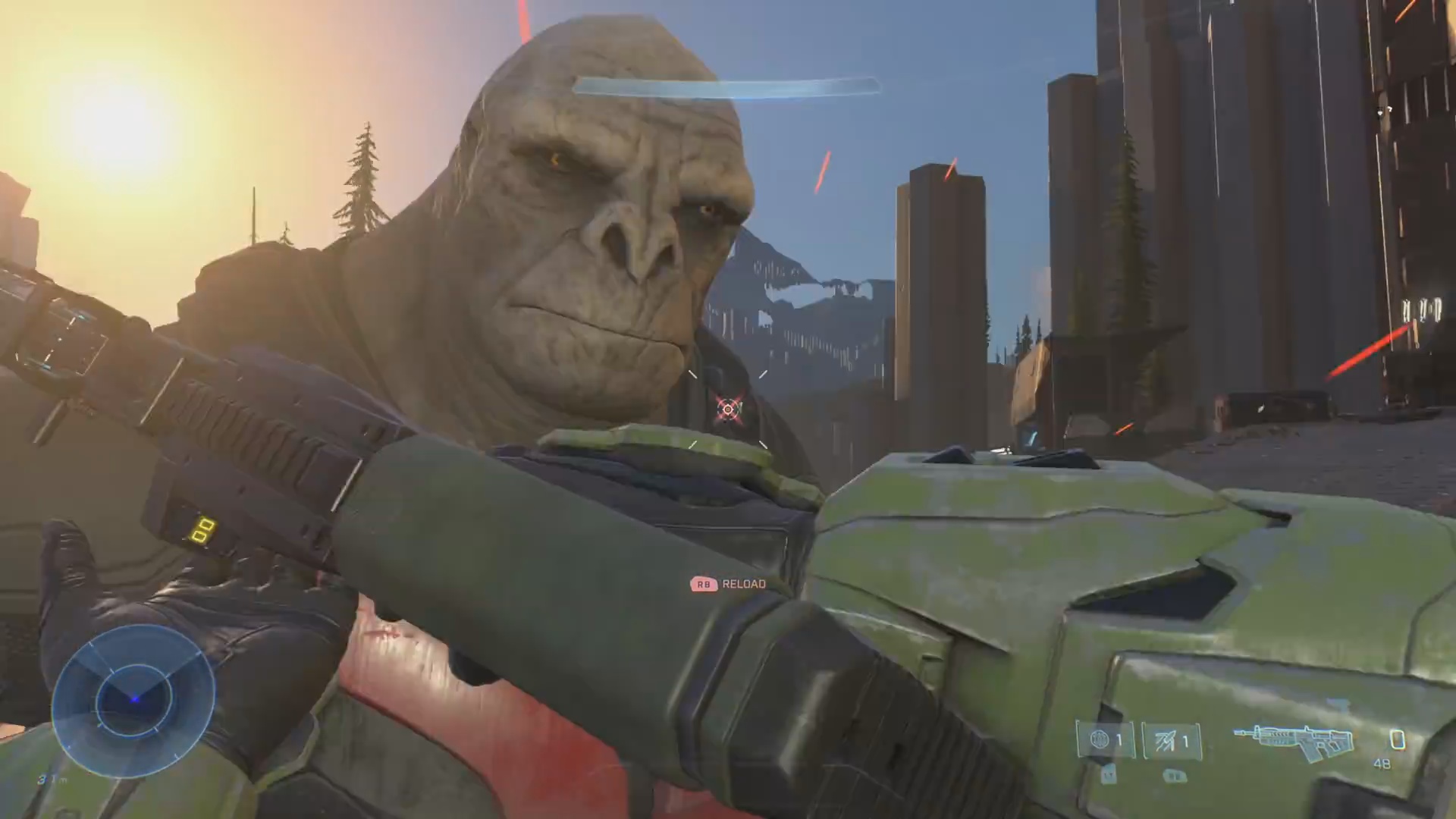
we're not going to talk about Craig yet, but i have a lot to say about Craig. keep Craig in the back of your head.
in the weeks after the campaign demo, two major pieces of news dropped that would continue to stoke discourse around the game for better and for worse. the first came about a week after the presentation - after listings were unintentionally put up early, Microsoft ended up rolling with the news and officially confirmed that Halo Infinite's multiplayer would be free to play. to some extent, this came as a surprise, but given the state of the market, where almost every major competitor is also offering free access to their games, it shouldn't have been too shocking that this would end up happening one way or another. some people were certainly excited about the new visibility this could provide for the franchise, but others were already mentally prepared for the worst case scenarios of how the game might be monetized as a result.
the other shoe dropped a few weeks later that Halo Infinite would be pushed into 2021, missing the launch window of the new Xbox. it definitely felt like the delay was in response to the overblown concern over the game's graphics, but as we can now see a little more clearly, there were other issues behind the scenes that definitely made this delay worthwhile. around the same time, it also became clear that franchise veteran Joseph Staten, writer of the original Halo trilogy, would be joining Infinite as its new creative lead. unfortunate circumstances, but overall, choices that all probably led to the game itself being better.
news once again started coming out on a regular basis late into 2020 as we started getting monthly blog posts from 343 Industries, consisting of internal interviews with various departments of the studio. i would say the most notable of these in terms of community reaction was in December, with an update from the art team talking about multiplayer cosmetics, namely the newly introduced 'armor coating' system.
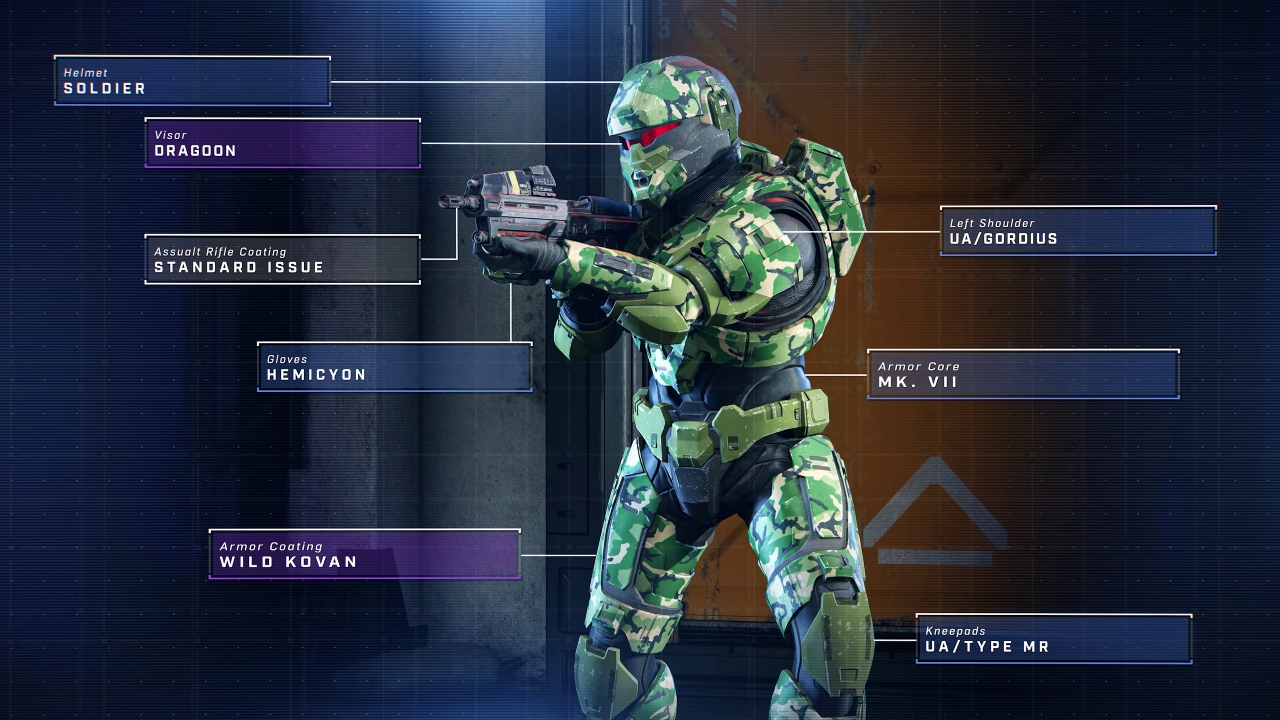
for those unfamiliar - traditionally, in every Halo game up until Infinite, the most consistent, basic form of cosmetic customization for multiplayer was choosing from a limited pool of colors for your character's armor. Halo Infinite instead uses pre-made 'coatings', created by the developer and mapping different colors onto your armor in different ways. this decision is said to have come out of a desire to have more expression possible, by playing with things like different textures and patterns. another benefit noted was that in previous Halo games, your colors would only be visible in free-for-all modes whereas the much more popular team-based modes would override you into a solid color 'uniform'; coatings would be visible in all modes, with the addition of a colorful outline over players to denote between allies and enemies.
the armor coating debate has been raging non-stop since this information was made public, and it's one i have some mixed feelings about. it's easy to read certain criticisms of it as reductive or bad faith, talking about how they only did this to be able to 'sell you the color blue' or whatever, but unfortunately, coatings have sometimes been overpriced in the game's store. one hill i am willing to die on, though, is that coatings are not, in isolation, a completely bad idea - plenty of people will bemoan how they can't use 'their colors' anymore, but ultimately, i'm willing to trust actual professional artists with providing a satisfying range of palettes.
things continued on like this for a while, with a bit of news to chew on every month or so, with occasional merch leaks getting the fandom riled up wondering about the context they might provide for the upcoming game. things really got into a full swing again during E3 2021 as we received a new trailer for campaign, giving us more context for the game's plot, and an extensive look at multiplayer, revealing some of the systems the game would be built around, such as including bots and a training mode for the first time in Halo's history, or, as many had predicted, the inclusion of a battle pass.
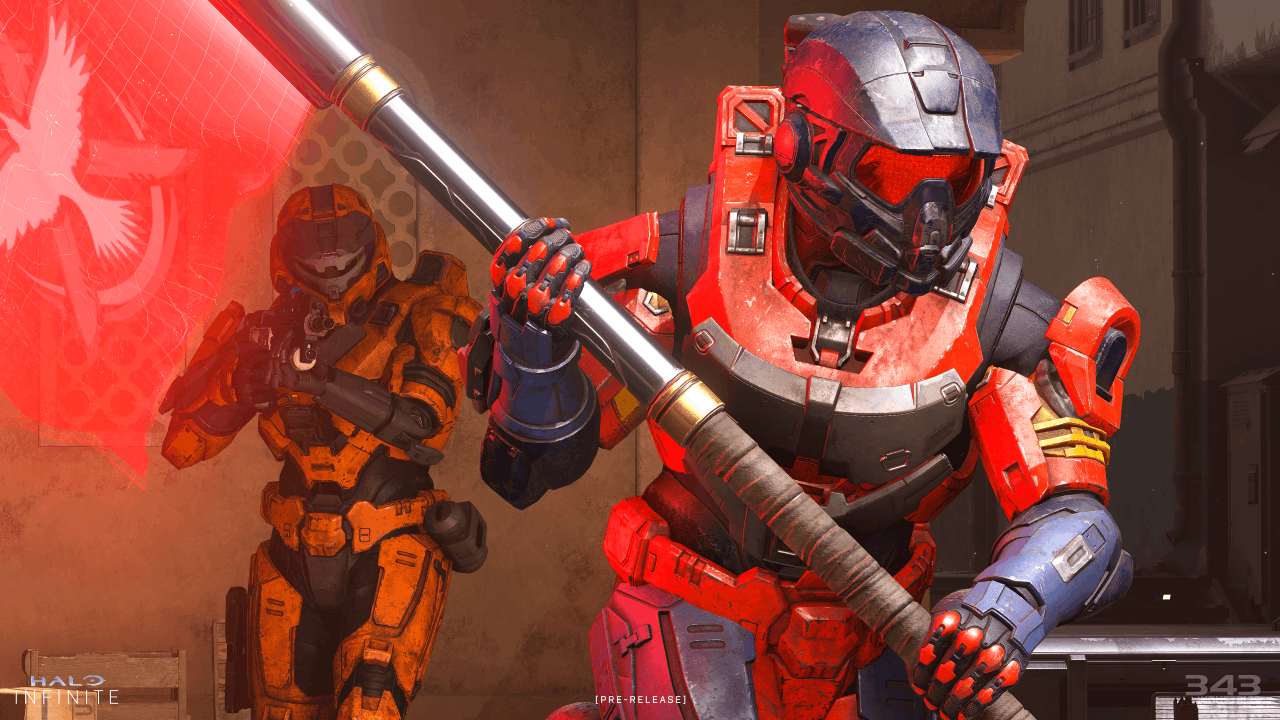
the response to the multiplayer reveal was rather positive, from what i can remember - the team had a strong focus on translating classic Halo to a modern context, showcased new pieces of the sandbox such as the Grappleshot and Repulsor, and for a lot of people, the most relieving information to hear was the way they would be handling their battle pass system. items would be single-source (meaning that nothing in the battle pass could be bought through a storefront, or vice versa) and the seasons would never expire, allowing players to complete their passes at their own pace or double back to old seasons they had missed. it seemed like the team had found answers everyone could be satisfied with, and the mood in the fandom seemed to be a sort of held-breath optimism that perhaps 343 Industries would nail the landing on the game.
it wouldn't take long after E3 2021 for fans to get their very first hands-on experience with the game, as 343 Industries used their established Insider program to begin inviting players to a technical test for the game's multiplayer, the first of which came at the end of July. reactions overall skewed positively - there were certainly those who nitpicked some of the finer details, but the community seemed happy with how the game played and 343 was quick to put out reports about some of the larger-scale feedback they had gotten. in September, the tests were opened to an even wider audience (including myself) to stress-test the game's dedicated servers and introduce new modes, and the excitement was building as more and more people got their hands on what many would argue to be the best-feeling Halo in over a decade.
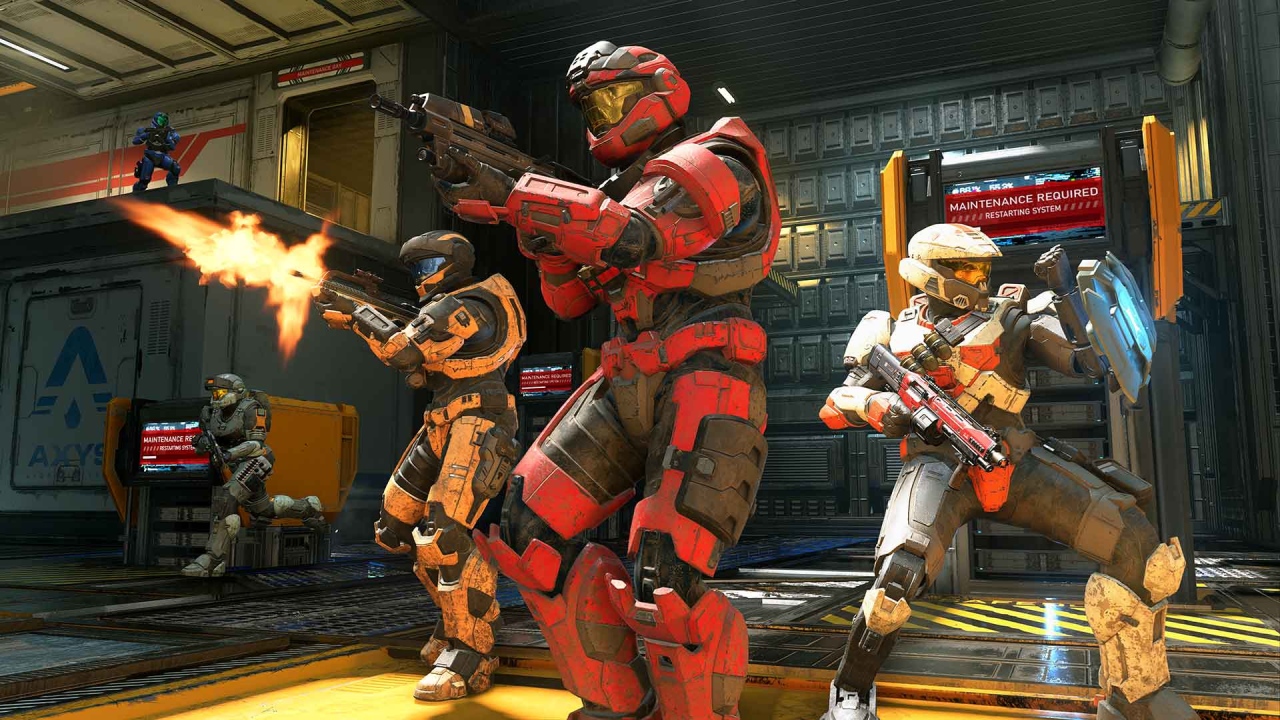
between these two major tests, though, came another tough pill for the Halo fandom to swallow - campaign co-op and Forge would be pushed back into 2022, missing the game's 2021 launch window. reactions to this were incredibly heated, with many swearing the game off, insisting they only ever play Halo in a co-operative context. it might just be my own personal history with the series speaking, but i found it surprising the amount of people (or perhaps just the volume they were producing) who are so deeply committed to only experiencing the game through this lens.
it is with the feature delay on co-op and Forge that we begin to see one of the most pervasive narratives around Halo Infinite taking shape - "all these other games had this, so why can't Infinite?". this argument, this 'they don't make 'em like they used to' rhetoric, is sort of the core of why i feel strongly enough to write this thesis. it is, in my opinion, a shallow misunderstanding of how games are made that has poisoned the well on discourse about games like Halo Infinite and made one of my hobbies actively exhausting to try and engage with in a communal sense.
it's hard to recount the wait until December 8th from any perspective but my own; i mostly remember the excitement coming off of the multiplayer test, but i'm certain that reactions came with a much finer grain of salt than mine in some cases, with the feature delay being a sore point for fans and the looming worry of things like armor coatings making some people staunchly prepared to start pushing back before the game was in anyone's hands. soon though, an insider with utmost access to the inner workings of 343 Industries gave the Halo community a collective rush of excitement. enter Pringles.
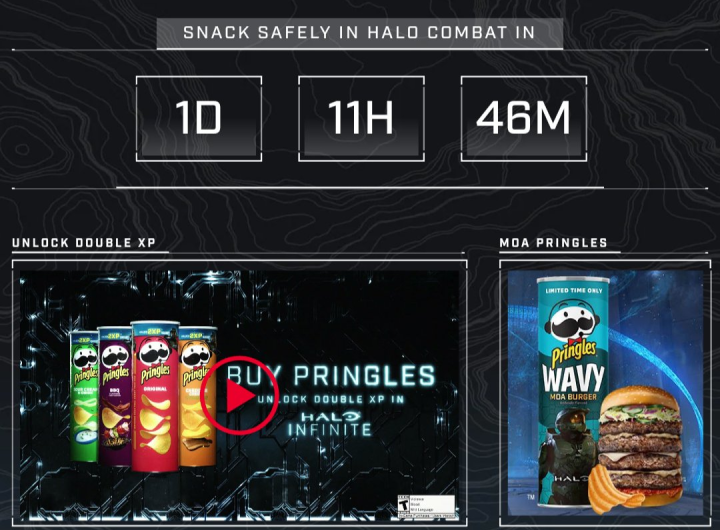
okay, Pringles was just a part of the puzzle, but the Pringles countdown was a very real part of the build-up in early November. leakers and insiders had heard through the grapevine that Halo Infinite's multiplayer component would be launching a full month ahead of time on November 15th, marking the 20th anniversary of the original game's release, and as fans volleyed back and forth over the credibility of these claims, Pringles just so happened to put up a countdown on their site - ticking down to November 15th. later evidence shows this was entirely a coincidence and that the marketing team at Pringles had no idea what was going on, but for many people, this was what sealed the deal, the coup de grace. any 'professional journalist with reliable inside sources' could lie on the internet, but Pringles would never.
(Pringles kind of didn't know what was going on, and therefore their actual capacity for dishonesty is still an unknown factor, but it's the thought that counts here, folks.)
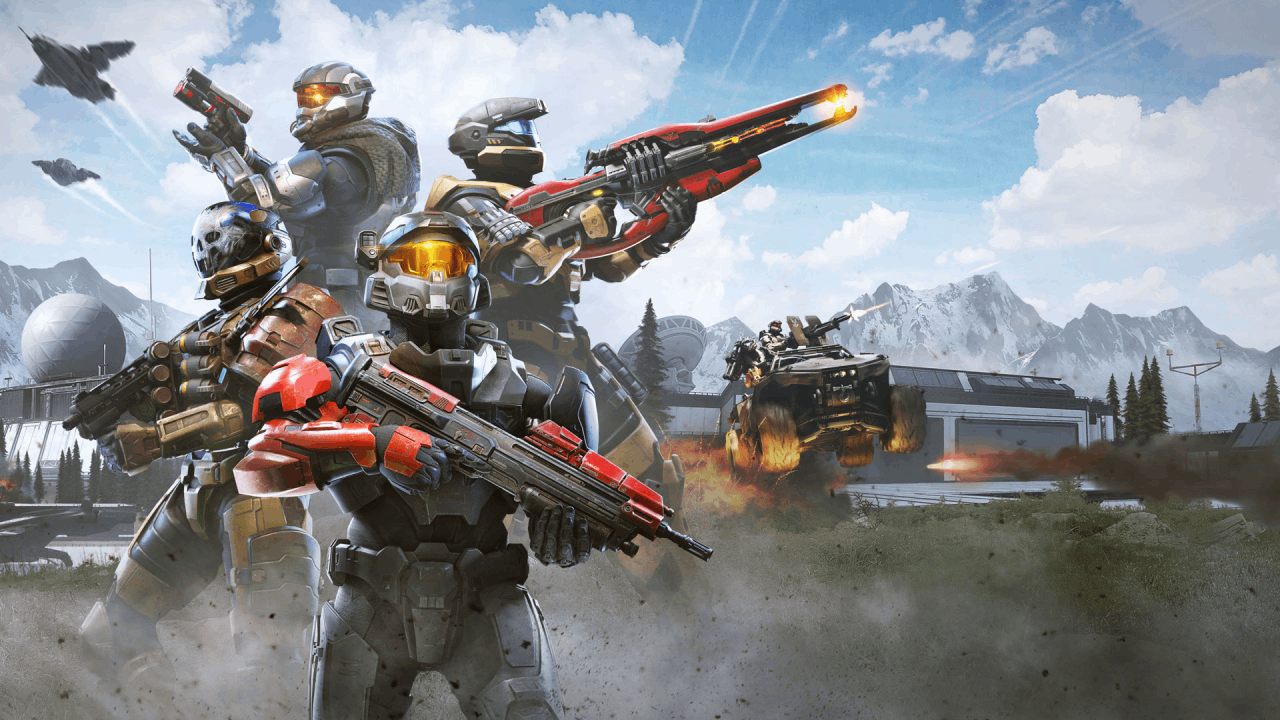
November 15th arrived with an anniversary stream to talk about the history of Halo, and just as predicted, it came with the confirmation that Halo Infinite's free multiplayer component would be going into an 'open beta' state later that day. this beta label was, admittedly, being used much in the same way it's tossed around for other early releases - a smokescreen for any potential first day jitters, but a fully finalized product in almost every way, just meant to be put into player's hands earlier than expected. we'll revisit how different people interpreted that label soon, but for now, it's time to finally start talking about the video game this essay is about.
PART THREE: THE PROBLEM WITH LAUNCHING
so, Halo Infinite's multiplayer component was out and in people's hands, completely free. i'll go over the state in which it launched and how people reacted to it momentarily, but it feels important to establish a baseline of what i personally think about the game.
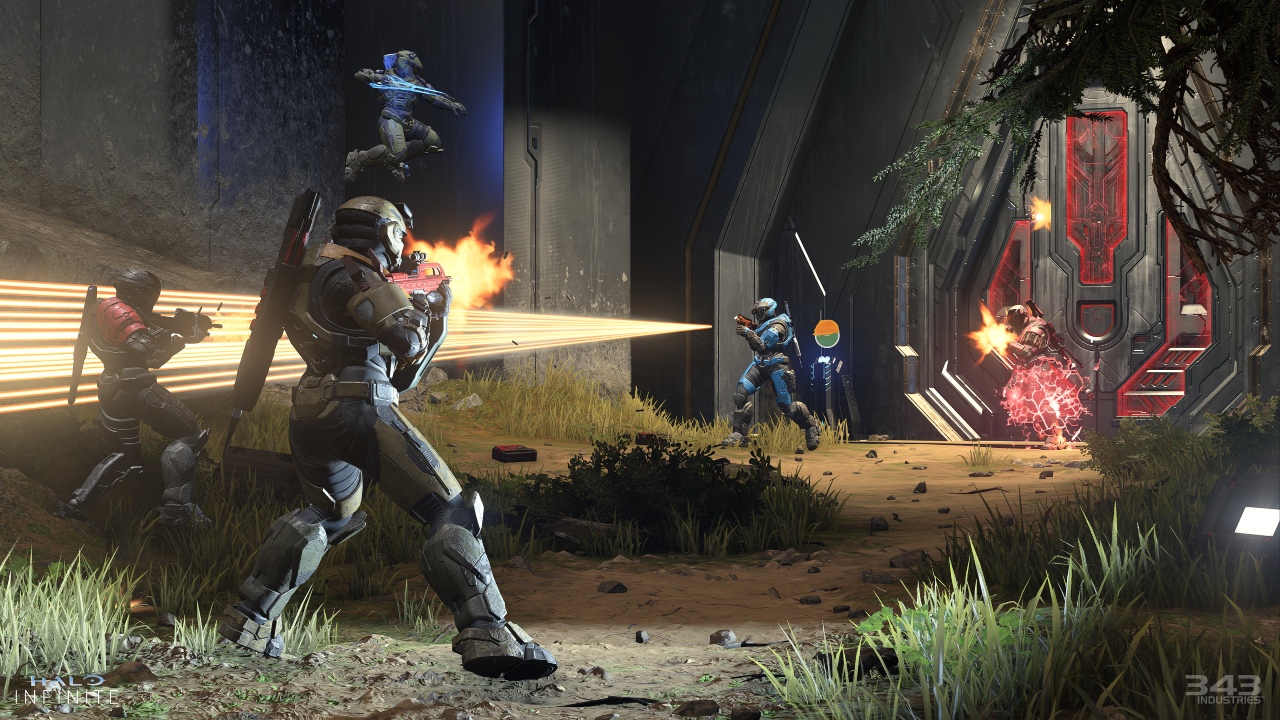
it's really good. my experience with Halo is an odd one, in that i can't say i was very present for the classic arena-style shooters Infinite is attempting to call back towards, but through a combination of general osmosis and being able to play those original games through the Master Chief Collection, i've gained a lot of respect and appreciation for that style of game design, and i can recognize that arguably as far back as Reach, that game design had been tweaked and gotten further away from what Halo was in the past. i would hesitate to call games like Halo 4 or 5 strictly bad - they absolutely still have their strengths and don't feel poorly thought out, 5 especially - but they were definitely caught between trying something different and being beholden to Halo's roots.
Halo Infinite feels like a much more finely crafted blend of modern elements with classic arena shooter gameplay. movement is faster and snappier than the floaty, weighty feel of games like Halo 3, but without becoming overwhelming to keep up with. the weapon sandbox is fantastically tuned with a focus on making sure no weapon feels redundant in the lineup - a few might see a little less usage in my hands, but everything feels like it was built with a reason to exist, a role to fill that makes it worth considering as an option when scavenging for your loadout. Infinite also brings back the equipment slot from Halo 3, a move which i personally adore. the lineup of equipment has been reinvented from the ground up with additions like a grappling hook or repulsor, but the idea of offering up unique abilities like this as map pick-ups that are meant to be fought over just like power weapons feels like the perfect way to spice up Halo's combat while staying truer to what makes that combat loop so satisfying and engaging.
personal takes on gameplay aside, the launch of Infinite's multiplayer went fairly standard - there were caveats, namely the announcement that the game's first season would last six months so that Season 2 could be developed at a healthy pace, but the game was functioning more-or-less as intended from a gameplay perspective. technical issues are a broader issue that we'll have to unpack later, but overall, the game was in steady shape, especially compared to contemporary multiplayer launches of late 2021.
so, if the game was pretty fun and worked as intended, why was the Halo subreddit put on lockdown mere days before campaign launched in December?
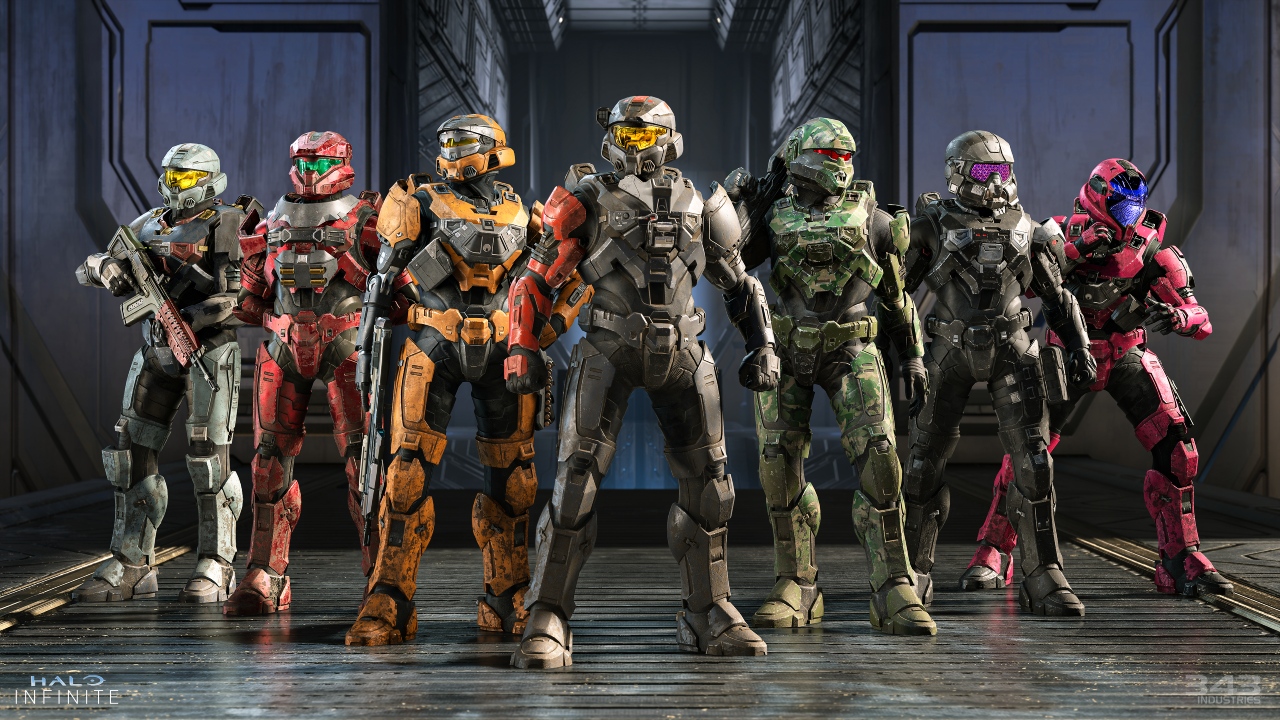
there were a variety of gripes to be had with Infinite's state at launch, with probably the most prominent from a directly gameplay-based perspective being the lack of multiplayer playlists, with only a handful of modes and no dedicated playlist for people who only wanted to play Halo's basic Slayer mode. it's interesting the ways in which these two complaints almost seem to pull in opposite directions - you have loud demands for more modes, but also a vast majority of players who only wish to engage with a handful of core modes, and a well-documented history of Halo's more objective-based modes not being given the same attention when spun off into their own playlists. obviously, the Halo community is not a monolith, and i don't think that the overlap between "more modes" and "Slayer-only" people is a perfectly overlapped Venn diagram, but it's representative of a fact Halo Infinite butts up against a lot - Halo means a lot of things to a lot of people and they all care about those very specific slices of the experience a lot.
all this critique over playlist selection was not the primary driving factor behind the toxicity that led to r/halo being shut down temporarily, though. the main point of contention for fans of Halo was cosmetics, and how those cosmetics were made available to players.
Halo Infinite provides a variety of different ways for players to obtain new cosmetic items - there is a 100-tier battle pass per season, which contains both free rewards and a $10 premium track. there are weekly 'capstone' challenges, unlocked by completing smaller challenges and awarding one unique new cosmetic per week. and then, there's the store, which, at launch, had two weekly slots and two daily slots. the first season of the game was dubbed Heroes of Reach, and focused on cosmetics based on the fan-beloved armor from Halo: Reach, offering up the Mark V [B] as a separate 'armor core' while also building out a lineup of new designs for this game's default armor, the Mark VII. there are also generally smaller events rotating in and out every few weeks, with one per season being a recurring 'Fractures' event focusing on a sort of alternate universe approach to the Halo aesthetic, with Season 1 having the samurai-themed Tenrai event as its Fracture.
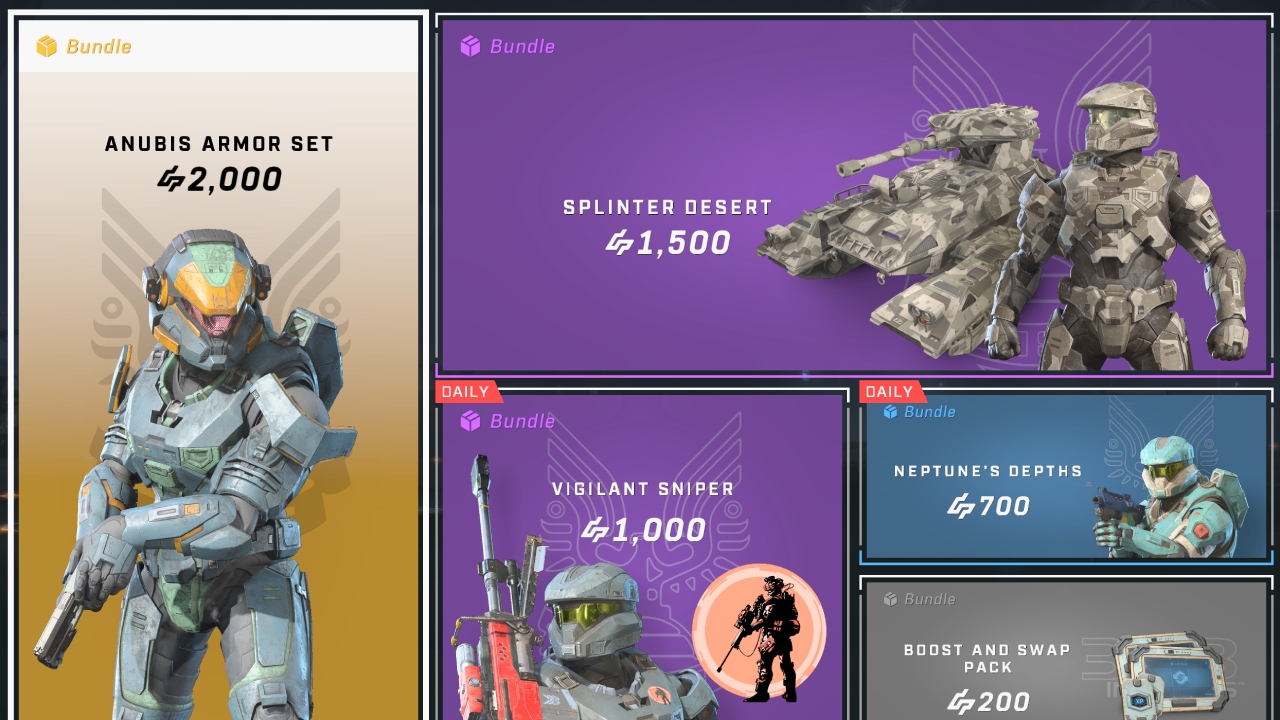
there's a lot to unpack about the way cosmetics work in Halo Infinite. the armor coating system was still as unpopular as ever, especially now that the shop was fully open and indeed sold additional palettes for Spartans, and armor cores similarly compounded the problem. armor cores effectively split customization items across different suits of armor - a Mark VII suit can't be equipped with any of your Mark V [B] items, for example. this applies across all items, including the coatings themselves, which, at launch, left customization feeling a bit fragmented between different sets of gear.
the battle pass was met with a lot of very interesting reactions. the free track focused on rewards for the Mark VII armor core, while the paid track covered most of Reach's armor designs, prioritizing items that were used by the game's protagonists, NOBLE Team. common complaints at launch were a lack of cosmetic rewards on the free side of the battle pass - with many accusations that XP boosts and challenge swaps were being used as 'padding' - and the pace of progression. XP was doled out specifically through the completion of challenges, and leveling up could certainly take a bit of time.
where the complaints about pacing interest me the most might be in comparison to the game that this first season seems to be tapping into as its potent nostalgia bait. Halo: Reach's system of progress was an intense grind - to be fair, you received points across a much wider range of activities than in Infinite, but leveling up was on an exponential curve where it could take months, if not years of play to attain high levels, and those levels didn't guarantee you a reward. leveling up would unlock new options in the game's catalog for you to spend your points on, but once those points were spent, they were gone.
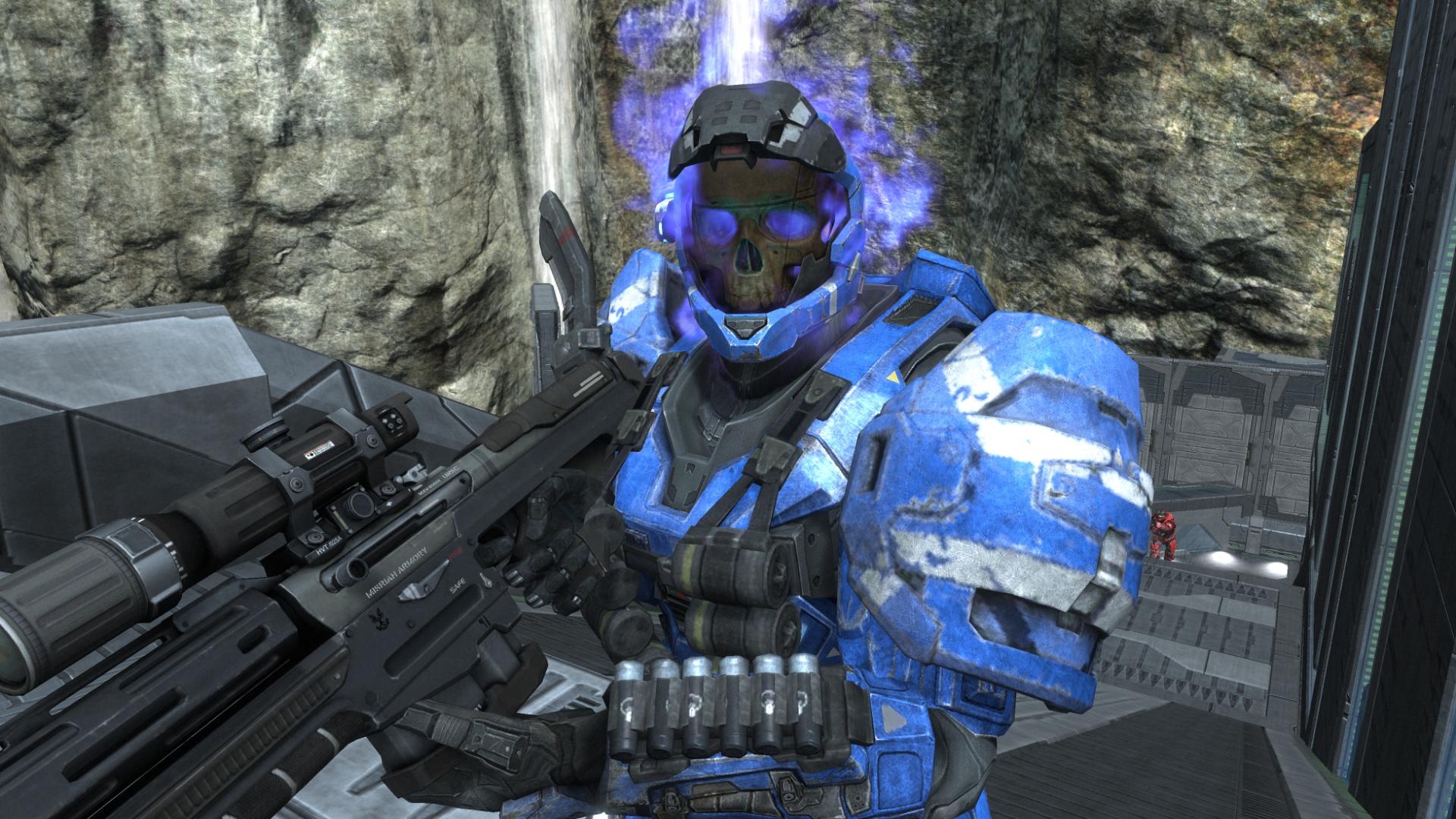
with Reach, i distinctly remember playing nothing but the most optimal points-earners like Grifball for weeks on end just to have the opportunity to pick which of two options i would buy for my Spartan first, and then it would be another month at best before i could double back and get the other one. Halo Infinite's unlocks might have been slower than some people would want them to be, but they were still leagues more attainable than Reach's, and as the developers had continued to emphasize at every step in multiplayer's promotion, Infinite's battle passes don't expire like in other games - there was no need to hurry beyond a player's personal desire to have higher level items.
the third angle of this criticism, and the one i can relate hardest to, was the in-game store. $10 for a 100-level pass that never expired seemed like a fair price and i was okay with putting that money forward, especially for a free game. the issue, then, was the pricing on the store. right off the bat, the game was offering bundles going for $20, and these bundles contained effectively one 'set' of armor, usually for the Mark VII core. these were, bluntly speaking, bad deals. if there was anything to point at and label as 'being done wrong' at launch, i would say this was it.
so you have on your hands a game that is widely agreed to play very well, with people's main critiques being a desire for more modes and a dissatisfaction with the state of cosmetic customization. campaign is just about to come out and people are excited to see what's being brought to the table. more than a few had taken this direct quote -
Importantly, with the Season 1 extension, we aren't just stretching-out our original Season 1 plan. Indeed, we took this opportunity to add additional events, customization items and other content to Season 1 to make it an even richer experience from start to finish.
- Joseph Staten, from 'WELCOME TO THE HALO INFINITE MP BETA'
- to mean that December 8th would come and the game would suddenly receive a major update with multiple maps, despite no specific details ever pointing towards any updates that large coming that quickly. as i mentioned at the top of the essay, voting for the "Players' Voice" award at the yearly Game Awards was well underway at this point and Halo Infinite was blazing a trail towards a decisive win in a competitive field.
but then, on the other side of the coin, the Halo subreddit is put on temporary lockdown on December 5th, mere days away from the game's full launch. people hate armor cores and coatings and the way it fragments the customization experience. people hate the store and its prices. people hate how slowly they're gaining XP, and when tensions run high in debates, you see a sentiment starting to grow amongst those who feel this way - "if i'm not leveling up, why should i play Halo Infinite?"
this is essentially the guiding lodestar for where all Halo discourse in the year afterwards begins pointing. those who are angry are incredibly eager to take 343 Industries to task for the grievance of not progressing fast enough, and those who are optimistic about the game still tend to do so through a lens of what they assume will be coming soon rather than the game they have in front of them now. it doesn't take long for the quality of gameplay to take a backseat to these issues around player expression and progression.

even campaign's launch is caught up in these conflicts - the game offers up cosmetic unlocks via armor lockers scattered throughout its open world, and people got caught up in semantic debates over feeling misled that these cosmetics were paintjobs rather than full kits of armor, to the point of trying to weasel more information out of reviewers with early copies and getting mixed messages in return. the fixation on cosmetics became pervasive to the point of becoming the biggest talking point around Halo Infinite's launch, above all else.
it has been said on this site before and it will be said again - i like character customization. a lot. anyone who has watched me play a video game where i can make a guy can vouch for this. i care a lot about creating an avatar for myself, choosing an aesthetic i like, and in the case of Halo, i have a consistent 'vibe' i like to go for, as if my Spartan has been along for the ride in all of these games and each new entry is just another opportunity to build on those aesthetics. much like many fans will loudly tell you, i have 'my colors' that i wear in Halo. i'm saying all this to establish that i'm not trying to swing hard against customization in games - i am not someone who would derogatorily call picking out armor 'dress-up'. i love engaging with these types of systems, even in first-person games like Halo where you can argue you'll rarely get a good glimpse of that work you've put in.
all of that being said - none of that could ever make me hate a video game. what matters to me about a video game is if it is fun or not, and Halo Infinite, to me, is fun. i would love to have more armor and more options for how to put it together and super-granular control over a bunch of details. if that's not there, that's okay. the game is fun and i play it for the sake of it being fun.
anyways.
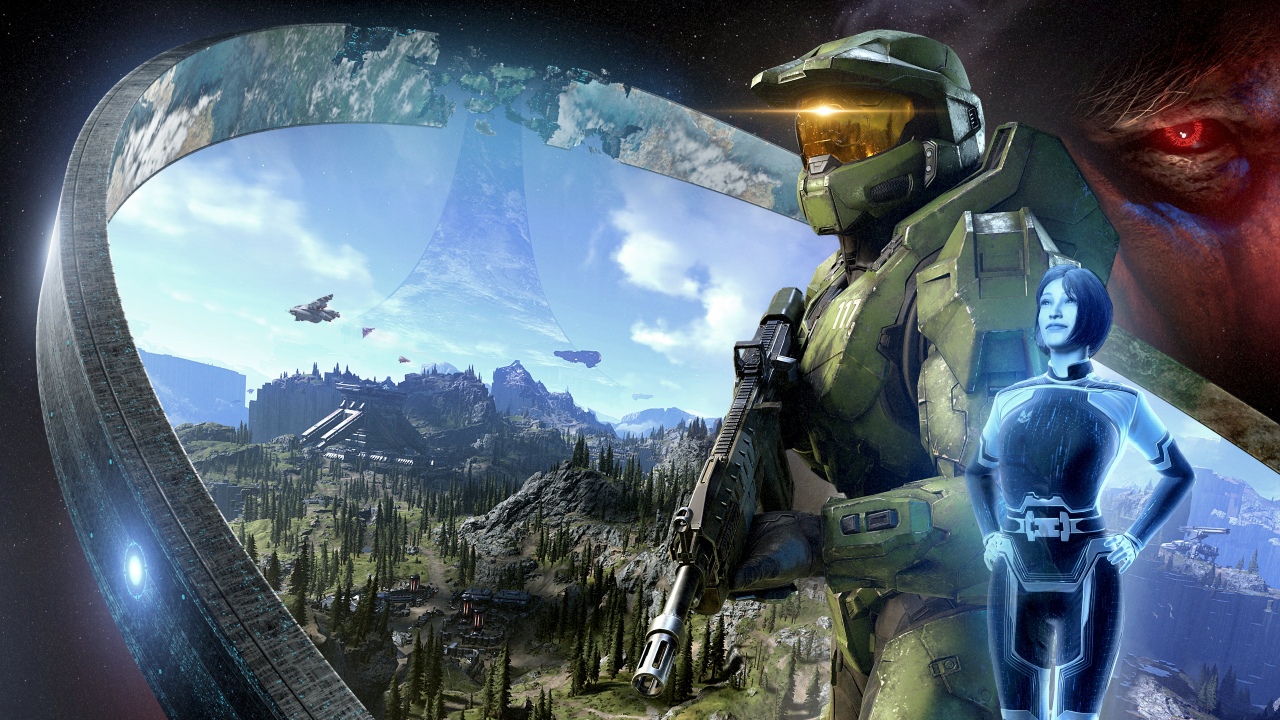
campaign launched, and the impression it left on fans was somewhat mixed. many critiqued the story, claiming that all of the interesting things happened before the game starts, or complaining that Halo 5's story was effectively being overwritten, despite this being a fairly common hope in the fandom. the open world was fine - nobody seemed to complain much about that, but it also didn't have much going on that inspired strong reactions out of people, either. you still saw the occasional snipe over a lack of co-op or a fixation on the game's lack of diverse ecological biomes, but overall, reception seemed almost muted and neutral within the community, as if complaints about multiplayer were taking oxygen away from any significant discourse about if the single-player content was really good or bad.
with the campaign being what it was - a single-player experience with only so much content to unpack - it drifted out of the broader fandom discourse fairly quickly. all eyes were on multiplayer, and 343 Industries began making a few lateral moves to try and address concerns at a lower level, through additions that wouldn't disrupt the flow of developing new content. new playlists were added into permanent rotation, experience was tweaked such that you could level up once per day through any level of participation in six matches, and store prices began skewing lower, although still perhaps walking the fine line of what i would call reasonable. many of those complaining about a lack of progression found themselves suddenly finished with their battle pass, and events proved to be fairly small in scope, generally introducing a new mode into rotation along with a temporary 'event pass' consisting of 10 free levels of cosmetics. again, the narrative around Halo Infinite mutated - "there's nothing to grind for, so why should i play Halo Infinite?"
PART FOUR: THE PROBLEM WITH LIVE SERVICE
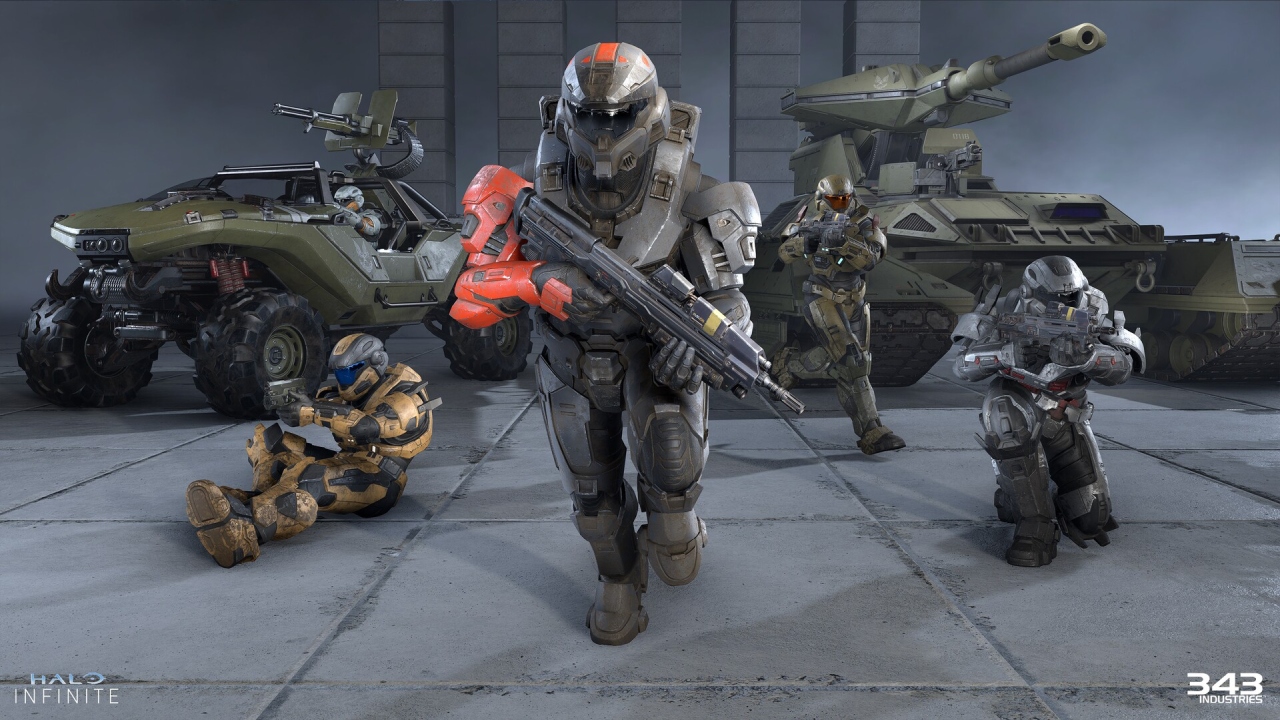
as Season 1 continued, complaints around Halo Infinite steadied out, to some extent - less of an explosive reaction out of fans, but a general disdain over the pace at which features were arriving. from week-to-week, you could see the pendulum swing back and forth with the multiplayer's capstone rewards. if they were 'low effort', people would protest that they had 'no reason' to play the game for the week, but anything 'too good' saw complaints that 343 was keeping items away from players and deploying FOMO (fear of missing out) tactics. challenges themselves were also highly scrutinized, even when intentionally tuned towards easier tasks, such as completing 5 matches in a particular mode, or earning 10 kills with a basic starting weapon. the developers tried to stay on top of these complaints and emphasized that short-term changes were not the end of the process, but the tone amongst the community was getting unavoidably negative in terms of the overall impression of Halo Infinite.
one of the larger missteps in the first few months was a networking glitch that left Big Team Battle out of commission for a few weeks over the end of the year, which definitely didn't make matters any better, but once the holidays were over and the team could get back to full-time examination of the netcode, the matter was resolved. even beyond this major incident, the subject of netcode in Halo Infinite has been an infamously touchy one for the fandom, with many players bemoaning 'desync'. to this end, 343 Industries released an extensive report on how their online matchmaking works, and, to be quite frank about it, essentially had to explain the framework of how online multiplayer works for any given video game.
my opinion on this is undoubtedly biased - i have never experienced desync in Halo Infinite. i live in a region where it's not difficult to find matches with solid connections. i am sure that for someone who feels like they've experienced this hands-on, it's very frustrating, and i don't want to downplay anyone's experience being diminished by feeling that the game is performing unreliably. where i personally take issue with the debate around desync is in the hyperbole of it all - i don't think Halo Infinite has magnitudes more lag than any other modern online game, and i find that those who claim it makes the game 'unplayable' seem unwilling to examine the factors that create lag in video games.
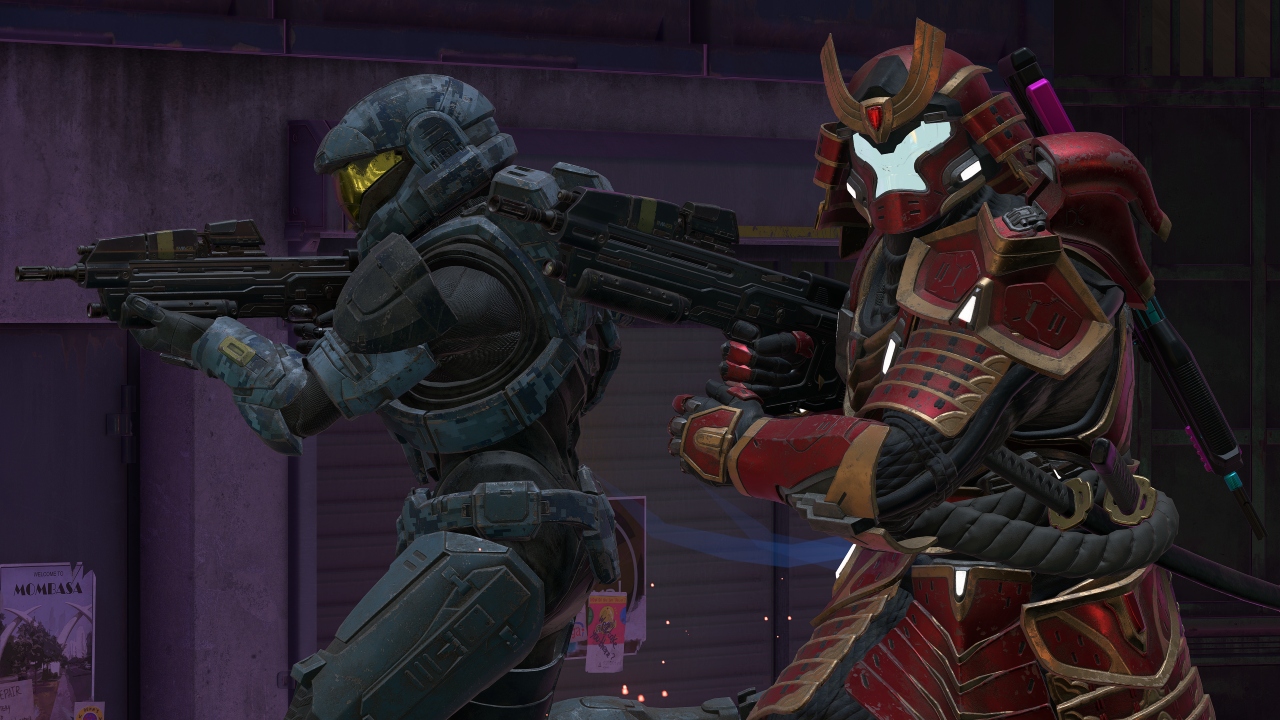
the unfortunate truth of any online game is that, yeah, if you happen to live in Australia or whatever, solid connections are going to be harder to come across, and that's not necessarily Halo Infinite's fault - i just think people might notice it and feel stronger about it due to the game's competitive nature. the way 343 Industries explains the issue, to me, reads as though they're laying down pretty basic principles about how online games compensate for different levels of connectivity, principles that i thought most people kind of understood and made their peace with several years ago.
this felt like a fairly common cadence of interactions between fans and 343 Industries as Season 2's release at the start of May 2022 got closer and closer. players' frustrations would boil over - often headed by YouTubers who, by the nature of the algorithm that helps them ride the thin line of profitability, are incentivized to emphasize controversy and conflict - and 343 Industries would find themselves on the back foot, having to explain that, yes, video games have lag, yes, they're still working on those features you want, and yes, they hear all the feedback flooding in at them.
March 2022 represented the first major communication on what would be arriving in May with the release of the newly-titled Season 2: Lone Wolves. the blog post announced two new maps, new armor cores, and began laying out the 'theme' of Season 2, with new characters who would be involved in 'narrative events' for multiplayer. this blog post also came with the announcement of a delay for co-op, with the developers noting that creating co-operative play for an open world sandbox is vastly different from doing so for a linear title like previous Halos. the part of the blog post that still sticks with me the most, both personally and as a piece of the larger narrative around Halo Infinite and its fandom, is the introduction, where the team re-emphasizes their priorities when it comes to developing a live service game.
I'm here to answer two questions that we know are top of mind for the Halo community: "What is the Halo Infinite team working on right now?" and "When can we expect new content and features?" I'll start with brief answers, and then get into more detail, including sharing some new info on what's coming with Season 2.
This is the focus of the Halo Infinite team, in priority order:
1 - Addressing issues negatively impacting the player experience.
2 - Completing Season 2 and delivering it as promised on May 3rd.
3 - Continuing work on Campaign Co-Op, Forge, and Season 3.
We also have a "Priority Zero," that undergirds everything we do, namely: team health, with an emphasis on getting ourselves into a sustainable development rhythm so that we can deliver great experiences to all of you while keeping a healthy work/life balance.
Priority Zero means that we sometimes need to move slower so that we can move faster later. Frankly, these last few months have been slower than we expected, and we sincerely thank you for your patience as we stay true to the priorities, above.
- Joseph Staten, from 'HALO INFINITE UPDATE – MARCH 2022'
the community was constantly demanding stronger communication and transparency, and, at least in my opinion, that's what 343 Industries attempted to provide - an understanding that they recognize that things have been moving slowly, but that they're committed to team health above all other things and that sometimes, progress comes in the form of laying down foundations for more robust additions later.
i think now is a useful point in this rambling essay to take a bit of a reality check and recognize something - companies are not your friends. i'm not writing this with any intention to defend the broader corporate structures of 343 Industries or Microsoft. often times, when a company is telling you what you want to hear, it's too good to be true, and it's a very good impulse to look at anything like this with skepticism. where i diverge from that kind of thinking, in this case, is on two fronts.
the first front is that this communication does not come across as anyone trying to have their cake and eat it too. nobody at 343 Industries seems to be attempting to say that they could instantly tackle negative feedback and maintain a healthy work environment. there is an implicit sense that this is hard news to be broken to fans, but necessary news nonetheless about the realities of creating and maintaining a modern live service game.
the second front, then, is how fans of Halo took this bad news, which was incredibly poorly. many bemoaned that there were only two maps being released after a six-month wait, and even more criticized the decision to delay co-op, once again looping back around to that familiar refrain of "all these other games had this, so why can't Infinite?" and downplaying how changes in game design can make feature implementation harder. at times, you could clearly see a tendency to try and talk 'around' the team's priority for health, as if they could bargain their way towards an 'acceptable' amount of crunch to put the developers through to make the game better.
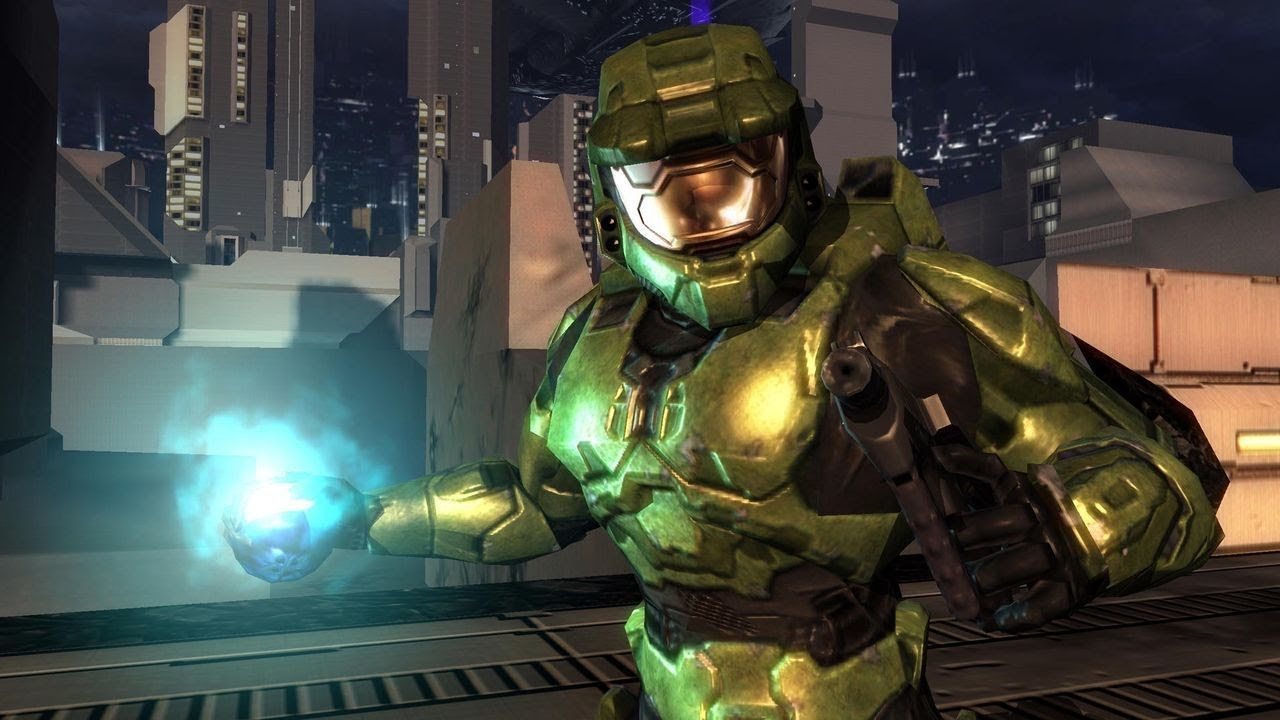
an important piece of the puzzle around team health in Halo is that the series is infamous for some of the hardest, most public crunch in the history of the video game industry. Halo 2 is notorious for coming in hot. with its 2004 release window rendered an immovable hurdle by the incoming launch of the Xbox 360 the following holiday season, the team at Bungie was forced to create the finished game in a little under a year - an outwardly impressive E3 demo had been a nightmare internally, and the game's graphical engine had to be essentially recreated from the ground up afterwards. Halo 2's iconic multiplayer, as relayed by designers years after the fact, was essentially a side project to what would have been a larger, more Battlefield-esque experience. this side project, nicknamed 'the party game', had to be immediately brought up to the front as development on the game's 'true' multiplayer stalled. Halo 2's story infamously ends on a massive cliffhanger because ultimately, the team had no time to finish their fight.
Bungie had to cancel multiple new games in order to get all hands on deck for Halo 2, and even then, developers were going so far as to live in their offices, sleeping under their desks and, in some extreme cases, irreparably damaging their marriages to finish this game. Joseph Staten himself would have been present first-hand for a lot of this, so i can only imagine that he, more than most, would understand the importance of creating a sustainable development environment. if you want to hear more for yourself, the details aren't some shameful secret - there's plenty of sources covering the process, including an excellent article from Waypoint (now fully absorbed into parent company Vice) called The Complete, Untold History of Halo which i cannot recommend enough.
historical lessons aside, the mounting frustrations in the community only continued as Season 2 got closer. at best, it seemed like fans were willing to selectively overlook 'priority zero', and at worst, you would see people argue that perhaps a little crunch is necessary for the sake of consumer satisfaction, or, as i said, trying to bargain around it, saying that they just needed to throw more people and more money at the problem to make it go away. even before the previously mentioned March 2022 update, a common refrain amongst fans were demands for a roadmap.
roadmaps have become a pervasive symbol of the modern 'game as a service', laying out long-term targets in an easily digestible forward-facing marketing graph. the reason Halo Infinite didn't have one at the time, as related by the developers, was a desire to ensure that any targets being provided could be relied upon, with goals achievable under the current framework of their development pipeline. it's not that Halo Infinite didn't have content coming, it was that the developers were savvy enough to know that unexpected problems come up all the time in the process of making games, and that any target would need to be solid, as delays would inevitably lead to an even more volatile community.
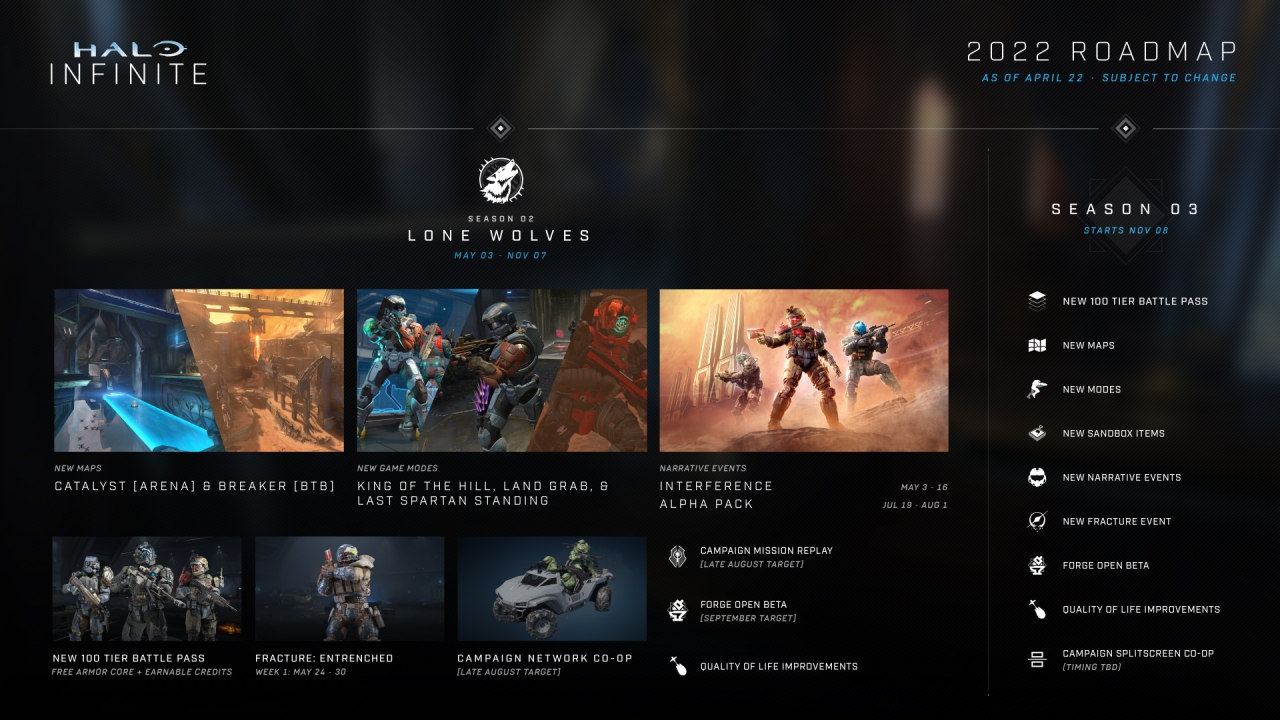
the April 2022 update would bring people the roadmap they had spent months demanding out of the studio, and it once again came as a tough pill for many to swallow, as Season 2 would end up lasting six months rather than the initially planned three-month cadence. many of the features that had been hot button issues amongst fans would still launch at roughly the same time that they would have on a three-month seasonal rotation - i.e. an open beta for Forge was still listed as due for September, which was always the plan, regardless of the strict seasonal label - but nonetheless, people went ballistic. on the campaign side, co-op was split down into two broad components, with online co-op targeted for August and local splitscreen listed as a feature for Season 3. many swore this kind of roadmap would 'kill' Halo Infinite, pointing heavily to the fact that the game would have only received two additional maps by the time it had crossed its one-year anniversary.
this roadmap also announced the next major form of communication fans would receive from the studio - a livestream on the following Wednesday going over Season 2 in greater depth, covering its battle pass, narrative framing device, and the three new modes coming to multiplayer. these types of streams had happened a few times now, namely around the game's multiplayer testing, in a dedicated recording space at 343 Industries - which, side note, never quite been sure what's up with this room. is that camouflage print or a bunch of fake leaves behind them? where does the wall end and the floor start? what's with that football helmet in the back?

anyways, i'm not going to recap this entire one-and-a-half hour livestream here, but there are a few key moments worth pointing out for how the fit into the ongoing discourse around Halo Infinite and how 343 Industries has attempted to respond to feedback. the first is a long segment in which community director Brian 'ske7ch' Jarrard sits down with Joseph Staten to talk about what the team's goals with Season 2 are, with discussion around how the team plans to implement more frequent mini-updates (nicknamed Drop Pods, after the ODST vehicles from Halo lore) to address quality-of-life concerns between major updates, or how certain features like a more traditional progression system are on the team's mind as long-term goals to work on. the most prominent and telling moment, however, was this -
Well, one thing to make really clear; none of us inside of 343 look at this roadmap and are happy with it. All of us want to be doing things faster, to deliver more content. You know, we still have this desire to get into a rhythm - a healthy rhythm - where we can ship a season every three months. So, for us internally, it was painful, frankly, to communicate this roadmap with a season that was gonna run for another six months.
- Joseph Staten, from 'Halo Infinite | Season 2 Community Livestream'
this conversation continues and goes over points like how the team tries to prioritize their short-term and long-term goals, but i think the quote above really sums something up - 343 Industries has been fairly candid about the fact that they know their game has shortcomings. and honestly, of course they do. those developers, probably more than anyone else, are hyper-aware of what people want out of Halo. it is their entire function as a studio to guide the franchise and they are receiving constant input from an incredibly vocal fanbase.
the other section that i would put focus on is around customization and what players can earn. challenges and store prices are being tweaked, the team is working to begin breaking down the walls of armor cores to allow for more mixing and matching, but the notable story to me is a shift in the battle pass - Season 2, unlike the first, would contain in-game currency on its paid track, allowing players to earn back the same amount the pass itself costs. they acknowledge within the stream that this is 'industry standard' for battle passes in other games, but also note that Halo Infinite didn't have that at launch because unlike those other games, its passes don't expire. other games are generally capable of eating these losses specifically because of that time limit, but Infinite doesn't have that.
so just to sum it up - on top of having lengthened seasons and an ever-increasing pace to progression as players continue to complain about challenges, Infinite has a permanently available pass that pays for itself. unless something in this set-up bends or breaks, the $10 that myself and thousands of other players put into the Season 2 battle pass is the last battle pass we'll ever have to spend real-world money on.
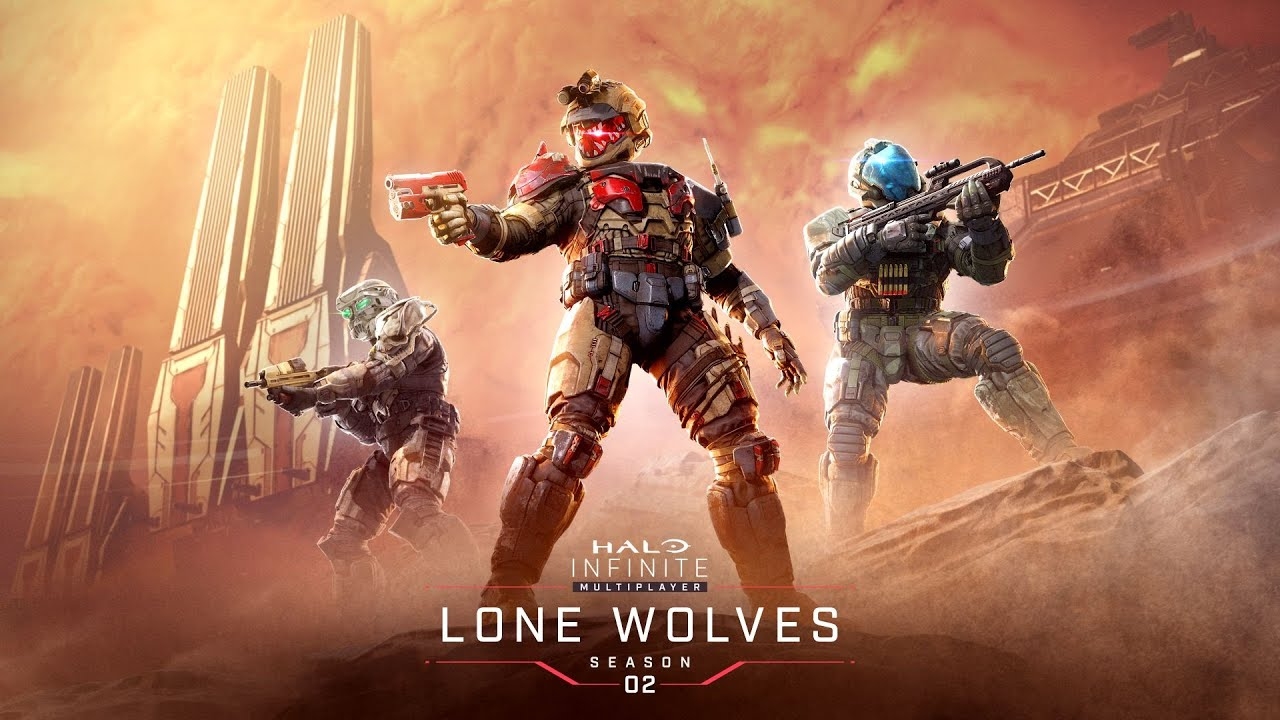
the livestream quelled a bit of rage from the fandom for a brief time, but it wouldn't be long before Season 2 released, and with the update in players' hands, it was sort of inevitable that people would latch onto new issues. in the days following Lone Wolves' launch, it was a bit of a death by a thousand cuts from different corners of the community - pro players were outraged that 343 would patch out unintended map geometry without consulting them first, campaign players were outraged that 343 would patch out an unintended superweapon, and casual players grew frustrated with the update's new Last Spartan Standing mode, primarily because with its elimination-based gameplay, it didn't always immediately register completed challenges.
it didn't matter if people enjoyed the new maps and modes that had been added, or that several improvements to progression had come to fruition, making Halo Infinite's battle pass both incredibly low-investment and relatively easy to clear in a matter of weeks. Season 2 was swiftly and loudly written off by the community as simply not being enough, and they made sure to let anyone with a passing interest in how Halo was doing know just how dead and unsalvagable the game was, which is definitely a good way to attract new people to your hobby.
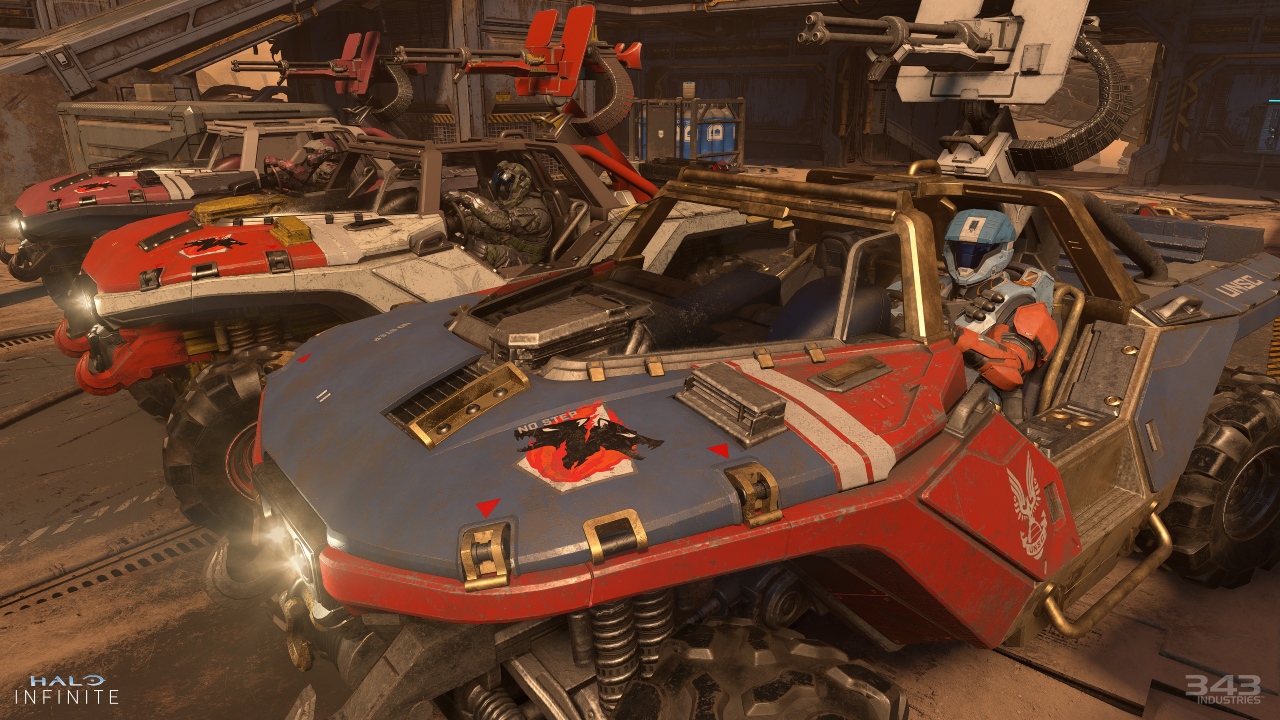
as of this writing, we are in the last few weeks of Season 2, and while we'll continue to dig into how 343 Industries has communicated about their game and what's on the horizon, the actual status of the game on a day-to-day basis has been relatively steady. events have rolled in and out, store prices have remained lowered with only a few exceptions, and the game has received a handful of the promised 'Drop Pod' updates, bringing in features like better challenge visibility or the very early beginnings of tearing down the boundaries between armor cores. Last Spartan Standing is already gone, unless you happen to find a group of people playing privately - the stats were showing people didn't want to play it, yet despite this, the second its removal was floated as an option, you had people coming out of the woodwork to talk about how Last Spartan Standing was so good, and how 343 must be making some kind of huge mistake.
one of the more notable community developments was a test of online co-op play for campaign, offered through the Insider program. i didn't participate in this testing, but my understanding from the outside is that it went off without a hitch; some people have complained about 343's solution to open world co-op, where players are reined within a certain distance of each other, but the actual networking seems to have worked fine. the actual co-op, however, was ancillary to this test's impact on the community, because whether it was intentional or not, the Insider build also included a semi-functional build of the game's upcoming Forge map editor.
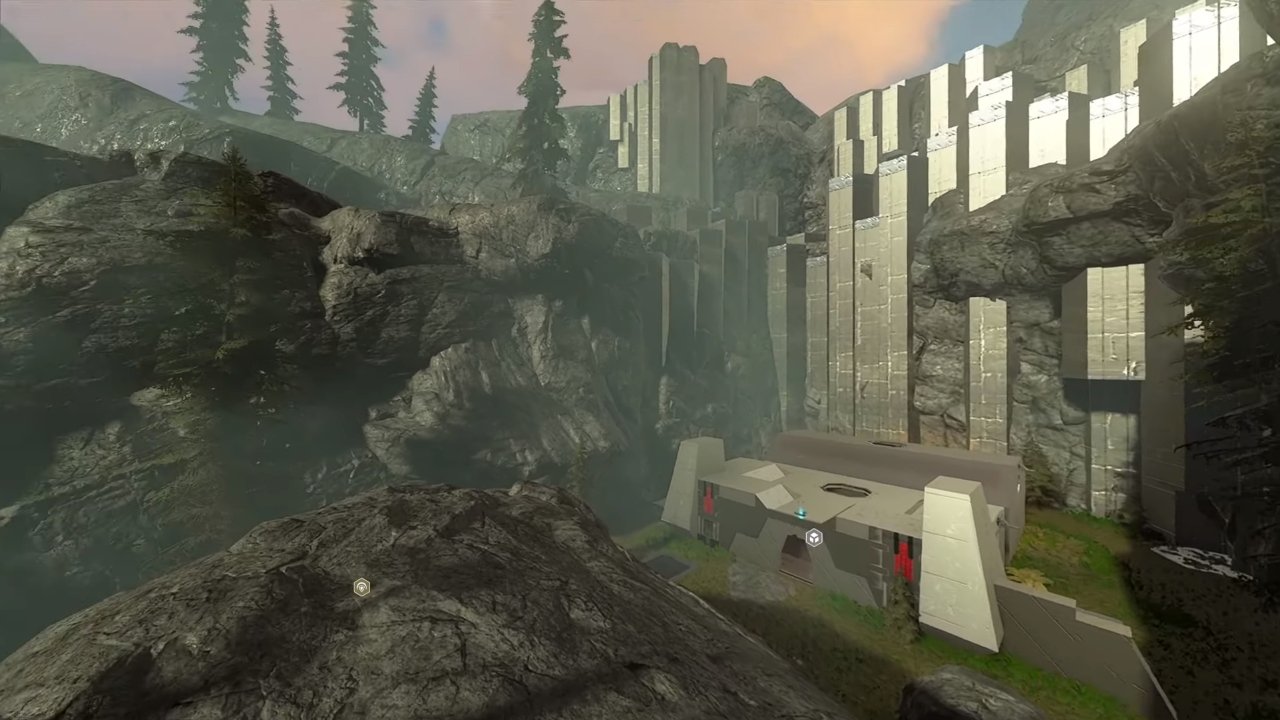
it has quirks and limitations - certain features like advanced lighting are unavailable, saving maps requires some intensive makeshift solutions, and the blank canvases meant to go with Forge aren't present - but other than that, the editor's in solid working order. once dedicated fans cracked the code of saving their maps, the community suddenly had a window into the game's future. only a select few people had the necessary builds and proper knowledge of how to utilize them, but those select few got to work immediately, showcasing all kinds of incredible maps. 343 saw all this, and seemed fine with it. why bother putting your foot down when this is building excitement in the community around what Forge can do?
the downside to all this, then, was people trying to fit the excitement of Forge into their pre-conceived notions that Halo was doomed to failure by the people who were making it. the narrative quickly became that Forge was going to be Halo Infinite's sole saving grace, with some going as far as to say that, since players made these maps, that only those players deserved any goodwill for 'fixing' the game, that 343 Industries was planning to leech off the good will of user-generated content. i certainly think there's a conversation to be had around the effort fans put into creative tools like Forge, and what the best practices are when it comes to the developers giving these passion projects a platform, but when people establish an outright hostile sense of ownership over Forge, using it to throw around claims that it's "pathetic" that fans make more maps than 343, something about that balance doesn't sit right with me.
to close out this overview of Season 2, i want to rewind to a bit before that co-op test and talk about an actual grievance i do have with 343 Industries, one that is worth highlighting for a lot of reasons. it is fairly common for 343 to pay some basic lip service to real-world observances - things like Mental Health Awareness Month, or Women's History Month - by including some small trinket for players who log in, like an emblem or weapon charm. for Juneteenth, a day celebrating the emancipation of slaves in the United States, players received one of these free emblems. on the surface, it was just another surface-level gesture; not exactly above and beyond, just the routine acknowledgment that they would give any similarly scaled holiday. the issue, then, is that in Halo Infinite, the palettes assigned to emblems have names, and the Juneteenth emblem's only palette, in the colors of the Pan-African flag, was labelled 'Bonobo', as in, a species of endangered ape.

several people at the time said things like "i shouldn't have to explain why this is so bad", and i do agree, but i still will explain it anyways, just so it's down in writing here; comparing black people to apes is abhorrent and wrong, drawing on centuries of loaded racist iconography.
a fix came as swiftly as 343 Industries could roll one out, renaming the emblem's palette to 'Freedom'. Joseph Staten and Bonnie Ross both publicly apologized, while community manager John 'unyshek' Junyszek offered up a brief explanation, saying that the name refers to an internal toolset and that the palette had mistakenly pulled the name of the toolset in as placeholder text. that's about all the official communication we ever received on the incident, and it was hotly debated at the time whether or not the explanation being offered up was legitimate.
Bungie did have a tool named Bonobo, which received that name because it was the successor to tools like Guerilla and Sapien, but insider reports are conflicted on if Halo Infinite uses that toolset, and whether or not its name could have accidentally been pulled as a string of text. the best, most good faith, generous assumption anyone can make is that this was an incredibly unfortunate mistake that somehow got past any form of oversight. the worst case scenario - one that is entirely possible, and just as likely if not even moreso - is that there were enough people in the process who think alike for someone to get away with slipping a racist 'joke' into an update.
whether the answers being provided were true or not, many people were rightfully upset by this. amongst Halo fans, though, there was an unfortunate tendency to use the incident as an easy 'gotcha', pointing out how quickly it was fixed when other issues seemed to go unattended. this is an incredibly difficult moment in the discourse for me to try and parse - i don't want to (and, quite bluntly, shouldn't even try to) sit here and draw lines on what types of frustration are 'okay' when 343, intentionally or not, allows racist terminology into their game. what i do feel comfortable saying is this - i'm disappointed that there's an entire blog post outlining desync, but not one for the Bonobo incident. i'm disappointed that fans have continually put pressure on 343 Industries to be transparent about basic operational aspects of their game, but not this incident. it speaks incredibly poorly to the skewed priorities of the community when there's stronger calls for 'accountability' around lag in a video game than racism.
there is no real 'good' way to segue out of this one, to go back to talking about this game from the perspective of someone who thinks the community could stand to cool down about certain issues, when there's such a heavy one that essentially went by with only bare minimum attention. i still have plenty of points to make about the fandom, though, and we still have a little bit further to go before we catch up to present day and i can start unpacking the reasons this essay exists in greater depth and detail.
PART FIVE: THE PROBLEM WITH COMEBACKS
after the co-op testing, things went quiet for a while, with fans' attention centered squarely on what autumn would bring, with an increasing amount of leaks showcasing what appeared to be fairly complete upcoming weapons and equipment, extracted from the same test builds people were playing Forge on. as August progressed, it became clearer and clearer to anyone thinking critically that co-op seemed to be missing its target date, despite what looked like an outwardly successful testing phase. at the end of the month, 343 Industries finally broke their silence and announced a presentation for September 1st to talk about the coming months of the game. frustrations were once again reaching that boiling point, but this time, bolstered by the inside knowledge of what could be coming so soon. September 1st was heralded as THE make-or-break moment for Infinite's future, just as every other bit of communication had been heralded as determining the entire life or 'death' of this game.
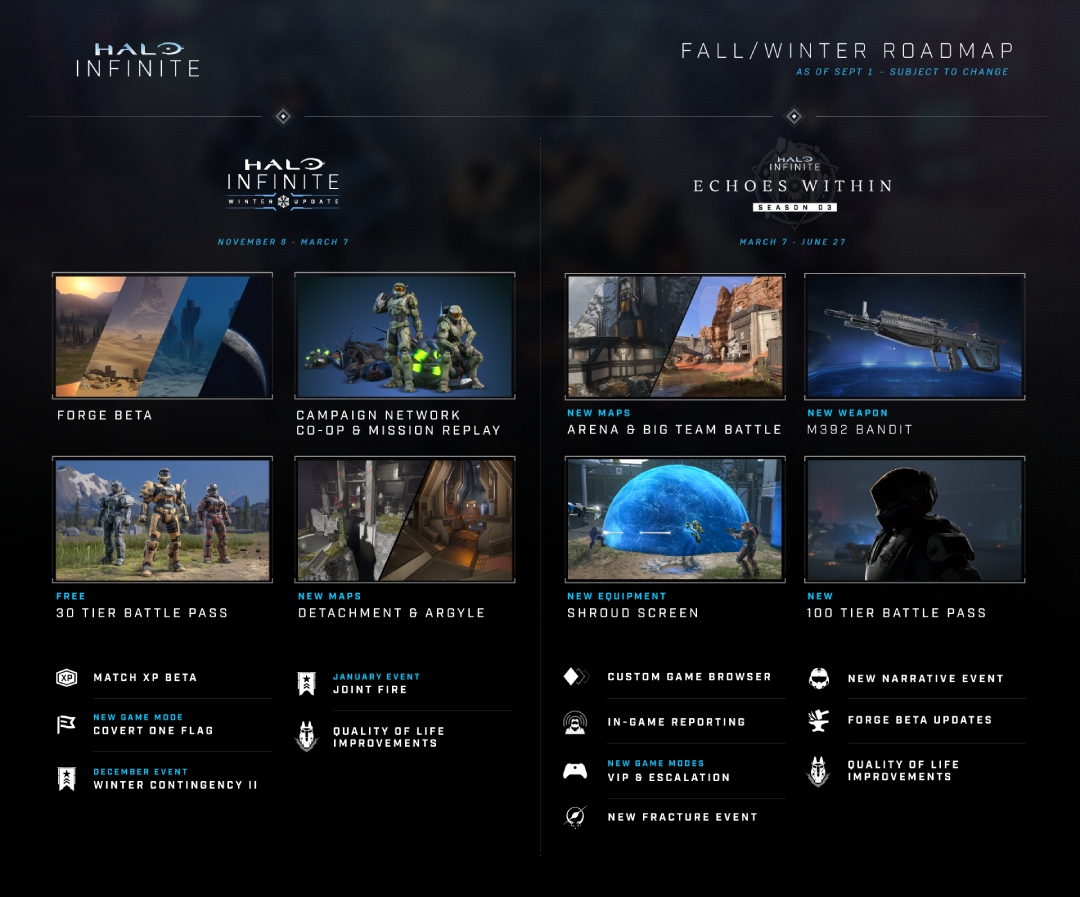
the morning of September 1st came, and just a little while before 343 Industries could get their presentation uploaded, leakers snagged the relevant images from their site's API, including a rough outline of the information being put forward. the solution for the next few months was an odd one - November 8th would bring not a full-fledged Season 3, but a 'Winter Update', containing the major features of campaign co-op and Forge, along with a free 30-tier battle pass, two new developer-produced Forge maps being rotated into matchmaking, and the much-anticipated addition of match-based experience points, moving players' ability to level up away from specific challenges and more towards simply playing the game and performing well. Season 3 proper would then begin in March, with the addition of the leaked new weaponry, two full-scale new maps, and a 100-tier battle pass.
the decision to split the content up into two separate updates makes sense to me, but the labelling quickly opened 343 up to the low-hanging fruit critique that Season 2 would, technically speaking, be lasting nine months. it didn't matter that the game was receiving the exact type of mid-season major content drop that many had asked for, bringing in some of the fandom's loudest requests, because it was easy to take potshots at a live service game where Season 3 wouldn't be starting until 15 months after launch. many at the time pointed this unforced error out, but even more were ready to voice quick and easy vitriol and declare Halo Infinite to finally be dead for good for the hundredth time this year.
with the roadmap leaked and first impressions being fired around quickly, the only missing piece was the presentation itself, where Joseph Staten, Brian Jarrard, and 'head of live service' Sean Baron gathered in the lobby of 343's offices to have a candid talk about the coming months. they conveyed all the same information as the leaked graphic had laid out, about the Winter Update and Season 3, and went into some of the thought processes behind their choices. to once again pull directly from their words -
Again, I'll take a step back. When we were looking at how we could get to seasonality, we knew that if we tried to release Season 3 on November 8th, when Season 2 ends, that we would really negatively impact our ability to be consistent, the way we want to, at a high level of quality, for all of calender year '23. Like, we saw that. But we also knew that it would be - we would be missing something for the community if we didn't release something great at that time. So, we looked at what we could do, what we were - what we wanted to be able to deliver, we wanted to be able to show a little bit of what the service is going to be like going forward, and I think we came together with a really great update.
- Sean Baron, from 'Halo Infinite | Update - September 2022'
again, i feel the impulse to revisit that little reality check from earlier - if someone at 343 Industries is telling you that everything's great and that everyone's gonna get everything they want, then yes, you should be critical of where that information is coming from and why. but just like last time, this is not someone telling you that everything's going exactly the way everyone wants it to. these are people conveying that, yes, there are hurdles along the way in game development, that the Winter Update is a bit of a stopgap. the community was constantly demanding to hear how the game was going, and they were once again told the information they asked for, even if it wasn't what they wanted to hear.
all of this talk about getting on track with a more regular seasonal cadence quickly dissolved into background noise for die-hard Halo fans, though, based on a relatively quiet announcement just a moment earlier in the video.
Yeah, that's right. I mean, not only to go after this list of things that you talked about, which we're fired up to do, but to work on experiences that we're not quite ready to talk about yet, we have had to make the difficult decision not to ship campaign splitscreen co-op, and take the resources that we would use on that, and go after this list and all these other things that we're going to talk about in just a sec.
- Joseph Staten, from 'Halo Infinite | Update - September 2022'
i'm not here to try and rank the worst moments in the Halo fandom's recent history - i think it's a bit of a futile effort, because different choices are upsetting different sub-sections of the playerbase, and it's far too subjective to weigh broad genres of outrage against each other. in the moment, though, this felt like perhaps the thing. the thing that broke the discourse around this game, even more than it had already been broken down. i'm certain some of that is recency bias, but i can't help but think this particular moment encapsulates the dynamics between audience and creators that i've written this essay to discuss. i started writing all this down just about a week before the September update dropped, and the impact it had on the fandom burnt me out so badly that i didn't pick it back up in earnest until late October, in a mad dash to summarize this behemoth of a subject before the Winter Update throws new fuel on the fire.
i won't try and hide that i'm not the type of person burnt deeply by this loss of local couch co-op. it's a fun feature, yes, but i don't have any siblings, or any friends who i'd be sitting in the same room with to play Halo. the way the fandom broadly reacted, though, you would think 343 Industries had just announced they were planning an update that would corrupt everyone's Xboxes, call them an idiot, and burn their houses down.
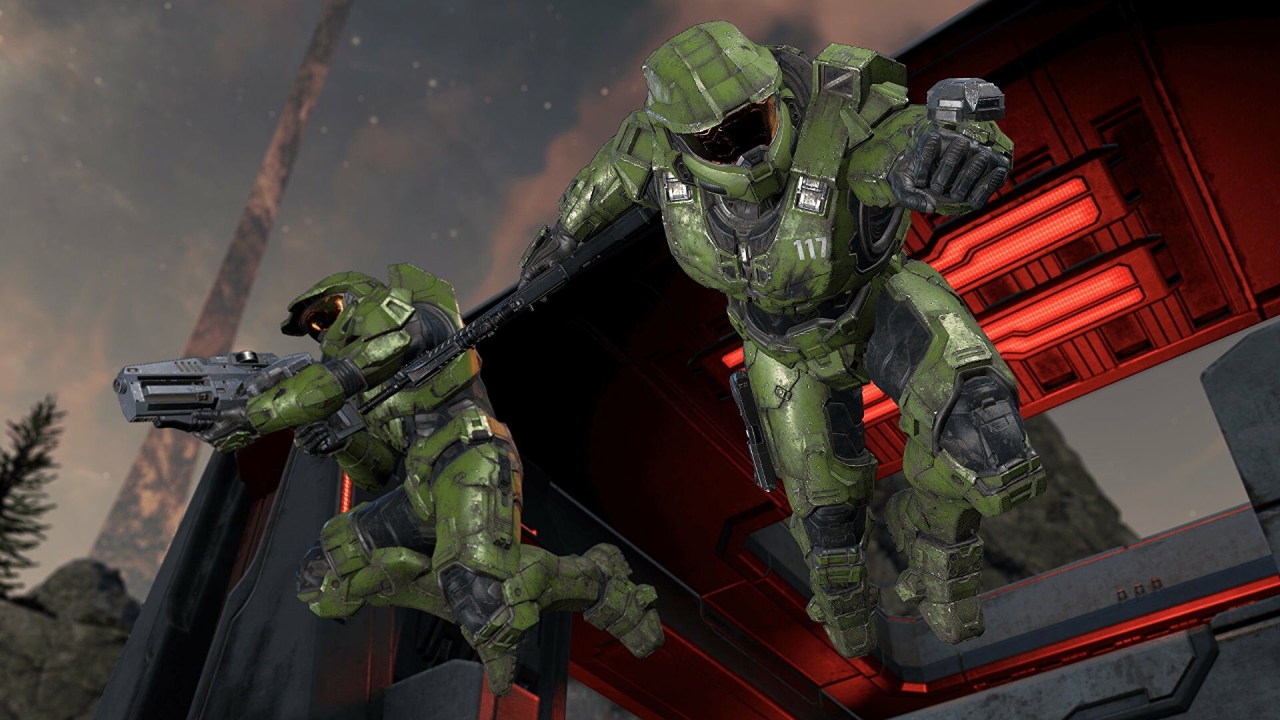
absolutely everyone had a take on it. some people relayed stories of their heartfelt promises to their spouse/dad/child/etc. that they wouldn't play Infinite until they could do co-op together, and how 343 had made them into liars. some people said that their $500 powerhouse console was worthless if it didn't have co-operative Halo. some went as far as admitting that they'd never actually use split-screen co-op in this day and age, but that 343 Industries had crossed some threshold and forsaken a core virtue of Halo regardless. quickly, all these groups rallied around one key point - Bonnie Ross's 2017 promise that all future Halo games would have split-screen.
some people eagerly dug their heels in on the pendatics of that promise by pointing out that Halo Infinite does support split-screen for multiplayer, but that's not the angle i'm interested in breaking this down from, because i think it's clear that the implications of Bonnie Ross's statement do cover the cancellation of local campaign co-op. i think if a high-level employee promises a feature in a product, then audiences do have a right to expect that feature, but i want to apply the same axioms i lay out with any communication from the studio - who is telling you this, and why?
Bonnie Ross had a storied history at Microsoft long before 343 Industries, long before Halo itself, with her first published game being Microsoft Full Court Press in 1996. over the years, she managed, produced, and published dozens of games, especially as Microsoft dipped its toes into the console wars with the launch of the original Xbox. in 2007, as Bungie prepared to exit the Halo franchise and Microsoft's ownership, it was Bonnie Ross who fought hardest to establish an internal studio to manage the property, in opposition to colleagues who saw Halo as a franchise on its way out, meant to be farmed out to external studios or left derelict. her argument won over her fellow general managers at Xbox, and she was put in charge of the newly created 343 Industries.

over the last decade, Bonnie Ross has been arguably the most consistent 'face' of 343 Industries, even as its creative staff cycles in and out. her name is well-known in the fandom, and in many cases, she's the lightning rod for people's vitriol, as if she is the sole reason Halo has faltered. i hesitate to chalk all this up to prejudice, but i will just say that i've seen empassioned rants clearly written about Bonnie Ross that accidentally call her Kathleen Kennedy, so, y'know, maybe keep that in mind as part of the reason this happens.
ultimately though, i think a major issue in people's reasoning is that they aren't correctly identifying the work Bonnie Ross does. as head of 343 Industries, she certainly does sign off on decisions about the games, yes, but 343 Industries does more than games. Bonnie Ross is a noted fan of the novels written in Halo's expanded universe, and 343 Industries handles all kinds of auxillary media like this. since Halo 5, 343 Industries is a major part of running the official Halo esports league, the HCS. at the same time as Halo Infinite's woes, 343 Industries was working with Paramount on launching a Halo television series that had spent the last decade in development hell - i can't necessarily stick up for the quality of that television series, no, but it's a thing 343 Industries has a part in managing nonetheless.
if it seems like i'm spending a lot of time on Bonnie Ross and what she does at 343, it's only because the fandom, in turn, spends a lot of time directing vitriol at her for things i'm not entirely sure are her responsibility. Bonnie Ross's job was to shepherd Halo, not just as a set of games, but as a multi-media franchise. i can't speak to her personal ability to program, but i don't think she's in there making any sort of notable decisions about how the game is coded. her promise of split-screen co-op was coming not from someone who makes these games, but from someone who manages them.
furthermore, we're talking about a promise made five years ago, at a time when Halo Infinite wasn't even announced, still trying to find a shape internally before anyone was even allowed to see it. whatever issues holding back local co-op wouldn't have existed yet. as far as i can tell, 343 Industries put in an honest effort to fulfill this promise, but when it came down to it, supporting split-screen campaign co-op in an open world game across the range of platforms Infinite runs on wasn't going to result in a product they could put in front of players proudly.
the work was put in, they gave it their best shot, it didn't work out. you can certainly argue that studio heads need to be careful about what they promise, and i'll gladly co-sign that statement, but when people insist they were intentionally, maliciously misled for five years and cheated out of something, it drags the discourse down to base emotional reactions rather than anything resembling a productive conversation about what anyone in the process can do better.
the split-screen debacle only grew as players stumbled onto a glitch - one that, to my understanding, had existed since launch, but was only 'rediscovered' by the larger community at this point - that allowed you to load into an unstable, but still semi-functional version of local co-op. i don't have first-hand experience with this glitch, but my understanding is that while it worked into a broad sense, there were absolutely issues that demonstrate why it wasn't in a shippable state.
framerates fluctuated wildly on anything but the strongest hardware, players could have their halves of the screen running on different day/night cycles, important menus were rendered non-functional, yet all people wanted to focus on was that split-screen was in the code somewhere, insisting that once again, fans were somehow 'outdoing' 343 Industries. even outlets like Digital Foundry, who pride themselves on technical know-how, took the rather confusing stance that despite all of split-screen's incredibly apparent flaws, it was "easily fixable", based purely on assumptions rather than taking the developers at their word about the game they made.
a few days after the glitch made the rounds, the next big piece of news surrounding Halo broke; Bonnie Ross was stepping down, after having helmed 343 Industries for almost 15 years. this plan was already in motion, with the intention being that she would leave at the end of 2022 once the Winter Update had launched, but a family medical emergency led her to step down early. you don't have to go all that far to find people speculating if this is some kind of cover story. even at its best, the discourse trended towards a tone of 'it's a shame about her family, but thank god she's finally gone, am i right?'. her role was effectively split into three components with her departure, with 343 Industries now having a studio head, a general manager of the franchise, and a third head overseeing 'business and operations'. this split is a testament to what i was talking about earlier, in terms of how broadly reaching Bonnie Ross's job title really was.
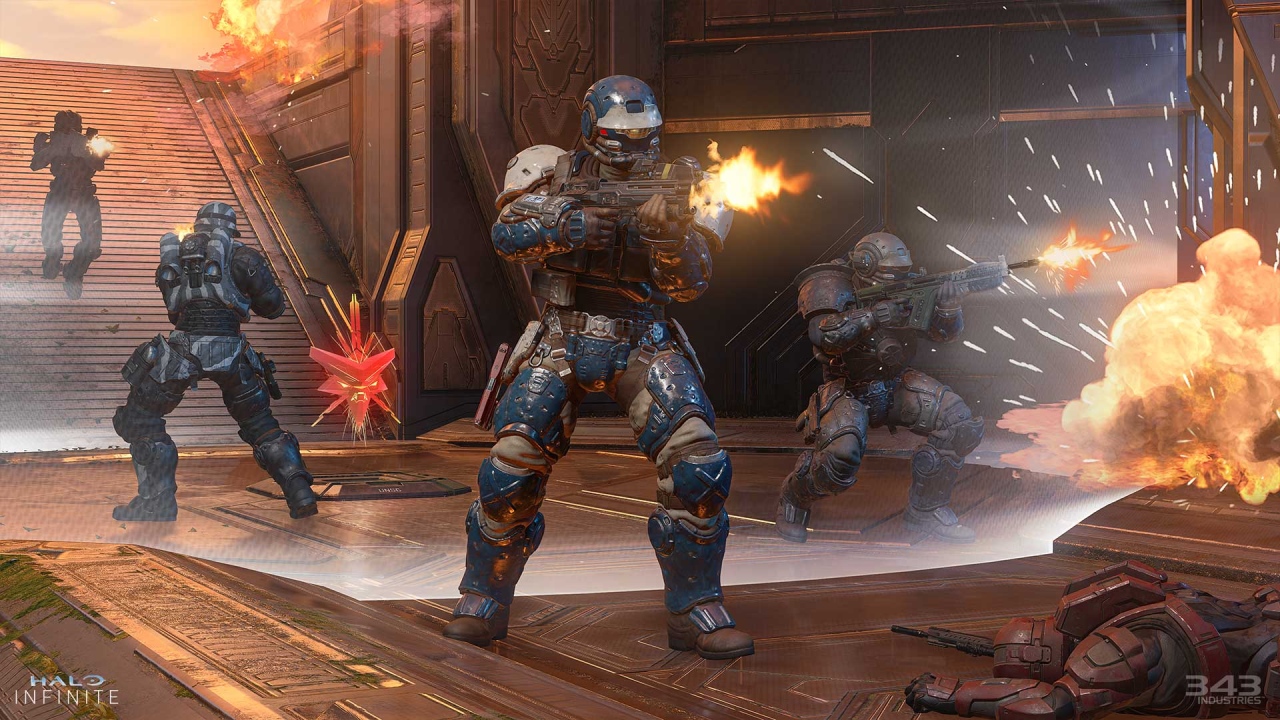
September and October have been kind of a wash. there's growing excitement, as Forge has taken the forefront both through official reveals and unofficial showcases from players using the leaked build, but so much of that excitement is cast under a layer of 'finally, 343 is letting us fix their bad game for them'. you'll hear the same refrain everywhere - about how Halo Infinite has good gameplay yet somehow that isn't enough, how Forge needs to be launched perfectly or otherwise this game will be really truly 100% dead this time, how '343 Industries is the worst triple-A development studio in gaming, if you ignore all those other places' abuse allegations and business practices', a real sentiment that real YouTubers making unimaginable sums of money actually say to their impressionable audiences.
the most baffling moments since the co-op debacle cooled down, to me, was the sudden and completely contrived rumor that Halo Infinite would be switching to Unreal Engine 5. for context, it's been known in the community for quite a while that Certain Affinity - a studio founded by Halo 2's multiplayer design lead, Max Hoberman - is working on something codenamed 'Tatanka', a battle royale-esque experience for Halo Infinite. details have been somewhat sparse, and the mode has seen no official acknowledgement.
my understanding of this messy rumor is that it started with someone putting forward the possibility that Tatanka would be a separate experience running on Unreal 5 as opposed to 343's proprietary Slipspace engine, but over the course of just a week, this rumor bounced back and forth in a game of tennis between sourceless influencers and insiders frantically looking for where this information was coming from. by the end of the week, the Halo community was somehow convinced by an influencer (with, as far as i can tell, no notable journalistic cred) that the reason Infinite had experienced such a content drought was because 343 Industries was secretly working to move the entire game to Unreal 5, in an attempt to relaunch the game alongside Tatanka and a campaign expansion.
i don't want to get too heated over this, but it is baffling to me the extent to which swathes of people - reasonable people, who i assume to have some basic level of understanding about video games - bought into this rumor entirely. for starters, 343 Industries has gone on record as saying that the reason they still use proprietary engines that are harder to learn, as opposed to easier software like Unreal, is because they've given it a fair shot internally and found the results to feel unfaithful to Halo's underpinnings. even if they hadn't though, the idea of 'porting engines' just isn't how game development works. i'm not claiming to be an expert either, but i feel confident when i say that you can't just plug assets and numbers from Slipspace into Unreal 5 and have everything work. it'd be like saying i'm going to rebuild my own home out of plastic - it ignores the practicalities of removing the existing materials, it ignores that plastic behaves physically differently to the stuff my home is made out of, and at some point, it develops into some Ship of Theseus bullshit wherein you can argue that i've simply made a different house.
even as the hype around this rumor proved to go up in smoke, you still saw people making quick and easy arguments about how Halo should just stop using the Slipspace engine and switch to something better. a common train of thought thrown around in these kinds of arguments is that since Microsoft is currently in the process of buying out Activision Blizzard, why not just put Halo on 'the Call of Duty engine'? or, hell, why not just hand Halo off to one of the Call of Duty studios entirely?
i imagine if you've actually stuck around this deep into the article - thank you, by the way - you can probably guess that i don't believe this to be a particularly good or realistic idea. i don't believe bringing it up is productive when it comes to discussing what can be done to make Halo a better experience. i don't like the way Activision Blizzard runs their studios, and i don't particularly even like that Microsoft is willing to spend so much on acquiring them and narrowing the industry down even further. in general, broadly speaking, i don't like the way discourse around video games as a medium is going lately, and i don't like the ways it impacts my ability to engage with a hobby i enjoy.

we're caught up now. there's plenty of smaller controversies that i didn't find all that relevant to the information i wanted to convey to you - such as when people got mad about Sean Baron saying "Halo has always been a highly competitive game", because how dare a developer say something that so clearly and blatantly devalues low-stakes social fun so much, right? - but if you've made it this deep and let it all sponge into your brain, i hope i've done an adequate job of painting a picture as to how Halo Infinite and the reactions surrounding it came to be the way they are. now that we have this working knowledge of how things have gone, i can finally crack into the juicy core of this essay - the state of modern games discourse, why i think the Halo fandom is the specifically fascinating case study it is, and why i think it's unsustainable for almost everyone involved, inside and out.
PART SIX: THE PROBLEM WITH FANDOMS
we have a working knowledge of the state of Halo Infinite now, but i've rather deliberately focused on specific moment-by-moment reactions as i try to recap a year's worth of back-and-forth between the developers and the fanbase. so, what do i actually think is 'wrong' with the Halo fandom as it stands today, when looking at the whole picture?
the Halo fandom is full of resentment. angry, poisonous resentment. it's gone way past critiquing a game; if Halo doesn't live up to their standards, it's a disaster. people resent the developers for what they interpret as an attack on a cultural institution, because if Halo used to be the biggest media property in the world and now it's somehow gotten smaller, that can only mean failure. developers are assumed to be incompetent, or doing all this very intentionally to somehow make more money, or both at the same time. people will gladly pay lip service to the idea that Halo Infinite is the best game the series has seen in over a decade, but in the same breath, they'll deride 343's efforts as pathetic and take easy potshots, or say that people are already primed to love Halo again and that any shortcoming is the developers catastrophically fumbling a supposed easy win.
i don't think it's a particularly fresh takeaway in 2022 to come to the realization that fandom culture has gotten out of control. you can see it almost anywhere on the internet, in all walks of media. when it comes to any property that has run long enough and reached a broad enough audience, you will have people who's interpretation of their connection to the work is one of personal ownership - they've been there for the brand, and the brand has been there for them, and they must know what's best for the brand, because they remember a time when the brand made them happier than it does right now, so if they could just go back to making the brand be that way, then it'd make them happier again, right?
i could write entire other essays about some of the phenomena that i personally feel have led to such an escalation of fandom culture in this direction - the rise of social media creating an expectation for creators to become more publicly accessible than ever, or the increasingly narrowing field of media conglomerates looking to make a return on investments by going for the safest, easiest routes of nostalgia - but in my opinion, all these issues are comorbid and they share a symptom.
they all lead to so-called 'true fans' who's main form of engagement with a work is to spew nothing but hate at the creators behind it, and then turn around and insist that this hatred is just the truest form of love for a work, that they only want to be constructive and help their favorite brand become better. this ideology, where true love for a work of fiction means to gatekeep it like your life depended on it, and where any perceived flaw needs and deserves your unbridled rage to be corrected, has disastrously impacted discourse all over the internet, in all kinds of fandoms.
Halo, for a variety of reasons, happens to be incredibly potent for this type of outrage. it is, for many people, the formative gaming experience of the 2000s, having grown practically omnipresent in its time. it's an Xbox exclusive, so it's also tied into the factionalism that is often outright encouraged between competing console manufacturers - if Halo's successful, then Xbox is successful, and that means that Halo fans chose the 'right' console to invest in and get to rub it in your face - and, while this one's a can of worms for another day, Halo is also inextricably soaked in the culture of its time, telling a story of a classic badass action movie archetype fighting a noble war against invading alien zealots at a time when in our real world, the war on terror was taking root in American culture.

if you ask a set of Halo fans where the franchise peaked, the most common answer you'll probably see is Halo 3. it makes sense; as we covered way back at the start of this thing, it was 'the biggest entertainment debut in history'. the first two games had laid the groundwork and built up a passionate fandom and sub-culture, but Halo 3 was the first game in the series to make a generational hardware leap, arriving on the already well-established Xbox 360 and promising to be the epic conclusion to the trilogy. the original game had helped get the Xbox brand off the ground, the second took the phenomenon global with its online multiplayer, and the third game in the trilogy really didn't have to do much more but iterate and expand on what made people fall in love with Halo.
i'm not here to do a full review of Halo 3 (although maybe ask in a few months when i'm recovering from the burnout of this gargantuan topic and i'd change my tune), but in short, it occupies an interesting space in the series' history, at least for me. i've played it rather extensively, but almost entirely through the lens of The Master Chief Collection, which undoubtedly skews my perspective on it. i wasn't participating in its 2007 heyday, but rather, in its shadow, in a world where it had already proven itself to everyone who cared.
it is perhaps because of this benefit of hindsight that i think the way i do - that Halo 3 is a game that wears its history on its sleeve, that feels like it was made in the wake of the self-destructive development of Halo 2. on the single-player side of things, it flattens out the previous game's more thematic elements and puts action movie bravado first, with characters constantly delivering what are meant to be show-stopping one-liners, with deaths that are meant to be read as tragic and heroic but fall flat in the face of these characters lacking any depth beyond a vague outline of their archetype. on the multiplayer side, it is absolutely still fun, but it's not reinventing the wheel, with its biggest apparent changes being the introduction of the equipment slot and a very rudimentary version of the Forge map editor that would become a mainstay in future titles. Halo 3 is, as an entire package, pretty good, but it's not here to challenge anyone's pre-conceived notions about what Halo's appeal is.

this all makes sense. as i said, Halo 3 very much feels like it was made by a team that endured the very material human costs of Halo 2's development, a team that saw that game's ambitions get trimmed back further and further yet still somehow launched something that secured an unprecedented audience. people complained about the Arbiter's half of the previous game's story, so he's relegated to a co-op character in 3. people loved multiplayer, so multiplayer stayed largely the same. Halo 3 is a victory lap, produced by a studio that was preparing a bold play for their own independence so that they could finally go back to making games that weren't Halo. it doesn't come across as careless or unambitious, but it does come across as reined in compared to its predecessor.
regrettably, i can't go back in time and play Halo 3 in 2007 for an objective view of what i would think about it in its own time, when it was at the peak of its success, the 'golden age of Halo' that fans bemoan as long-gone now. what i can do, at the very least then, is try to unpack what these fans say is missing from Infinite, to try and identify that secret element that made Halo tick 15 years ago and that is supposedly missing now.
a common point of contention is content; the idea that Halo used to come with more, and that we're being swindled out of basic, necessary content that was once seen as so standard that nobody would dare think of launching a game without it. a major facet of this type of criticism is maps, with players saying that Infinite becomes dull due to a massive lack of arenas to play in.

Halo 3 launched with 11 multiplayer maps.

Halo Infinite launched with 10.
i don't want to leave it there - as tempting of a 'gotcha' as it is, there is more worth unpacking. many will point to Halo 3's map packs, which arrived quicker than Infinite's first similar updates. looking at the release dates, though, i find it hard to gauge how consistent this 'advantage' really was - the first two packs, each containing three maps, came out two and six months after the game's launch, respectively. after that, a free map was given out for 'Bungie Day' in July. after that, nothing until February of the next year, when Bungie began rolling out the Mythic map packs, which were exclusively bundled with $60 spin-off games for several months until being made available for separate purchase.
i know it might be a little confusing of me to ask you to keep track of DLC release dates from over a decade ago, so i'll just be blunt about the point i'm making - the consistency with which Halo 3 received new maps was better in the short-term compared to Infinite's first few months, but i feel like claims that its overall support was far beyond Infinite are perhaps exaggerated.
a connected complaint, then, is the absence of Forge - by putting the tools in players' hands, the limit on how much content the game has isn't tied to the developers' effort, but instead left in the community's hands. therefore, if Halo 3 launched with the Forge toolset out of the box and Infinite isn't receiving it until the one-year mark, then that must be a clear and concise failure from Infinite's developers, right?
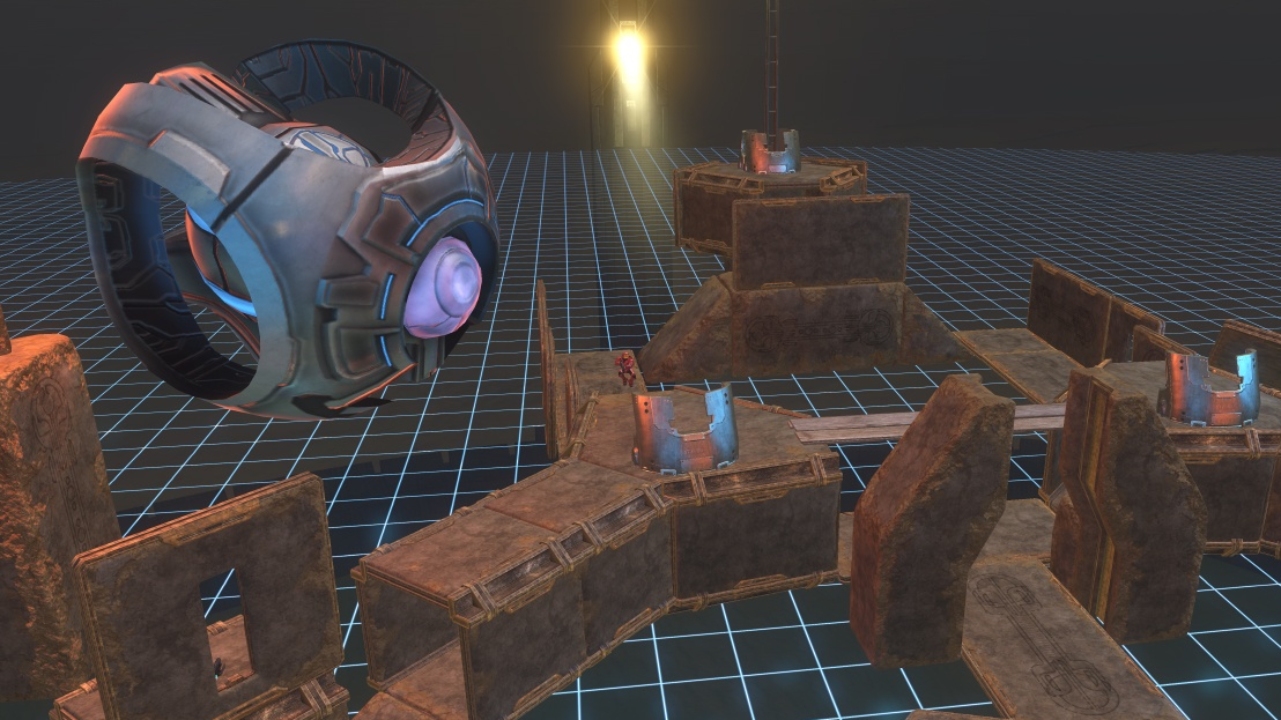
i find this train of thought to be, frankly, incredibly confusing. in Halo 3, Forge was designed as a way to let people play around with things like weapon or objective placement on the pre-existing maps; there were props like crates and explosives you could throw in to change the layout to some extent, sure, but it was essentially there as a way to open up the toy box of Halo to players. it wasn't until DLC started rolling out that maps like Foundry and Sandbox were added as intentional canvases for creating new playspaces using the Forge tools, and even then, the tools were fairly limited, with only a small selection of basic cubic shapes to fiddle around with.
with almost every game in the series since then, Forge has only grown magnitudes more complex. Reach introduced the massive Forge World palette with natural terrain for players to build much more complex arenas upon, Halo 2: Anniversary let players place their own terrain on blank skyboxes, and by the time Halo 5 rolled around, Forge wasn't making into launch, with how complex its toolkit had gotten. as post-launch support continued for that game, 343 went as far as including a rudimentary scripting language to allow players to add interactive elements into their maps. the Forge team for Infinite has described the newest iteration of the editor as being its own miniature game engine that ships inside of Halo, with the addition of a robust node-based programming language and complete developer-level control over spatial lighting.
this isn't to de-emphasize the experiences people built in Halo 3 - people fell in love with many of the community-curated custom maps and modes, with long-time mainstays like Infection and Grifball coming from player creativity and eventually making their way into mainstream matchmaking. Forge was already capable of great things back then, but to compare what it was in 2007 to what it is in 2022 is completely disingenuous. Forge has gone from a novelty to a full-blown secondary experience meant to give players as much control as the developers are able to cram in.
speaking of community-based support dovetails nicely into another complaint from those missing 'the good old days'; arguably the most pervasive, and the hardest to pinpoint to a single missing feature. many insist that the true key to Halo's success was its social aspects, all of the subtle systems in place to match players together and promote interactivity. fans look back fondly on heated but good-natured trash talk in the pre-game lobby, of downloading the latest Theater mode clips and passing them along to friends, of getting random invites from strangers to custom game lobbies where they could spend hours trying all kinds of Forge maps. the loss of these things is decried as one of the biggest shames around Halo Infinite, that the game's UI is 'antisocial' and isolates players too harshly.
i am not the most qualified person to dig deep into Halo's history with social features or its current lack thereof. these are the kinds of things that The Master Chief Collection has changed the most about the experience of playing Halo 3, both on a technical level and just in terms of what the current playerbase even looks like. it is here where that lack of a window back into the objective truth of 2007 is going to be felt the most, but i still feel like i have a hypothesis about what the deal is with Halo as a 'social game', and to really dig into it, we're going to need to go all the way back to Halo 2 and the birth of Xbox Live.
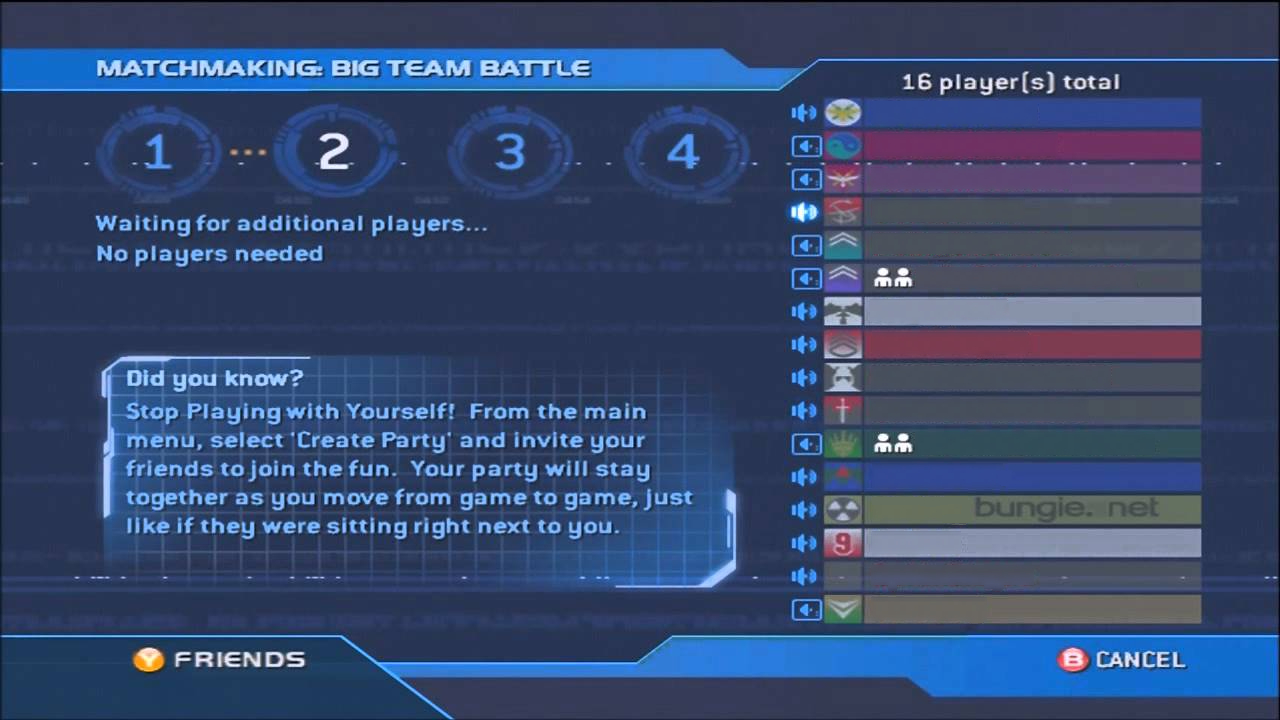
one of the many, many features Halo 2 had to effectively invent from the ground up to facilitate bringing the LAN party experience to millions of online players was the concept of 'proximity chat', where your vocal communications would be projected outwards in the 'physical' space of the game. if an enemy was hiding and trying to relay information back to their team, you might be able to hear them and get the drop on them. if you scored a kill and stuck around, you could get in a quick vocal jab to accentuate your victory. this, in a perfect world, sounds fantastic, as a way to make voice chat not just a secondary feature, but an ever-present part of communication within the space of the game itself.
in practice, it was 2004, and Halo's biggest demographic was teens and college-age young adults. with how big of a phenomenon these games were, it is impossible to try and judge the 'average' attitudes of a hypothetical player from two decades ago. all i can say is that quickly, Xbox Live and Halo 2 developed the same type of reputation as a lot of social forums for these demographics did - hyper-masculine, hyper-aggressive, hyper-offensive.
perhaps partially as a lateral move to try and stem this tide, Microsoft introduced a new feature to Xbox Live roughly a year after Halo 3's launch, by allowing players to use party chat, maintaining an invite-only voice channel between themselves and friends they had already grouped up with. social features still existed and the Halo fandom still embraced them wholeheartedly, but the wild west of Xbox Live wasn't going to last forever, and going into the 2010s, games slowly started trending away from these types of open lobby communications. by the time the Xbox One rolled around, many games' built-in voice chat was more of an annoyance than anything else, as new users didn't realize that the included Kinect was acting as a microphone, thereby picking up all the ambient noise of their room and leading to a swift muting from everyone else.
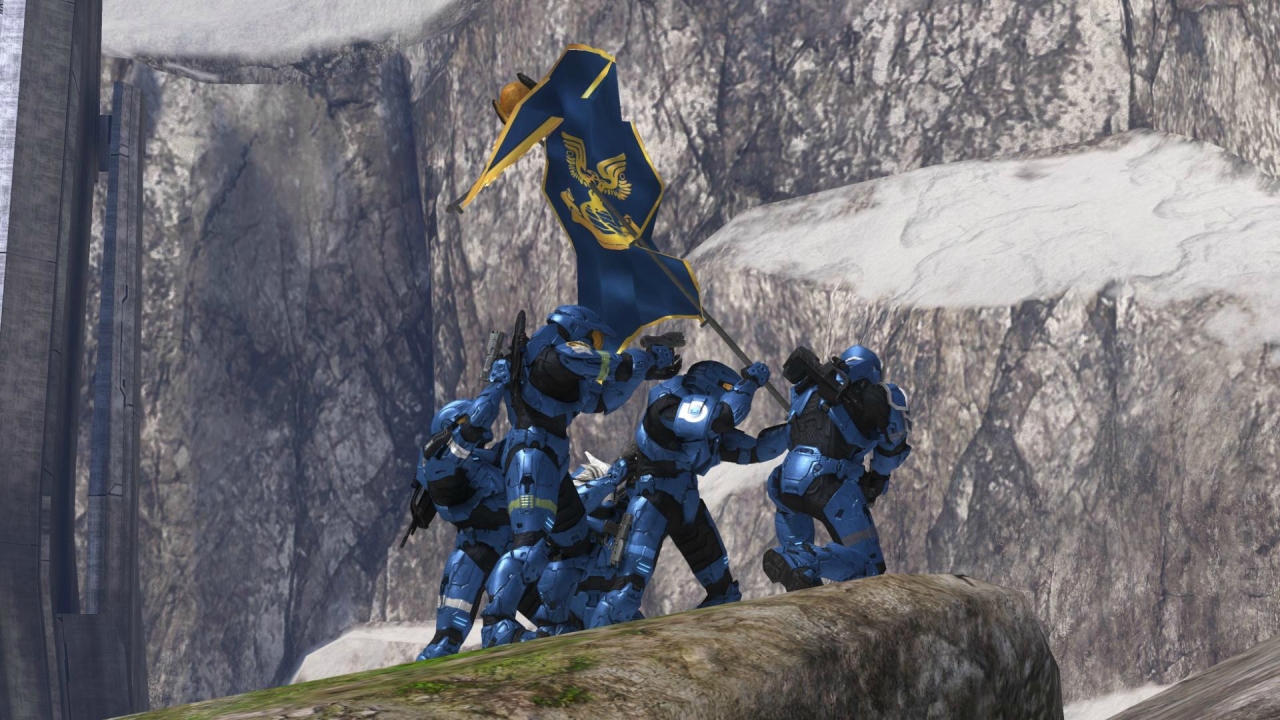
this type of social function to Halo was never really part of my enjoyment of it. as i've mentioned, i got into the series with Reach, and i didn't know many other people who stuck around with it - because not too long after Halo 3, Call of Duty 4: Modern Warfare launched and finally gave Bungie's games a run for their money. i came in on the downswing, and i'm more than willing to admit that those circumstances change how i think about the importance of these features. i would occasionally get an invite to custom games, sure, but i never felt like i fit in with my fellow players, so i just slowly stopped paying attention to that type of thing.
there is a tendency in the Halo fandom to mythologize the days of open lobby chats, when boys could be boys and when you'd find a worthy opponent, merge your party with theirs, and ending up playing until the sun came up. people say it was a revolutionary time, like social media before platforms like Twitter existed. to them, it's a crucial piece of Halo's downfall - that nobody dons the headset and communicates like they used to, back then.
i will absolutely agree that Bungie were visionaries for how they laid out new ways for players to interact socially, but i cannot begrudge modern games for lacking those features. i'm sure Halo 3 was a great time to be playing Halo if you fit in with the culture, but maybe there are parts of that culture best left behind. for every mythical story of the perfect brotherhood forged in competition, i'm sure there's just as many stories of people being put on the receiving ends of all kinds of verbal abuse and prejudice while trying to enjoy a game. maybe the answer to these problems isn't complete insulation, no, but i do not see a problem in developers deciding to let people stick with friends they trust rather than constructing systems that everyone knows are going to be used to spread all kinds of toxicity. if Halo 3 really was 'social media before social media existed', maybe it has some of the same reasons not to engage with it, too.
cultural disagreements aside - why would i ever want to use Halo Infinite as a social platform, when so many of the people i'd meet are constantly wallowing in how much they hate playing it?
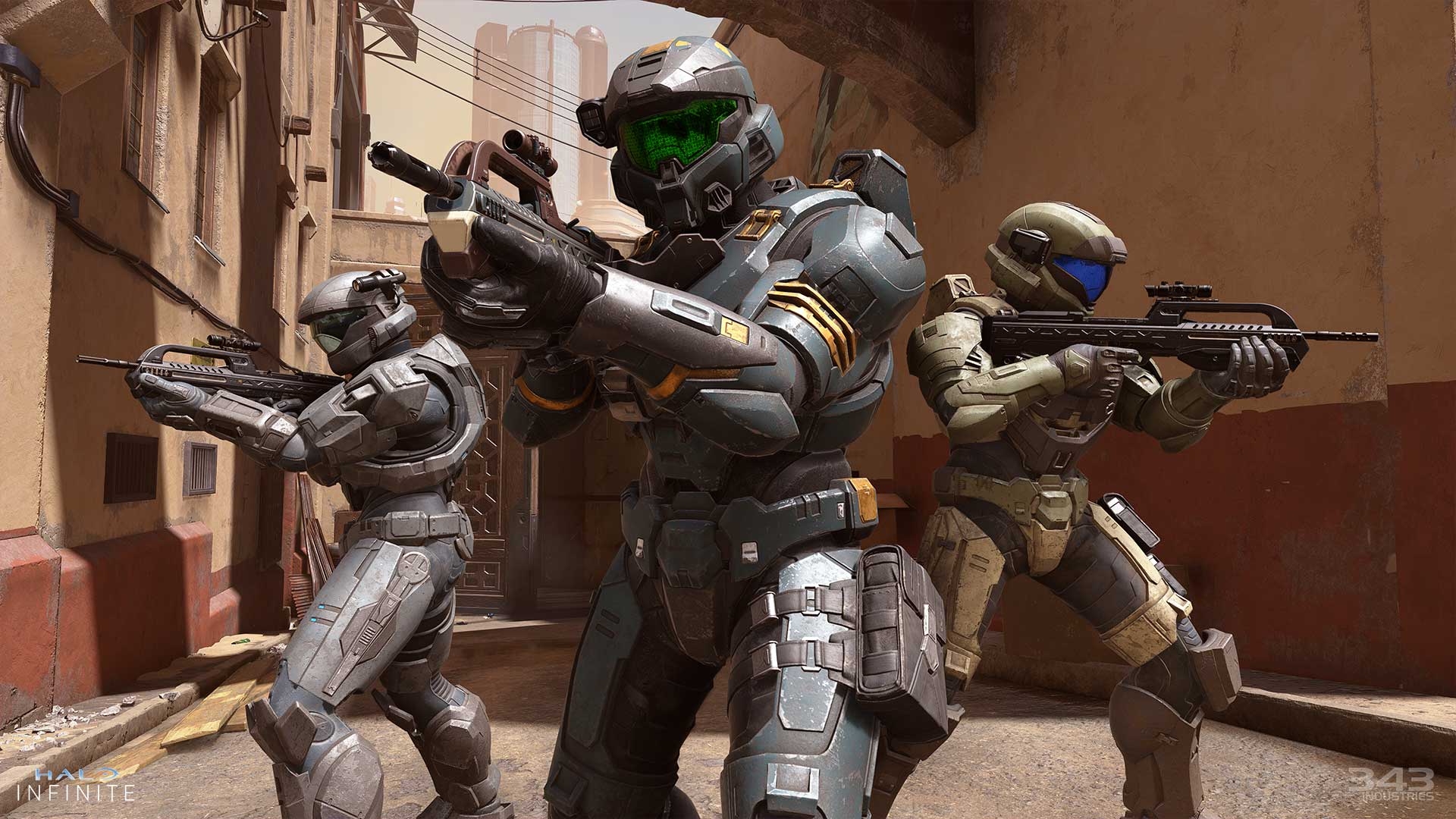
it's an interesting conundrum. almost everyone who's complaining will gladly tell you that Halo Infinite has all the solid fundamentals you could want; gameplay is tight, snappy, and fast-paced without going as 'twitchy' as other shooters on the market, capturing an excellent balance between classic arena-style gameplay and modern polish and feel. after two previous attempts, 343 Industries has finally cracked the code on how to bring Halo forwards, what to keep and what to change, all in one tight package. very few people have a problem with how the game plays, but ask people to spend time playing it, and suddenly they have a problem.
as i briefly touched on earlier, the challenge system is a common hurdle for many. every week, you receive twenty random challenges, ranging from "kill ten enemies with this rifle" to "complete five matches of this mode". a few feel perhaps a little overly specific, but the developers have been receptive to tuning them downwards more and more over the course of the past year. challenges give you experience towards your battle pass, and once you've completed all twenty, you unlock an 'ultimate' challenge, which is the same for all players and unlocks a free reward item.
people will, in my experience, use the challenge system in every way they can as a reason why they just hate playing Infinite so much. 'how dare the game tie extra points to modes i don't like?' 'the reward this week is too good, 343 is using FOMO to get us to play.' 'the reward this week isn't good enough, why even bother firing it up?'
not too long ago, in the days of Halo 5, cosmetic rewards like this were locked entirely to the game's REQ packs. you could earn enough points through playing to get them, but each pack contained, at most, two new permanent unlocks from a pool of hundreds. permanent unlocks didn't always mean cosmetics, because it could also be unlocks tied to the game's Warzone mode, like a new variant of your starting rifle, or a card that said "you'll unlock more of this weapon type now". permanent unlocks were also sorted in tiers tied to the packs, and people quickly deduced that with how the item tiers were sorted, there was a 'most efficient' path through this system, and that it was possible to waste the potential of that gold pack you potentially paid real money for.
in those trying times, people longed for the days of Halo: Reach, when leveling up was its own reward with no random pulls, or better yet, for Halo 3, where cosmetic rewards were tied to very specific achievements. take, for example, the SCOUT-class shoulders, unlocked by running opponents over in the Mongoose - Halo 3's lightest, weakest vehicle - specifically in a ranked free-for-all match.
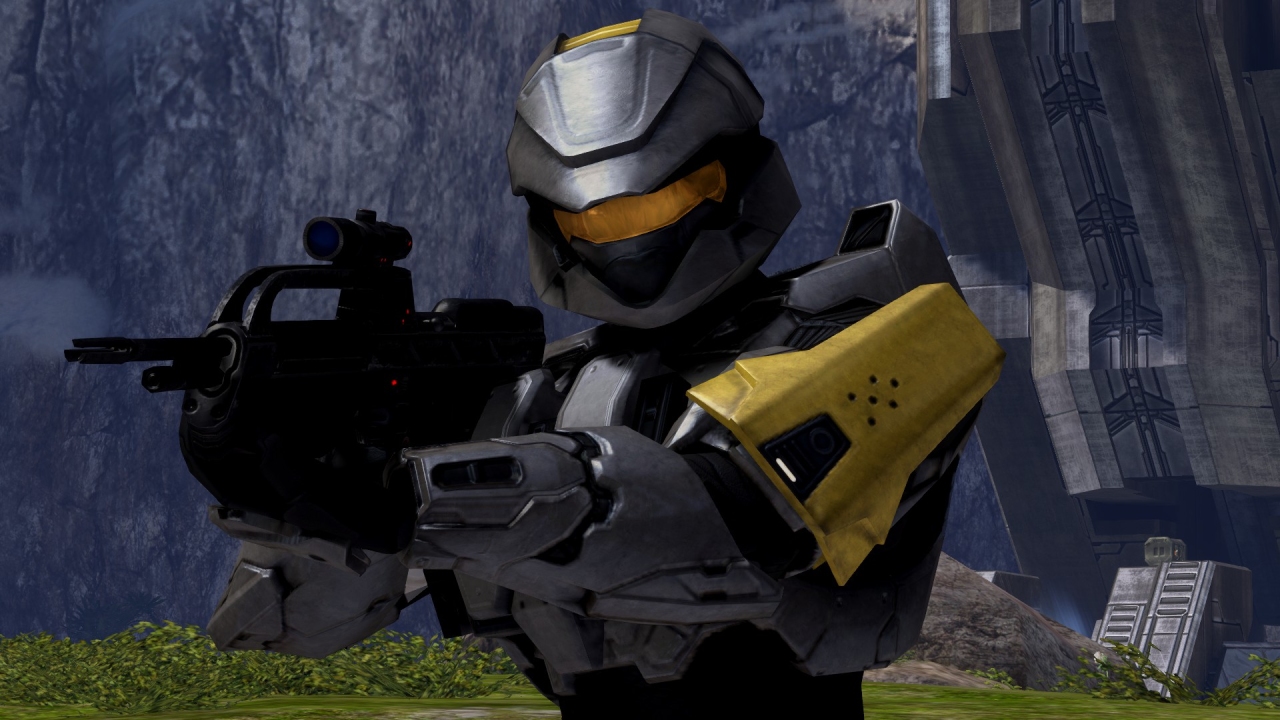
again, it is perhaps a little cheap of me to draw these parallels. it is important to point out that, at least up until the servers were shut down this year, you could do that challenge literally whenever you might have the time, as opposed to the weekly rotation of Halo Infinite. i'm not completely crazy for seeing the parallels, though, right? people wanted a return to good performance being directly rewarded with specific, non-random cosmetic unlocks, and when they finally got it, it suddenly became such a chore to do that it made the entire game less worthwhile.
of course, when talking about cosmetic unlocks in Infinite, it's impossible to avoid touching on the game's store. from the minute the game came out, it's been under the most scrutiny, and i can fully wrap my head around why. when the game launched, prices were flat-out bad. i find it difficult to pinpoint how much better things have gotten, or where i would place the firm, immovable values of how much items 'should' cost, but overall, 343 has proven receptive to these complaints and prices have, on average, trended downwards.
no matter how good things get, though, there's always people who seem diametrically opposed to Halo having a store like this at all. if you venture into discussions on the matter, you might see the term 'predatory microtransactions' thrown back and forth. for others, it's almost more of a crusade of standards - how dare the once-mighty Halo debase itself to the level of an in-game store like that Fortnite all the kids are playing?
i look at this distrust of the storefront in Infinite, and i see a direct path back to the mid-2010s, when map packs had begun faltering as a way of offering post-launch support and loot boxes had swept the industry. studios were looking for new ways to recoup their investment, because as hardware grew more powerful, making games that met the standards of that hardware got harder. games at the scale of Overwatch or Star Wars Battlefront II or any other triple-A multiplayer game weren't getting made without that secondary source of revenue anymore, and the loot box seemed like it might be the answer to that problem, by emphasizing smaller, more repetitive purchases.
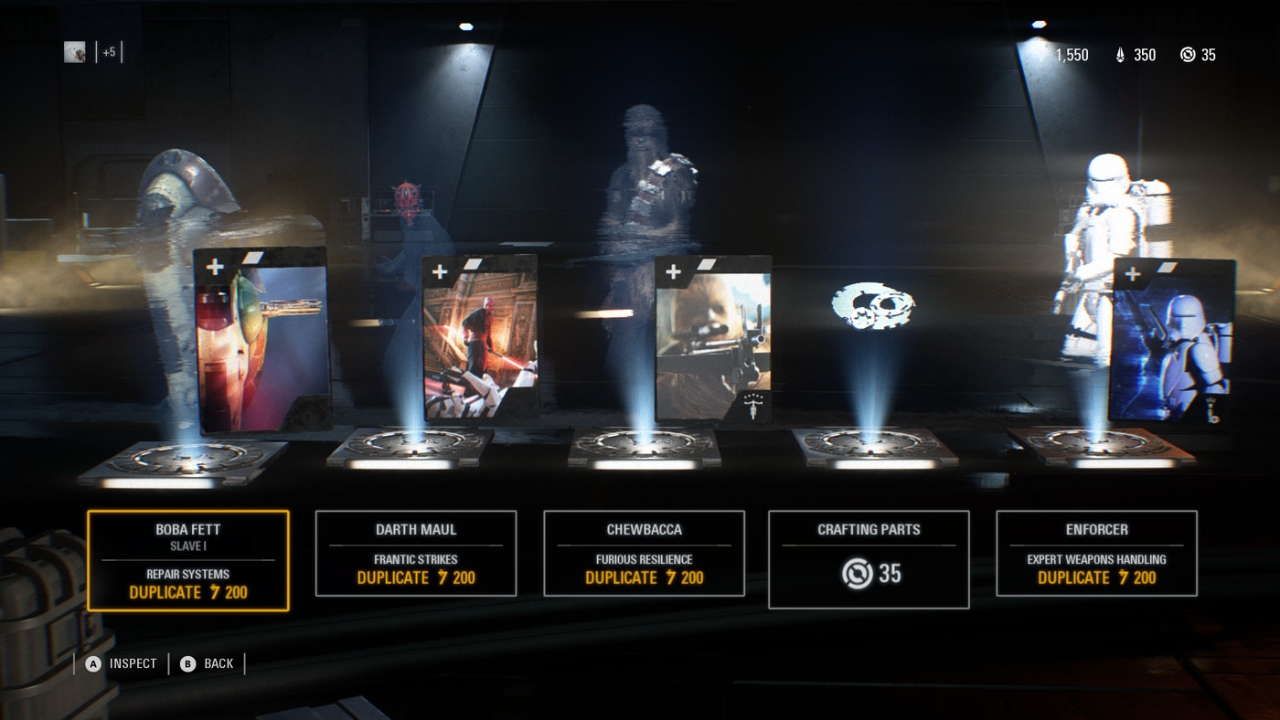
not all loot boxes were made equal, though, and when companies like EA tipped the balance just a little too hard, the whole thing came tumbling down as people lashed out against being nickel-and-dimed over virtual rewards. it was excellent, because consumers were standing up for their rights and some governmental bodies even seemed prepared to actually regulate on the issue. for the people who made these games, though, it was a crossroads, because regardless of how deep their company's pockets go, no matter how many games they could afford to make without any secondary monetization, projects weren't going to be greenlit if they weren't seen as reliable investments to continue bringing in revenue past their launch window.
so projects shifted. barriers to entry got lower, and purchases got more direct - pay a bit of money, usually have it converted into a game's localized currency, and receive a specific item you were picking out. when the battle pass came along, it made sense that it exploded overnight, because it fit perfectly into this new wave of monetization. you see what you get, and you get it by playing. in just a few short years, the expected barrier of entry became effectively none, as free-to-play became a standard for multiplayer experiences, enforced by the soft pressure that, well, everyone else might be cheaper than you. some franchises like Call of Duty and Battlefield still do things the old-fashioned way, with a $60 base game, but these almost seem grandfathered into an industry landscape where the race to make your game the most accessible has hit rock bottom.
loot boxes and their following collapse instilled a deep distrust of major publishers amongst gaming audiences, and i cannot blame them for that. i would say it's an incredibly good instinct to have - fuck the system, put your foot down when you're being screwed over, i'm here for it. the issue is that this instinct has been boiled down to its lowest common denominator, wherein any attempt from a studio to implement any new revenue stream into their game is read in bad faith as a manipulative tactic.
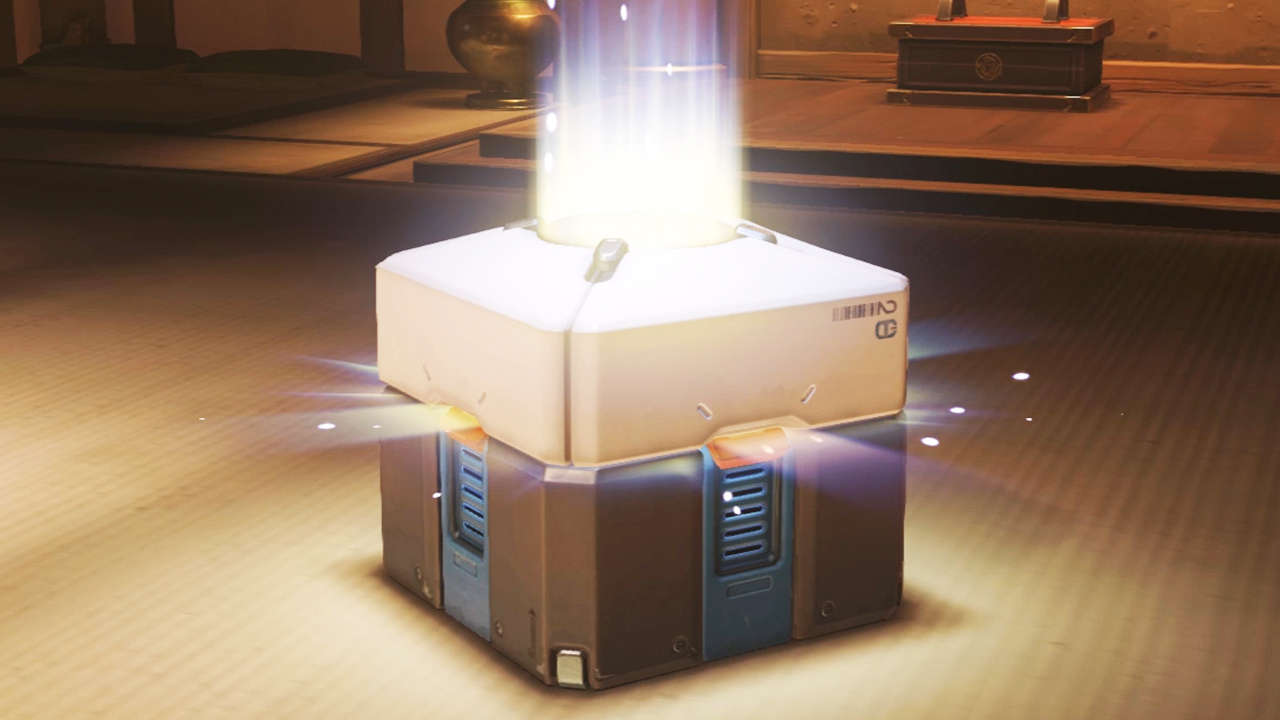
the term 'predatory microtransactions' has its roots in the loot box era, as a way to describe the way that opaque gambling-esque mechanics were, whether accidentally or very intentionally, preying on people with addiction issues or poor finanical literacy. people have every right to disagree with Halo Infinite's pricing on items, but it is always conveying to you what you're going to receive. when people say that Infinite has 'predatory microtransactions', the term seems to take on an entirely secondary meaning - that the mere existence of any microtransaction is, in and of itself, predatory, that it's an intrusion on the principles of Halo, being done to spite its fans.
it's far from a universally popular idea within the community, but nowadays, you see some players longing for the days of Halo 5 - sure, the unlocks were random and customization was limited and they were charging for microtransactions in a full-price $60 game, but you could technically get everything for free, even if it meant mindlessly grinding away for years. clearly this means the system was better, right?
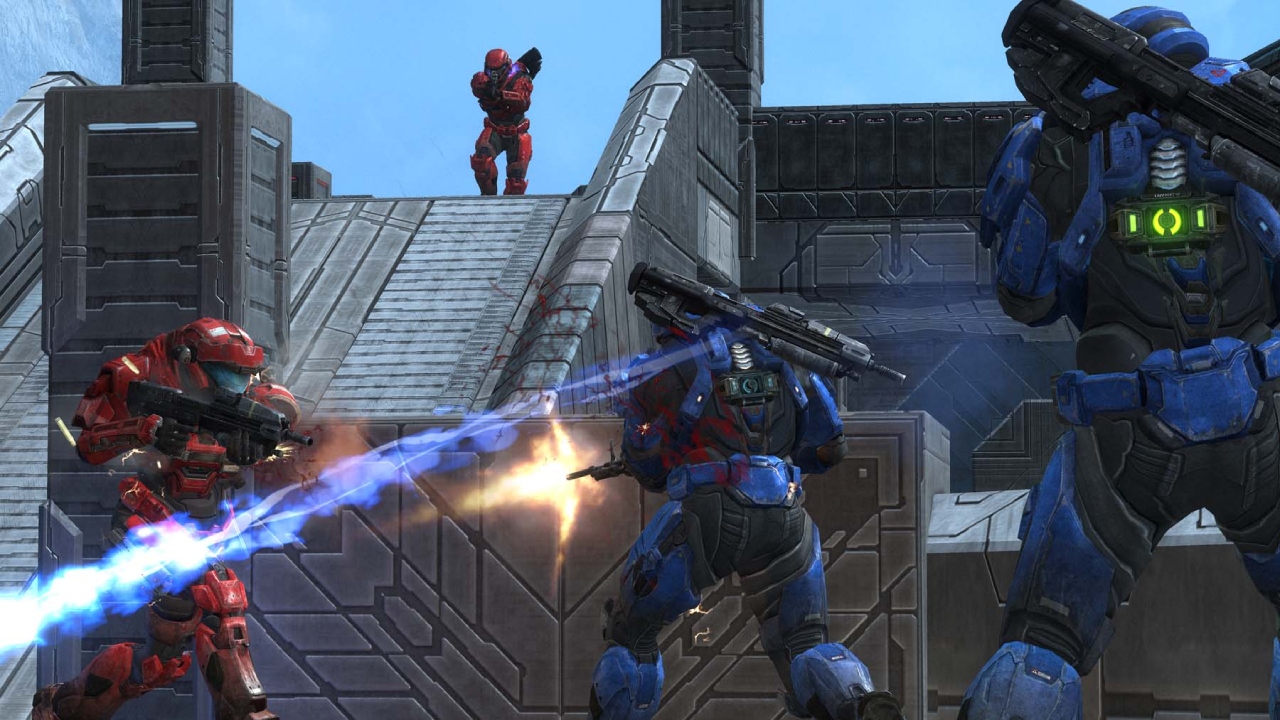
Halo: Reach came out in 2010. i've been playing these games for the past 12 years. i have been in this community for a long time, and i've seen opinions change. in its time, Reach was looked down upon by fans of Halo 3. many of its changes skewed its gameplay away from classic arena shooters and closer towards something like Call of Duty. its story alienated die-hard fans by retconning the original story of the invasion of Reach, a novel which was published before the original game even hit shelves. the game had essentially no esports presence, after Halo 2 had helped put MLG on the map as a mainstay in the field of competitive gaming. at times, even its direct predecessor had higher player counts.
ask anyone now, and Reach was a masterpiece. its gameplay fundamentals were solid with exciting new modes, its story was a compelling tale about the sacrifices of war (hard disagree), and it might have been the very last time Halo was relevant as a franchise. this newfound wave of nostalgia is potent - if it wasn't, then why would Halo Infinite draw so heavily from it, to the point of theming entire seasons around Reach?
the passage of time changes how we look at things we love. our minds are very good at filtering experiences down broadly so that we can fit all the important stuff we need in our brains. fans don't memorize the amount of maps in every game and how long it took between updates, they just hold onto the broadly positive experiences they had playing. fans don't think about the endless grind of games like Reach or 5, they hold onto the serotonin hit of earning something new. fans don't latch onto the toxicity of Xbox Live, they look back fondly on the good times, and the bad blurs way without any focus.
the most material complaint people have about Halo Infinite, beyond the pace of its updates or the merits of its store, is desync. they wonder how anyone could enjoy a game with such obviously broken servers, despite the fact that for plenty of players, including myself, these server issues simply don't manifest. maybe they're just forgetting how Halo 3 ran on peer-to-peer systems in 2007, notoriously impacting its balancing, especially as the game opted to use physical projectile simulations as opposed to the simpler hitscan approach of Halo 2.
i'm not throwing all of these examples around to try and say that "actually, all these video games sucked in the same ways, so shut up about it". it's reasonable to expect that as technology evolves, new solutions become possible, and new approaches entirely become available to reinvent and reinvigorate the player experience. what i am trying to say is that, even though it does take effort to remove your rose-tinted glasses, it's worth doing, to be truthful about the strengths and flaws of the games we play. Halo 3 was not a perfectly designed game, and Halo Infinite is not the unmitigated disaster that some make it out to be.
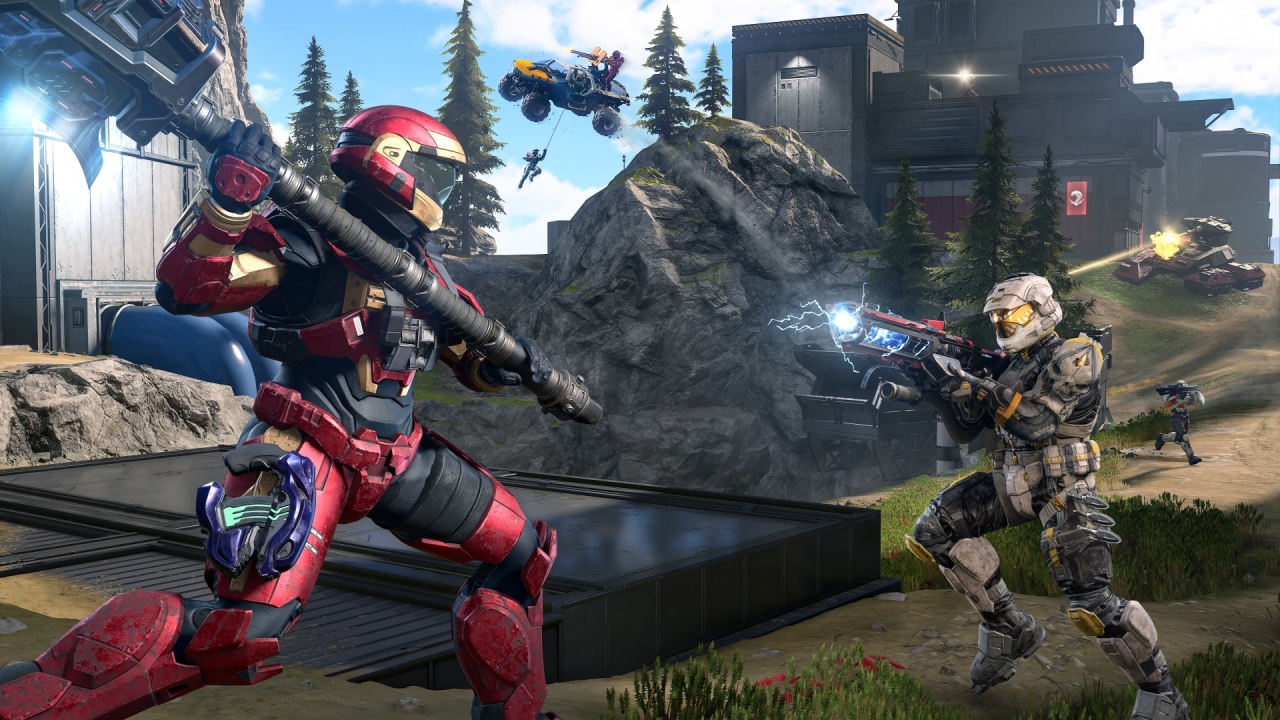
so we find ourselves back at where i started this piece. what the hell happened? Halo Infinite is widely considered to be a well-designed, fun game, but people insist that somehow, in the course of under a year, it has become such a deeply lost cause that Microsoft would be better off stepping in and dismantling 343 Industries than even trying to work with what they've got. Infinite is, to many, a "dead game", a label that has sprung up frequently in the age of live service titles to refer to perceived failures, inevitably meant to be quietly shuttered and forgotten.
i have played my fair share of "dead games", from Apex Legends to Fall Guys. in all these cases, there is an unifying principle - the game is fun. if it wasn't fun, it wouldn't get popular to begin with. people come in droves and these games become overnight hits, but as days turn to weeks and weeks turn to months, the conversation suddenly starts to shift. the game hasn't updated yet. Fortnite could drop four major weekly updates before the game could even turn around their first patches. why would anyone waste their time on a game that isn't updating so fast?
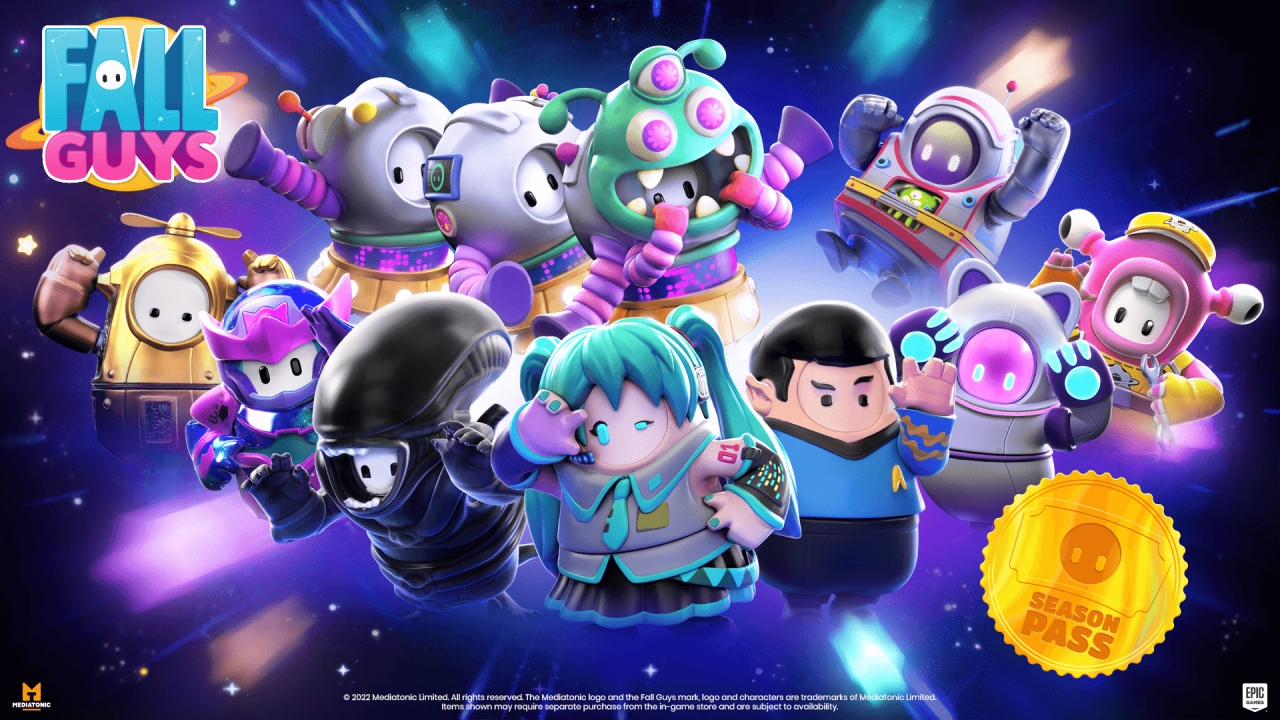
today, both Apex Legends and Fall Guys have turned things around. they're more popular than ever and constantly updating. they have found success, arguably, by chasing Fortnite's tailcoats - hell, Fall Guys is under the same roof now, thanks to a corporate acquisition. personally, i play them less than ever. maybe i'm old-fashioned, but when a game is constantly changing its identity to garner attention, i bounce off of it. i value consistency. quality over quantity.
i am not some stoic, unfeeling statue when it comes to Halo Infinite's shortcomings. it has stung to see features get pushed back, to see the game drift through its first year with less new content than what we might have expected. i find its limited-time events to often feel undercooked, without much fanfare to make them stand out from any regular week of Halo. i, too, have balked at store prices and done my best to vote with my wallet.
Halo Infinite is fun, though. on a fundamental level, at least for my tastes, it's very fun. it is, in my opinion, maybe the best Halo has ever felt. i still get excited over the little things, like swinging around the map with the Grappleshot, or hauling ass with my teammates in Big Team Stockpile. it could have more, but every game could have more. i like what it has right now, so i play it. i don't find it to be a particularly big ask to complete my challenges, and if i don't, oh well. if i get tired of playing it, i play something else, and that feels incredibly normal to me - i'm glad i'm not being chained to Halo like a job, with a barrage of updates meant to peel my attention away from any other game.
speaking of being chained to Halo like a job, that's a perfect segue into something i briefly brought up earlier - social media, and how it has changed audience/creator dynamics. in 2022, it is (at least on a very hypothetical level) possible to stake out a living for yourself online as a freelance content creator, talking about the things you love. hell, if you're lucky, you might even be able to label yourself an 'influencer' and get some level of inside access to previews and all kinds of other goodies. you might think for someone who writes this much about a media interest on a whim, that sounds like paradise, but if you listen to anyone who's followed this career path, you know that being a content creator online can be a nightmare, and a lot of it comes down to the ever-dreaded algorithm.
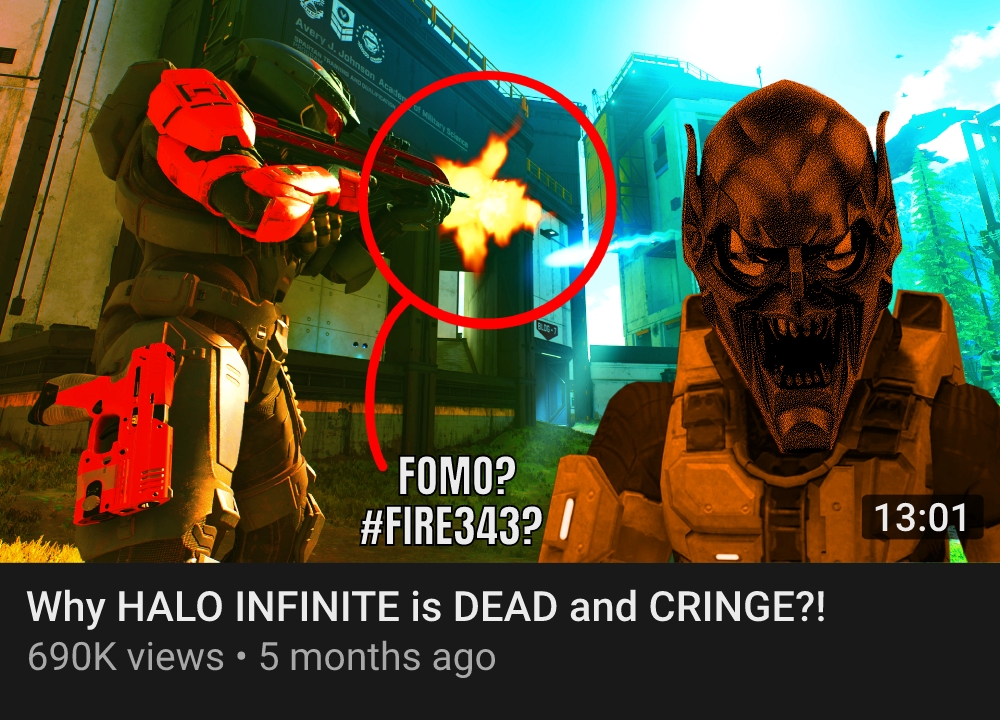
i'm not here to do an extended teardown of algorithms and how they've utterly decimated the landscape of online media; that's a much bigger topic, and there's much more qualified people who've done it already. it is, however, relevant to our story in the sense of how "the algorithm" and its influence on platforms like YouTube can be a massive part of how fandoms end up getting shaped by such low-level toxic discourse.
for some people, talking about games is, in fact, a job. in the past, there was a much more robust 'games journalism' scene that emulated the stylings of other media journalism, but for younger audiences, they've been almost completely supplanted by freelancers on YouTube and Twitch. rather than outlets that cover the games industry as a whole, you see much more focus on specialists, who devote themselves fully to a game or two of choice and build their brand around it.
when one of the primary forms of media coverage a game receives is from freelancers, without any oversight but their own tastes, who are in turn attempting to stay ahead of an algorithm that encourages engagement over any metric of quality and practically requires a weekly or even daily schedule to give these creators their living wage, bad things are going to happen somewhere along the way. i am not opposed to freelancers, or to the democratization of information on the internet, but algorithms on social media do not incentivize nuance or deeper understandings of media. they incentivize being quick, even if it means being sloppy, and above all else, value is placed on getting engagement, whether it's positive or negative.
put yourself in a content creator's shoes. your area of expertise is covering multiplayer games. you're trying to cater to the whims of an invisible machine that might determine whether you make rent this month or not. 343 Industries has just announced that for the sake of team health and ensuring they can put out a quality product, they're delaying or trimming back certain features. do you take the time to think about this and put out something even-handed, or do you capitalize on the opportunity to appeal to that invisible machine by quickly catering to the type of easy anger people crave, by going on about how Halo Infinite is dead and buried?
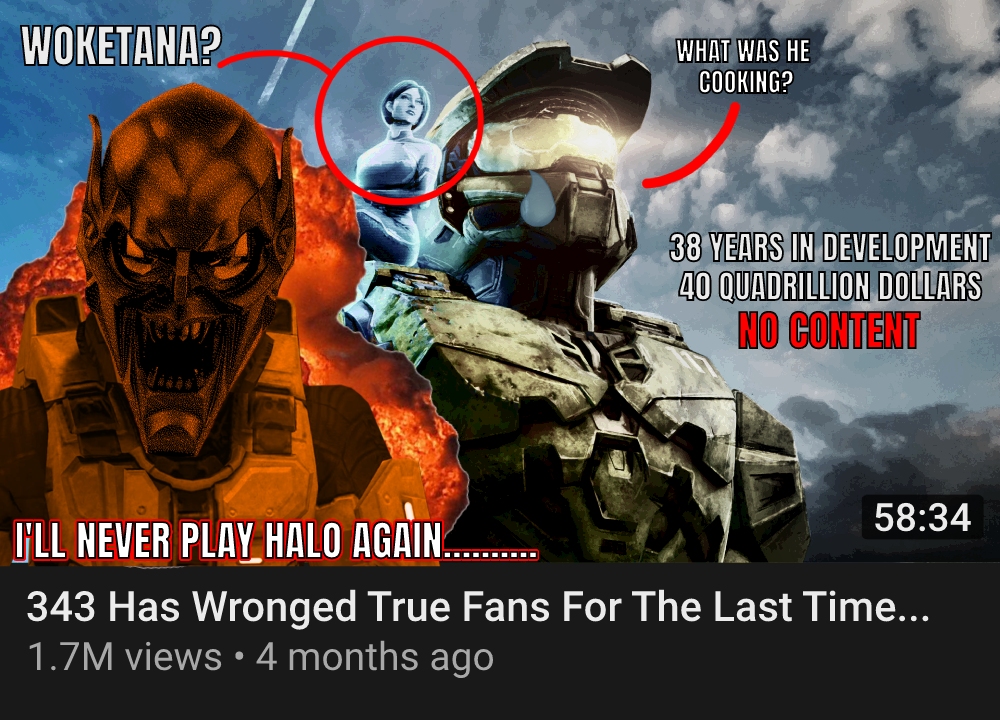
beyond even specific instances, it's a cycle. those videos do well, so content creators make it a part of their brand to be angry at 343 Industries. you need to stay on top of a consistent upload schedule to have any chance of reaping any real benefits from the algorithm, so content creators reiterate and reiterate, drilling the same talking points home so that they can continue to put out new videos. vitriol is quick, it's cheap, it's easy, and it sells.
nostalgia sells, too. it's why Infinite has so many Reach-themed cosmetics, and it's why frustrated content creators lean so hard into the mythologizing of Halo's golden age.
it is now, at long last, that i get to my point, or at least, sort of my point. it is easy to look at a disgruntled fanbase, constantly kept in a frothing rage by content creators looking to keep their heads above water, and wonder why it happens. the easy, smug route is to poke at them a little bit. if they think Halo Infinite is so fun, why not just play it for its own sake? can't you just ignore all the meters filling up and play for fun, like you all did back in those 'good old days'? or if it's so dead to you, why not move on and find a better game?
i do genuinely think there is a deeper, more psychological answer, though. people have developed a sense of ownership over Halo, as a cultural touchstone of their youth. they remember a time when Halo was king of the world - it was an unstoppable phenomenon, and everyone was playing it. and everyone was younger then, too, with less worries, with all the youthful vigor and Game Fuel they could ever need to pour hours upon hours into their favorite game.

i don't think that any Halo game, regardless of how good it is, could ever truly satisfy people. fans don't just want a return to classic mechanics, or classic aesthetic choices. it doesn't really matter if it's free or if it's $60, or how fast it's able to update. they want a game that makes them feel like Halo 3 did - or perhaps 2 or Reach, if they're a little older or younger. what they fail to recognize in themselves is that the feelings that media evokes in us are inseparably tied to the time we experienced them in. what would make Halo fans actually, truly happy would be to wake up back in the 2000s, to be young, to exist in those social norms, to have those friends, to relive those mythologized moments.
this, too, isn't the most groundbreaking conclusion to stumble into about media and how audiences interact with it. but it explains so much of what's happened with Halo Infinite, doesn't it? any change to the formula is new and scary, especially if it involves charging money for anything, so people get defensive and call these changes 'predatory', because they are predatory if you view Halo as something sacred that needs defending. the Bonobo incident fell out of the community discourse because it is a material problem that nobody followed up on, as opposed to a general sense of intrusion, where you can twist everything the developers try and say into an attack on the 'true fans'. the lack of social features is bemoaned because if you made friends in the trial by fire that was Xbox Live circa 2007, you believe that the kids these days are going to miss out on that, and perhaps 'get soft' if you're the type who really believes enduring hate on the internet builds character.
the thing is that all of these social elements people valued about Halo still exist in the games industry, it's just that times have changed. the omnipresent shooter of choice that anyone who's anyone plays now is Fortnite. i'm not equipped to speak to what Fortnite's suite of social features is like - i'm not one of 'the youths' anymore, as it were - but every metric i've ever heard about it, every second-hand story, is that it's the game that most closely approximates the role Halo used to fill.
Halo fans know this. they know it all too well. it is impossible to make a monolith out of such a broad group of people, but to put it the best way i can, it seems like the Halo community, at times, simultaneously looks down upon Fortnite as a 'baby game' while also growing increasigly jealous of the fact that it is the new hot shit. this, to me, feels like the reason why people who are so concerned with returning to the pre-live service glory days still get so upset when Halo Infinite falters as a live service game. people want Halo to be that type of omnipresent success, on 2007's terms and on 2022's terms, all at once.
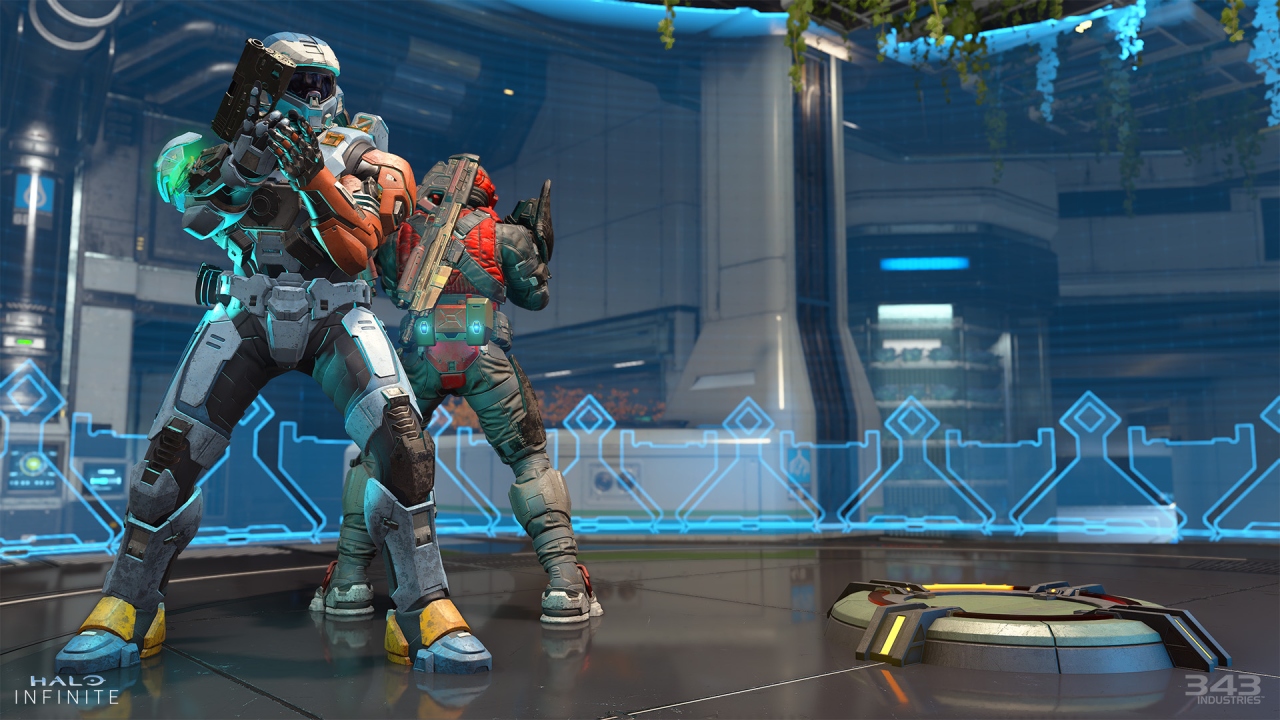
so, that's it then, right? thesis statement reached; "the problem with Halo Infinite" is that its fanbase has constructed a sort of psychic trap around themselves in which they are constantly chasing an impossible dosage of nostalgia and refusing to enjoy a good game because it lacks the meteoric popularity it once had in their youth. that's maybe a little overly broad, and certainly doesn't account for younger fans who simply grew up expecting a heartier live service, but it's a way you could put a nice bow on this question.
but we can go deeper still. i drew comparisons back and forth, trying to point out that maybe Halo 3 and Halo Infinite aren't so different in some ways, but there certainly are ways in which the development process has changed. and if a game like Halo has trouble keeping up and gives its fans the impression that previous games had a richer diversity of content, how is Fortnite running circles around just about everything on the market?
i have always, always found the concept of a "dead game" to be a teeth-grindingly frustrating way to approach discourse. Halo just happens to be where it has hit the closest to home, so to speak, with a franchise i've been a fan of for over a decade. if you will continue to humor me, i want to dive into another layer - how Infinite was made, how the process has changed, and why it shouldn't keep going on like it has, for any game.
PART SEVEN: THE PROBLEM WITH ALL VIDEO GAMES, FOREVER
...is capitalism's principles of infinite growth. that's right, suckers, you're over 20000 words deep and i'm ready to get back on my socialist bullshit!
Halo Infinite's multiplayer is free. it is not free out of the goodness of Microsoft's collective heart, it is free because as it came time to release a new Halo game, all the most lucrative multiplayer games on the market were also free. it has a store and a battle pass because those are tried and true methods of generating revenue from your free multiplayer game.
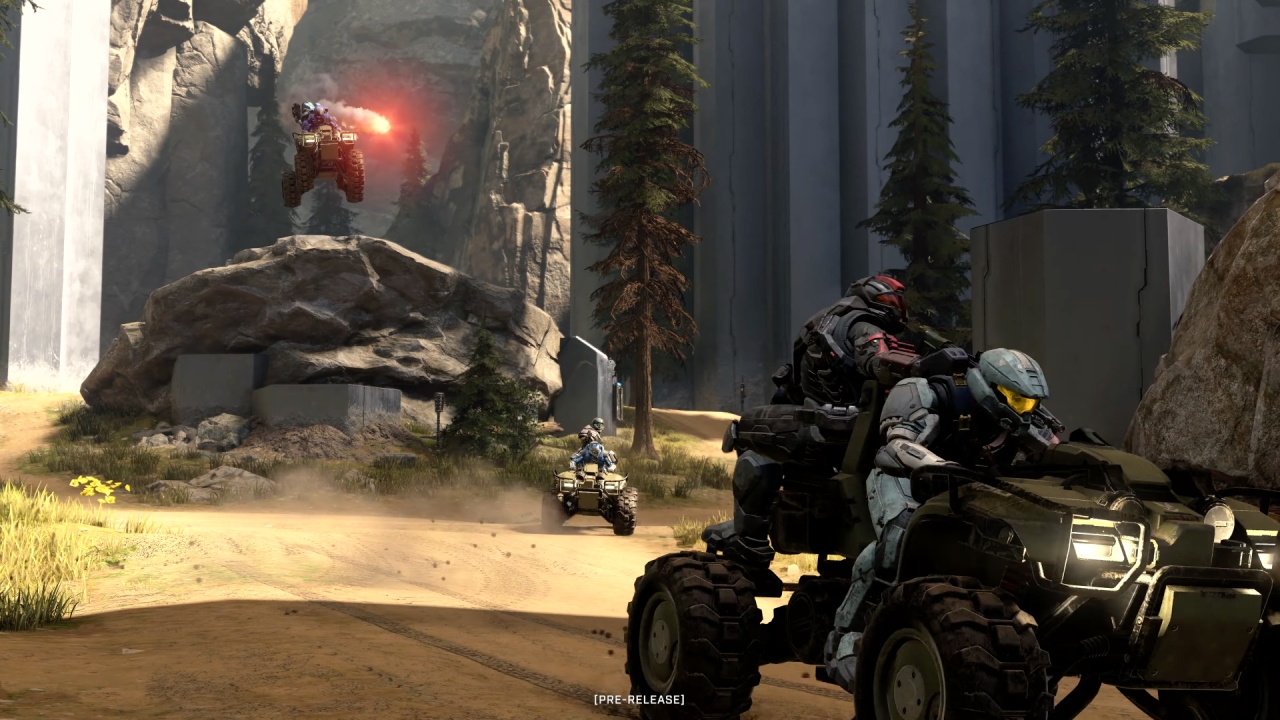
many Halo fans, when confronted with this as an answer to certain design choices, take a rather confusing angle - 'nobody ever asked for it to be free'. they swear up and down that they would have gladly paid $60 for a classic experience where everything is earned and nobody has to pay anything extra, and seemingly, take their own willingness to do so as proof that everyone would be willing to do so.
what people fail to recognize is that this really wasn't in the cards, especially when contrasted against the fandom's own woes. for almost all of 343's tenure over the franchise, fans have insisted Halo needs saving, that it needs to be top dog in the world of multiplayer shooters again and that it should be an easy task if 343 Industries just made the right choices instead of the 'wrong' ones. so, someone along the chain of command looked at the state of multiplayer shooters today, realized that releasing a full-price console exclusive shooter wasn't going to set the world on fire, and suddenly, Halo was free to play.
i cannot stress enough that i am not sitting here rooting for Microsoft to maximize their profits. rooting for billion-dollar industry titans is a load of shit and i don't care what Halo does to their bottom line, good or bad. what i am trying to communicate is that the mental image of what a 'successful' triple-A multiplayer game looks like has changed. it's been shaped by a constant back-and-forth between what publishers can think up and what audiences will spend the most money on. whether it's Halo or Overwatch or Fortnite, these games continue to exist because of what they bring to their parent companies, and they are only able to exist at the scale that they do through that symbiotic relationship. all three of those examples - and dozens more - are all free-to-play in their current iterations, because that is the current zeitgeist as shaped by our practices as consumers.
launching Halo Infinite as a classic $60 package without microtransactions wouldn't have guaranteed it was any more rich in content than it would be as a free game, and if anything, might have drastically kneecapped its chances at long-term support. it's easy to think of the entry cost to the consumer as reflecting the contents of the game, to try and puzzle out how a $60 game would have logically been 'worth more' than a free one, but when it comes to the shortcomings people see with Halo Infinite, it has so much more to do with the internal costs - in terms of money, in terms of time, and in terms of people.
it's easy to get caught up in the marketing spin around a new generation of systems, to hear manufacturers boast about how their new console is a revolutionary step for video games, how developers love working with it, but when you stop and try to think critically about these promises, a lot of things become evident. there is an unspoken assumption amongst many gamers that a more powerful console means it's easier than ever to produce high-fidelity graphics, an assumption reinforced by console manufacturers like Microsoft in an attempt to draw developers to their platform. think about it for a minute, though - doesn't it make sense that if you're creating high-fidelity assets that are actually utilizing the power of a modern system, then it's going to take longer to creature textures and models at that higher standard of quality?
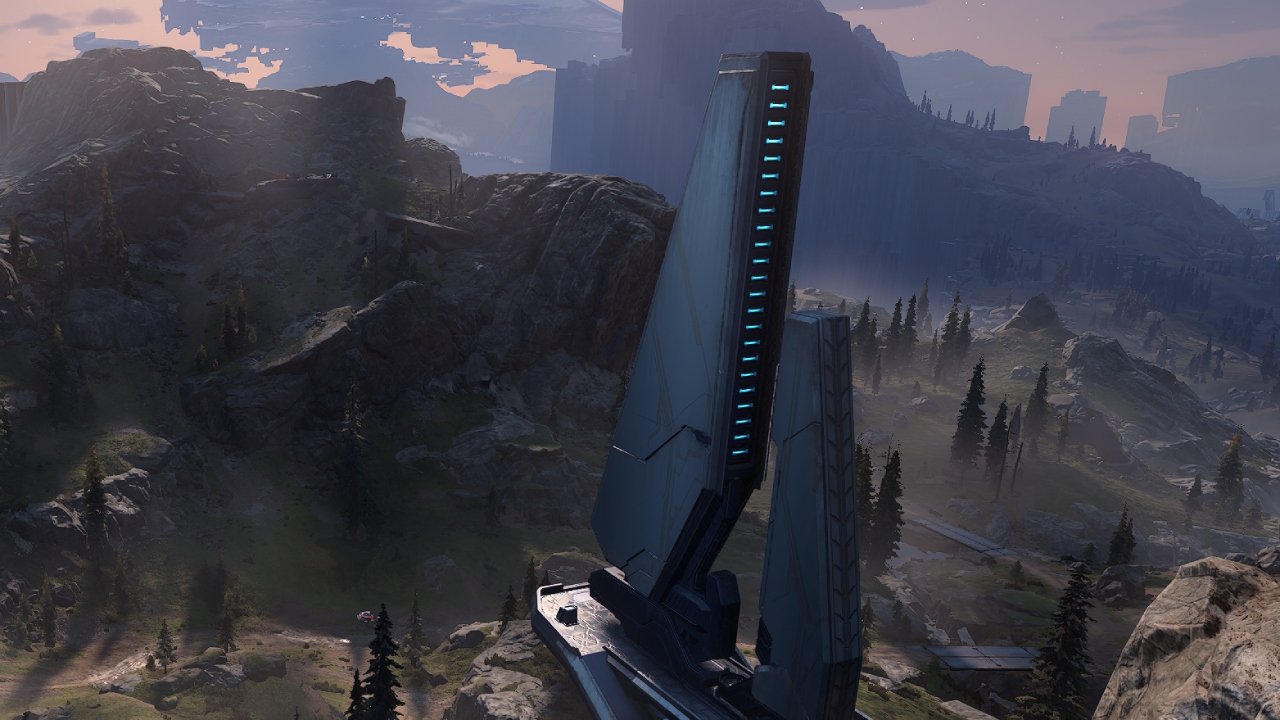
this same principle carries into all corners of game development, not just visual assets. players expect stronger dedicated servers that can support more people and more connections, and developers have to be prepared to work with high-level complex networking functions, knowing that just a few mishaps can snowball into a costly catastrophic failure for their game's multiplayer services. people want games that show off the powerful new solid-state drives of next-gen consoles, so developers have to bear the burden of designing games that not only tap into that heightened loading speed, but make it clear to the player that something impressive is being done.
on top of all of this, there's an expectation that if you're making a multiplayer game, you need to be ready to stay on top of all of this for years, refreshing your game with new content on as regular a schedule as you can. the common practice seems to be that big drops come every three months, but you're also expected to make sure new things are happening in between those seasonal benchmarks, whether it's exciting events or ensuring you get out ahead of any balancing issues or exploits, all without accidentally fucking the whole thing up. it also needs to generate enough revenue to keep corporate management happy, and more than likely, they're going to want it to be free, so you can get as many people hooked into it as possible.
should we really be that surprised, then, when games feel 'different' than they used to? should we be shocked that it takes teams time to find their footing when working in this space?
another expectation, outside of the hands-on process of putting the game together, is to be as visible as possible, to constantly interact with your fanbase and let them know that you're listening. this communication rarely comes in the form of actually elaborating on the processes of running a live service game, for a number of reasons. the social media platforms on which these interactions happen often encourage brevity, like with Twitter's character limit. the people communicating are, at the end of the day, employees who's job is to try and foster excitement and positivity.
most damningly for the quality of discourse, explaining the minute details of how your game is set up just isn't going to go over well, because the art of developing a game isn't one that has particularly useful shorthand for audience members. at best, you're elaborating on your systems to someone who probably won't understand, and at worst they'll be cross-examining your response for any sign of 'weakness', any opportunity to get in some quick jabs and earn some easy clout.
did you keep Craig in the back of your head, like i told you to? good, thank you. let's pull Craig back up.

i don't like Craig very much, and it's not because he's ugly or whatever.
in the wake of the infamous 2020 demo, 343 Industries did their best to take criticism on the chin, embracing the meme and immortalizing Craig in various ways. he was brought up as a comparison against a later demonstration of updated Brute models, and various easter eggs were hidden throughout the finished campaign, such as a hidden album cover featuring the screenshot and various bits of incidental NPC dialogue talking about him.
this, to me, has never sat right. there's something a little sad about watching a company try to be 'in on the joke' when that joke is being deployed as some kind of insult to their workers' compentence. i can't speak to how anyone within 343 Industries feels - maybe they do, completely earnestly, find something lovable about the whole thing and embrace the joke. if i were working in this kind of environment, though, i would want people higher up the chain sticking up for me and my co-workers, rather than buddying up to those who only want to engage negatively, in the hopes of earning brownie points with bad faith critics.
Craig represents another facet of how social media has changed the interaction between audiences and creators in a negative way. that level of access and transparency is now seen not as a privilege, but as a right that all fans have. community managers are expected to handle that level of constant input gracefully, regardless of how toxic that input is. when you have thousands of people using a meme like Craig to spread bad word of mouth around a game, the expectation isn't that the developers step in and get to stand up for themselves or talk about how these things happen, but that they should just play along and take it, as if anything else is too offensive, too ungrateful to their audience.
in August 2022, just a few short weeks before the dev team at 343 began communicating about the Winter Update, previously-mentioned community manager 'unyshek' tweeted out a list of reasons it's harder to make games nowadays. much of it is what i've been going over here - games are expected to look nicer, update faster, run across more platforms, and in a facet i've more-or-less overlooked due to my lack of expertise, the list also mentions that the legal regulations around user privacy around the world are another hurdle to contend with when making a multiplayer-focused game.
the kneejerk reaction from the community was pessimism and doubt. the same fans who had constantly asked why 343 Industries has such trouble delivering what they want were being told the answers, and their response was to brush it off as 'excuses' - these things should just be easier, and clearly 343 wasn't up to the task compared to other studios.
this type of interaction has been constant within the community. people call for 343 Industries to be transparent, to simply 'say what's going on' and let people know what to expect. 343, in my opinion, has done a fairly good job of this. there have been bumps along the road, namely in the form of sometimes waiting until we're right up against a projected deadline to officially confirm that plans have shifted, but they've maintained a fairly consistent dialogue with the community. the team has a clearly outlined set of priorities, has constantly emphasized that they hear feedback and are implementing it into long-term plans, and i would say that, generally speaking, i've always had a solid grip on what's coming soon to Infinite, and what's on the horizon.
once again, i fall back on the axiom of 'who is telling you this, and why'. this final stretch of the essay has been the hardest to write, because it's important to me to walk a fine line. i want to be understanding of where developers are coming from, but at the same time, i don't want to come across as blindly defending them either. 343 Industries can and will make mistakes. they already have made mistakes.
ultimately, though, i don't find their attempts to communicate to be one of those mistakes. they know as much as anyone else what their game's shortcomings are, and have publicly said so. every impression i get is that they are trying to work in good faith, to keep people informed and be a reliable source of information about their own game, even when the news that's being broken is hard to hear.
at some point, then, when fans continue to demand more and more 'explanations' despite receiving them, it begins to look less like calls for transparency and more like a desire to see devs self-flagellate, to sit back self-satisfied as you put developers in a position to belittle their own hard work. i don't think it's a coincidence that one of the calmest points in the fandom post-Infinite came in the wake of a livestream where Joseph Staten said 'none of us are happy with this roadmap'.
while it currently manifests in the form of complaints about live service, this hostile dynamic between creator and audience has permeated Halo for over a decade at this point. 343 Industries are still 'the new guys', despite their tenure over the franchise now being longer than Bungie's. they will always be 'the new guys', because beyond just the fans mythologizing Halo's past, they also mythologize Bungie themselves, and it's a culture that i would personally argue Bungie actively fostered, in some ways.
Bungie's roots date back all the way to 1990, when it was just a few kids fresh out of college, developing games out of their parents' basements in Chicago. even as they grew and grew, and eventually had their upcoming Macintosh-exclusive RTS Halo transformed entirely into the explosively popular FPS cornerstone of Microsoft we know today, they never quite shook off that scrappy attitude. this irreverent, casual structure always put them at odds with their new corporate ownership, and made them stand out in the industry.
i came into Halo at effectively the very last year of Bungie's ownership over the property, but even i can remember the way this attitude came through in their games and online. their website famously hosted an entire forum section, as was standard back then, and the team was constantly making blog posts talking about amusing anecdotes around the office or interesting community creations. the studio almost had its own type of lore, whether it was the supposed frozen dog head they kept in the fridge or the often-teased game they'd make after Halo, Pimps at Sea. they even created their own faux-holiday, Bungie Day, which often brought all kinds of treats for Halo fans.
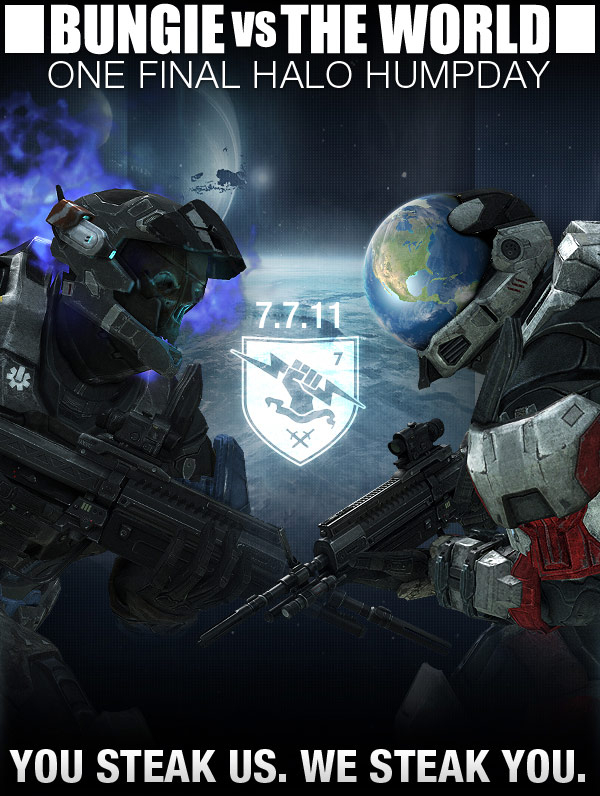
i remember participating in the final Bungie Day for Halo. it really did feel like an event at the time, a proper sendoff to Bungie's time on the franchise. there was a special playlist in Reach for the occasion, known as 'Bungie vs The World'. players could be matched up against teams of Bungie developers, and, as an added bonus, if you could achieve a Steaktacular victory over them - a traditional medal in Halo, given out for winning a match by over 20 points - Bungie promised they would send you an actual steak.
if i had to describe my impression of Bungie at the time in a single word, it would be 'rockstars'. their attitude and rapport with their community was perfectly suited to a time and place. while Microsoft had a reputation as buttoned-up office workers, Bungie refused to fit in, and let everyone know about it. they were perhaps some of the earliest examples of developers maintaining a constant online dialogue with their fandom, and doing so in the kind of irreverent tone that made fans feel like they were 'part of the gang', so to speak.
this, of course, isn't the entire truth. as i've covered extensively, the development of the original Halo trilogy took a very real human toll on Bungie. essentially every game after the original was made out of obligation to Microsoft, and despite their meteoric success, Bungie started wanting out after only six years.
i find it hard to analyze this too deeply, once again because i don't have a great sense of objectivity about what those first few years were like, but i do think this plays a massive part in the perception that people have of this split in Halo's history. many fans are under the impression that the original trilogy was a labor of love, that those developers worked hard simply because they were cool guys who loved cool video games, that it somehow wasn't about the money back then - because Bungie seems to have eagerly put that image out there, even when talking about the difficulties of Halo 2. the truth probably sits somewhere in the middle. Bungie were undoubtedly passionate and devoted, but some of the most beloved games in the series exist only because Microsoft wasn't ready to let go of their golden goose.
changes between creative teams are almost always a tense time for any fandom, but again, i find that Halo's specific place in culture at the time acts like a magnifying glass for these types of phenomena. it was always going to be a tough sell. Halo 4 tried to mitigate this by shifting hard, in aesthetics and tone, and it went over poorly, but i don't think trying to emulate Bungie's games so closely would have worked any better.
there is an often paraphrased quote from 2013, a few months after the release of Halo 4. in the rapidly shifting corporate structures of 343 Industries, one of the hold-overs from Bungie was Frank O'Connor, who had somehow gone from primarily writing the blog posts on their site to being an authority on Halo, with his job title at 343 being 'franchise development director'. when talking about the process of hiring for a new, bold vision of Halo, O'Connor said this -
We had people who we hired who hated Halo because of 'X,' but what that really meant was, 'I feel like this game could be awesome because of 'Y input' that I'm going to bring into it. I want to prove it, and I'm passionate about proving it.' So we ended up with a bunch of people who were genuinely passionate about the product. That is a huge advantage, and that helped in hiring and forming our team.
- Frank O'Connor, from 'Making Halo 4: A Story About Triple-A'
the philosophy here makes sense to me - by hiring people who aren't traditionally fans of Halo, 343 Industries was bringing in counter-arguments that they could refine their game design against. i may not be the biggest fan of how Halo 4 plays, but the practice makes sense. you see it across all forms of media when it comes to trying to manage existing, beloved franchises. sometimes, when you're stuck in your ways, the best answer is to bring in someone who doesn't have the same reverence you do.
to this day, this single line gets brought up. not even this single line, actually; the sentence fragment 'We had people who we hired who hated Halo'. almost ten years later, and people still drill this point home as if it's the smoking gun that proves 343 Industries to be a bunch of hack frauds. they take it to mean that 343 Industries, from top to bottom, has contempt for both Halo and the people who play it. they gripe about how if Microsoft simply 'hired fans', that Halo would finally recover, and go back to the good old days.
the reason this final section is so personally important to me, even at the risk of stumbling into mild corporate apologia, is because i feel like i need to argue that there just aren't any good old days, or at least, not in any wholly positive way worth trying to 'get back to'.
'crunch culture' is pervasive in the development of video games, and has been for decades. it is unavoidable. there are games i hold near and dear that only exist because people worked untold overtime for absolutely minimal compensation. from Rockstar to Ubisoft to Activision Blizzard, working conditions and toxic studio culture are a massive issue facing the video game industry. it's hardly a surprise when you stop and think about the way the field works. companies are encouraged to be visible, yet media literacy is generally low, as the actual development processes are kept opaque in favor of only focusing on end results. literature and film are things you can learn about in school, but video games are an artistic medium in their absolute infancy, and the effort that goes into their production can be almost invisible, often on purpose.
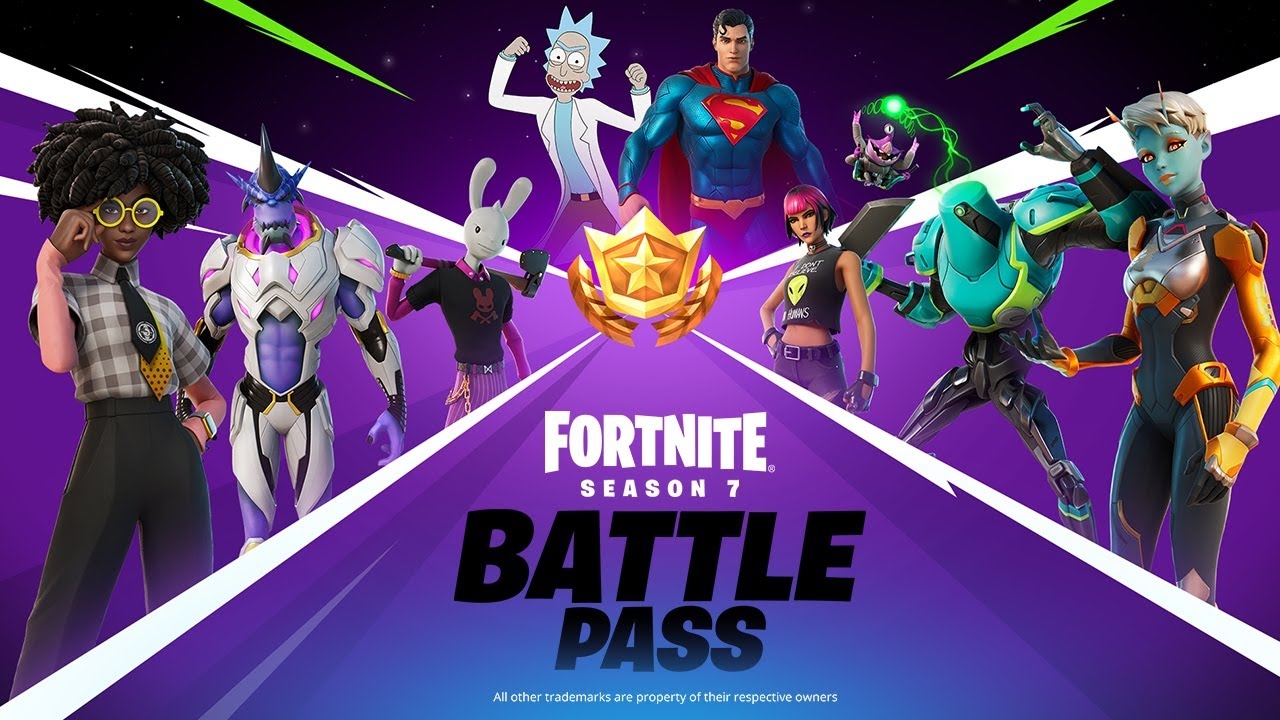
when talking about live service games, crunch is even more unavoidable, because of course when you take a process that's already harsh on workers and require them to maintain that process indefinitely, things are only going to get worse. it is more-or-less an open secret how the sausage gets made; even back in 2019, which feels like an eternity ago, outlets like Polygon and Kotaku ran stories about how teams inside Epic Games were working up to 100-hour weeks to keep Fortnite running at a pace its players expected. as far as anyone can tell from the outside, this problem hasn't gotten any better since then.
arguably even more pervasive is the crunch that churns out games like Call of Duty. even before Modern Warfare changed the landscape of online shooters, the series focused on being able to pump out new entries faster and faster by rotating between development studios. as it stands, there are at least three main studios working on Call of Duty, and collectively, they've released a game almost every year since 2005. the one time they missed, we were in the first year of the ongoing pandemic, and they still managed to launch a free-to-play battle royale.
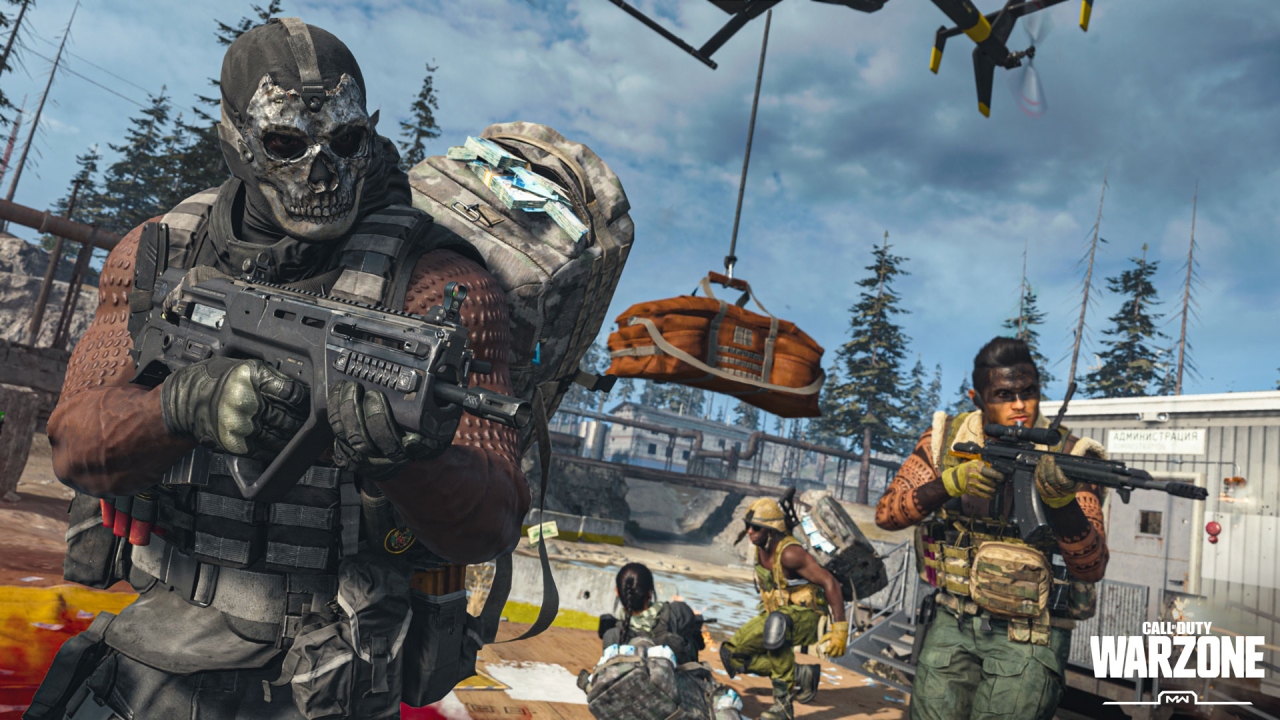
even the primary studios aren't enough anymore - many of Activision's mid-tier studios such as High Moon Studios, Beenox, and Toys for Bob no longer produce original games of their own, instead working year-round as support teams for Call of Duty. despite this sprawling support network, Activision is still infamous as one of the worst publishers in the business when it comes to crunch, busting unions within the same studios that turn out their annual flagship.
a reminder, again, that Microsoft is currently in the process of trying to secure its purchase of Activison Blizzard for 68 billion dollars. many hope that the Xbox team helps clean things up in there once they own these studios, but it's hardly a guarantee.
the average player doesn't have to think about how a game is made while they're playing it. their vague understanding of what it means to be a programmer is enough to understand the basics they need to interact with the experience, but on the surface, Fortnite and Call of Duty don't have to show you any of the toil that went into making them. when stories boil over and crunch is brought to people's attention, reactions tend to be split between those who detest its presence and say we have to do better, and those who simply shrug it off as part of the line of work.
343 Industries has repeatedly emphasized their 'priority zero' of team health. this is the point where i personally have to put the most faith in what they tell us, and hope that they're working in good faith. independent reporting from journalists like Jason Schreier and reviews from former employees help me put some faith in this idea - from how they tell it, it sounds like the primary difficulties of working at 343 Industries are learning their proprietary software, and the somewhat hectic shuffle of directions coming from upper management.
when i write all of this, i am trusting that 343 Industries means it when they say they avoid crunch. i cannot know for certain if that's always been the case, or if that's even the case right now. different people might have different experiences. faith in any corporate structure deserves to be kept at arm's length, ready to be cut off if they prove that your trust was misplaced - if it does end up that things are worse than they seem, i'll gladly eat my words and leave this essay up as a monument to a time when i was being naive.
as it stands, as i write these words, though, that has been the communication to us. some of the highest employees at 343 Industries have seen what crunch can do to people first-hand, and they want to avoid it. there are challenges and hurdles in developing Halo Infinite and responding to what the fans want, but it is a video game, and if it comes down to it, they will treat their employees right over their fans.
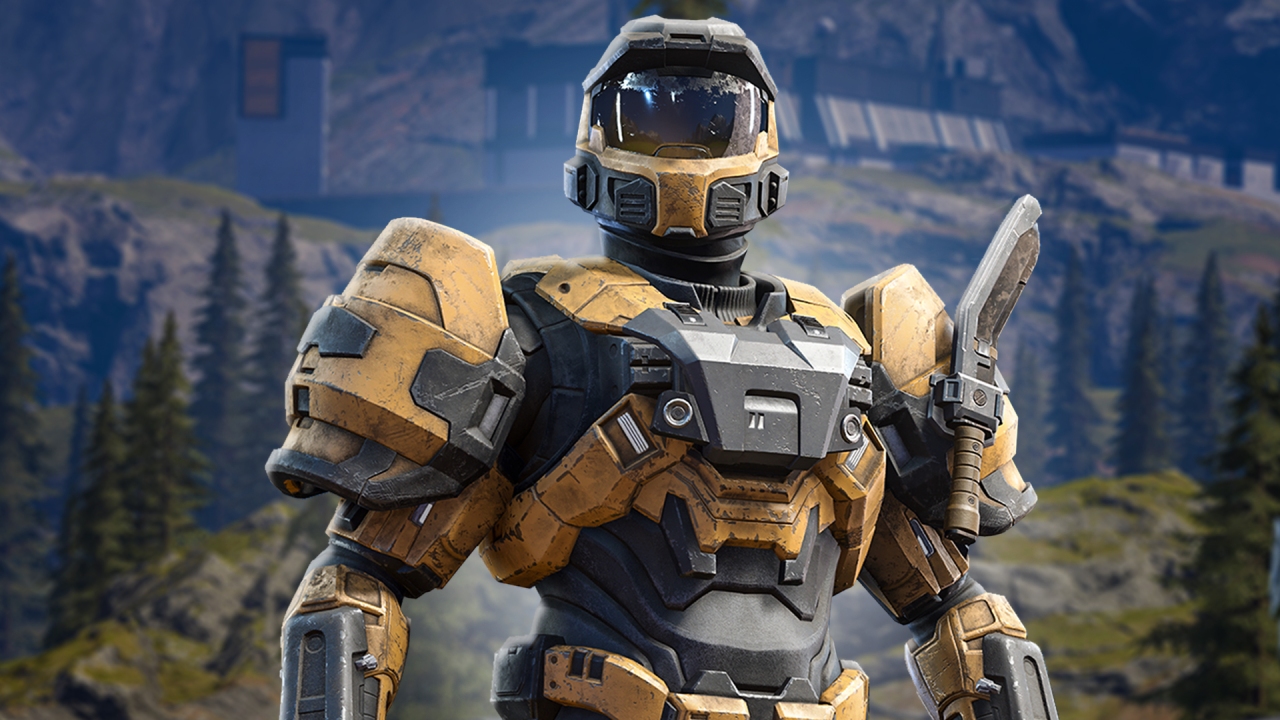
this is the state of video games in 2022. they are harder to produce than ever. it is expected that developers need to be as visible as possible at every step along the way, constantly in communication with an audience who doesn't care to understand the choices they make and assumes their job is magnitudes easier than it truly is. people insist that crunch needs to be avoided at all costs, but they'll just as quickly turn and say that the top priority needs to be churning out new content for free.
even in ostensibly left-leaning spaces that press harder against the poor practices of the video game industry, where strict moderation exists to try and create a healthier discourse, Halo Infinite is openly treated as a failure of a game, free to be mocked without any worries about repercussions. outlets and independent 'influencers' alike still report on its struggles and shortcomings without ever stopping to acknowledge what might be causing those problems.
i have struggled a lot in thinking of how to phrase my thoughts best, how to navigate this subject, because i am not here to stick up for the billion-dollar corporation in this story. they don't need my defense, and they don't deserve it, either. what i will defend, though, are the rights of workers, the rights of human beings who make any video game happen.
Halo, throughout the 2000s, was made in an unsustainable way. people today expect a game that exceeds those classics. a game that contains all the same features, that contains not just the same amount of content but even more, apparently, because even if Infinite is shockingly close on those numbers, that's not enough either. a game with cutting-edge graphics that can also run flawlessly on whatever mid-tier PC they happen to own. a game that is updating constantly, week by week, always providing new experiences without ever asking that the player steps too far outside their comfort zone, either. a game that continues running for years, without ever asking for a single cent out of the player.
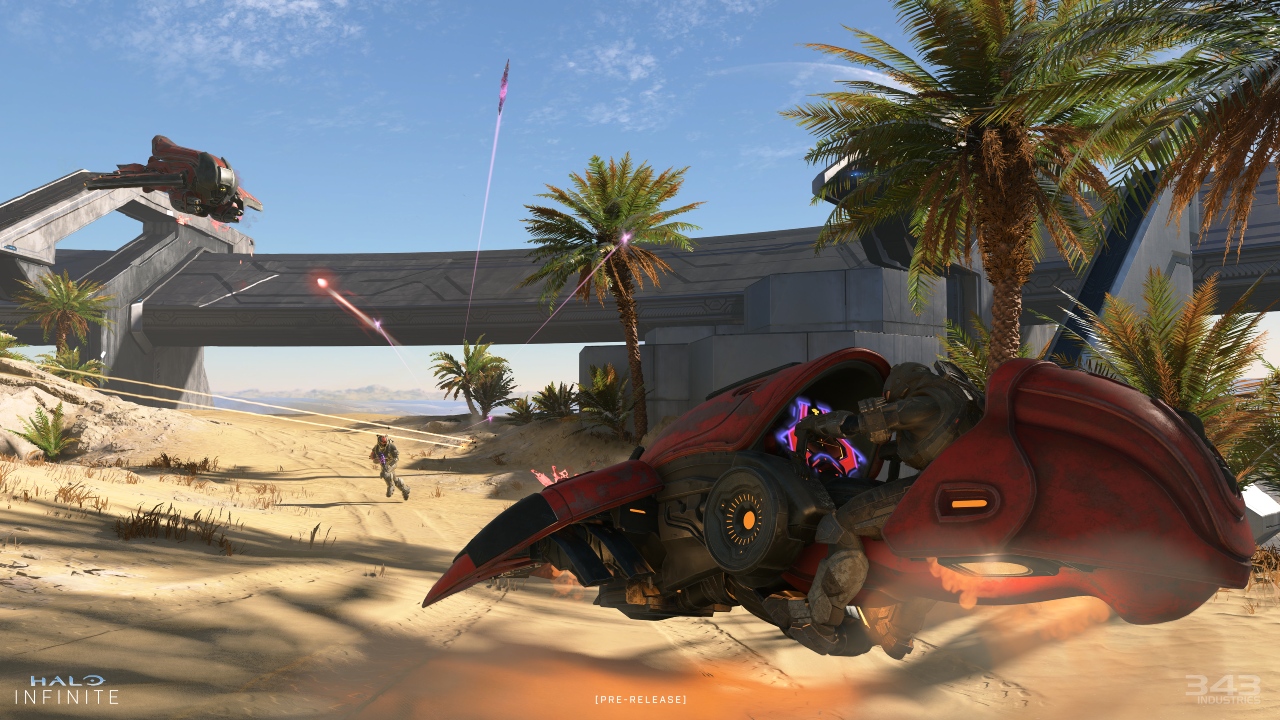
Halo Infinite is not quite there yet. it is a game with incredibly solid fundamental gameplay. it has less maps that people would like, less events, less updates, and the devs are focused on ramping that up. it's free, and in turn, certain cosmetic items that do nothing to impact your actual experience cost a little money. it is, hopefully, being made sustainably.
but it is a failure by many's standards. standards that have been set high, because there are still games out there being made unsustainably, just like back in the good old days.
it is okay to take corporations to task and ask for more out of the media you choose to consume. it is vital that there's that back-and-forth, that consumers stand up for their rights, because otherwise, people start getting screwed over. if we as an audience really are so appalled by bad business practices in the industry, though, that has to come with a tough pill to swallow - that doing things the right way means scaling back.
if we want things to get better, it starts by acknowledging that traits we associate with success in live service games often come at the expense of workers, whether that's working programmers and artists to the bone to push out a weekly update, or expecting forwards-facing community managers to always stay respectful and kind when hundreds of so-called 'fans' on social media swarm in to insist they deserve to lose their livelihood, or, in the worst case scenario, just straight-up their lives.
there is no path back to what Halo used to be, for so many reasons. culture is different. the way audiences interact with creators is different. expectations and the ways we communicate them are different. game development ought to be different, but in many ways, it isn't.

as i publish this, we're a little bit over a week away from the launch of the Winter Update, with its many anticipated features. some people are hoping with all their heart that it 'saves Halo', while others have already made up their mind that it's too little, too late, that even if they receive what they ask for, the wait has already rendered it worthless. if it's fun, i'll play it, and keep playing it until i'm not having fun. will it save Halo? i don't know. bigger, messier launches have had brighter comeback stories in the past, despite what the Halo fandom might lead you to believe about Infinite being somehow uniquely disgraceful. knowing what i know about what these people envision a 'saved' Halo looking like, though, i can say i'm not sure i want in on that.
EPILOGUE
if you've read this all in one go - first of all, congratulations and thank you, but more importantly - you might have noticed there's something i haven't mentioned. the game that Bungie left Halo behind for.
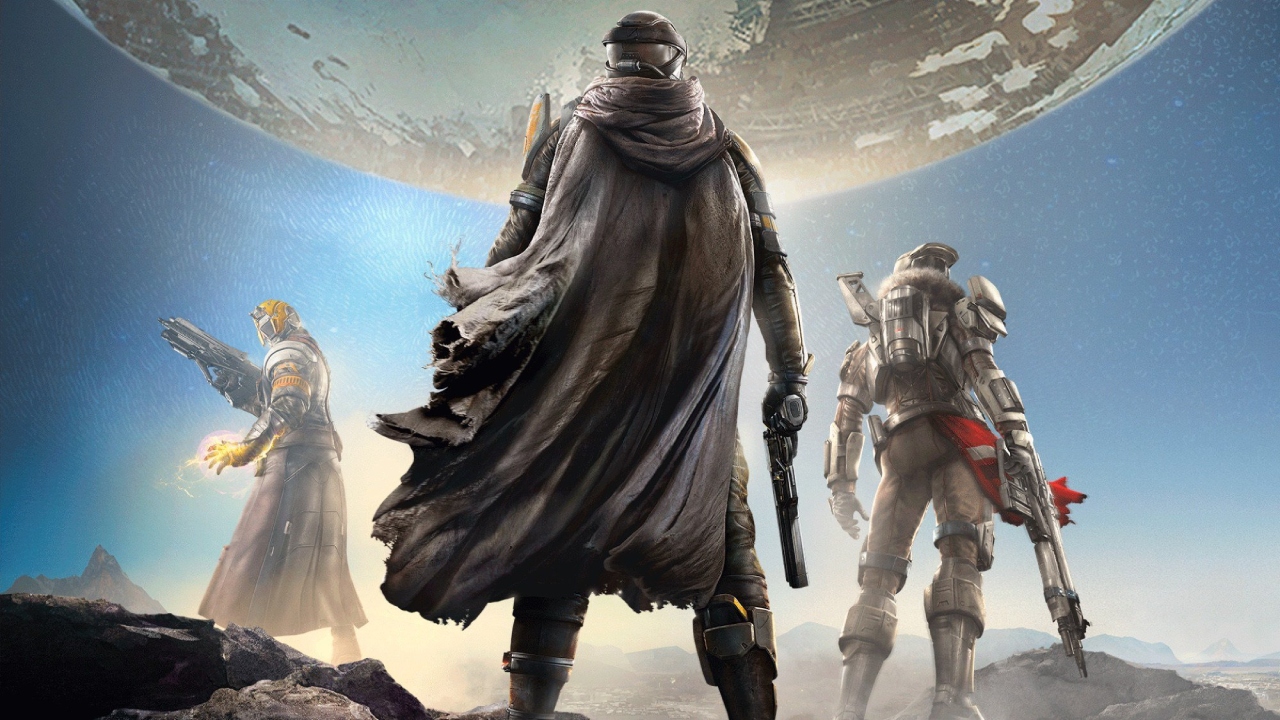
i haven't interacted with Destiny much. i played a beta for the first game at some point, but i just never really found my footing with it. i find that the game has interesting concepts, in terms of how it merges fantasy and sci-fi aesthetics, but at its heart, Destiny is sort of an MMORPG. the direct mechanics of how you interact with the world might evoke Halo, but the 'metagame', the structures around all these systems, is closer to something like World of Warcraft. i'm not a huge fan of games about getting incrementally better loot, about making stats go up bit by bit. i figured this out pretty quickly about Destiny, so i didn't invest much time into it.
Destiny, just like Halo Infinite, was marketed as having a 10-year plan, with Bungie once again finding themselves in a corporate partnership, this time with Activision. it's been about eight years, and things have gone off the rails in a number of ways, including the development of a full-on sequel to try and get a clean slate going, one that could be more properly built upon in the way other contemporary live service games have seen. Destiny 2 has been made incredibly easily accessible to me in numerous ways over the years, whether it was through Game Pass or when the game literally became free-to-play, but i've still never touched it.
part of that is having confidence in my personal tastes, knowing that Destiny is still, in many ways, very much that same game which i already knew wasn't quite for me back in 2014. but another factor is undoubtedly its community. as someone outside of Destiny, many times, when i see the game come up in conversation, i'm hearing nothing but vitriol from the people who play it. it comes and goes in waves, and as i write this, my impression is that the game is in a pretty good state, but there have been times when Destiny has been regarded as nothing but frustration for those who devote so much time to it.
funny how that works out, how when you outwardly project that you despise the game you play, that it might drive people away.
the partnership with Activison didn't work out for Bungie. they were never under the same level of corporate ownership as they were under Microsoft, but once again, they found themselves at odds with a bigger organization that had a different idea of where their games should go. three years later, in 2022, Sony acquired Bungie for 3.6 billion dollars.
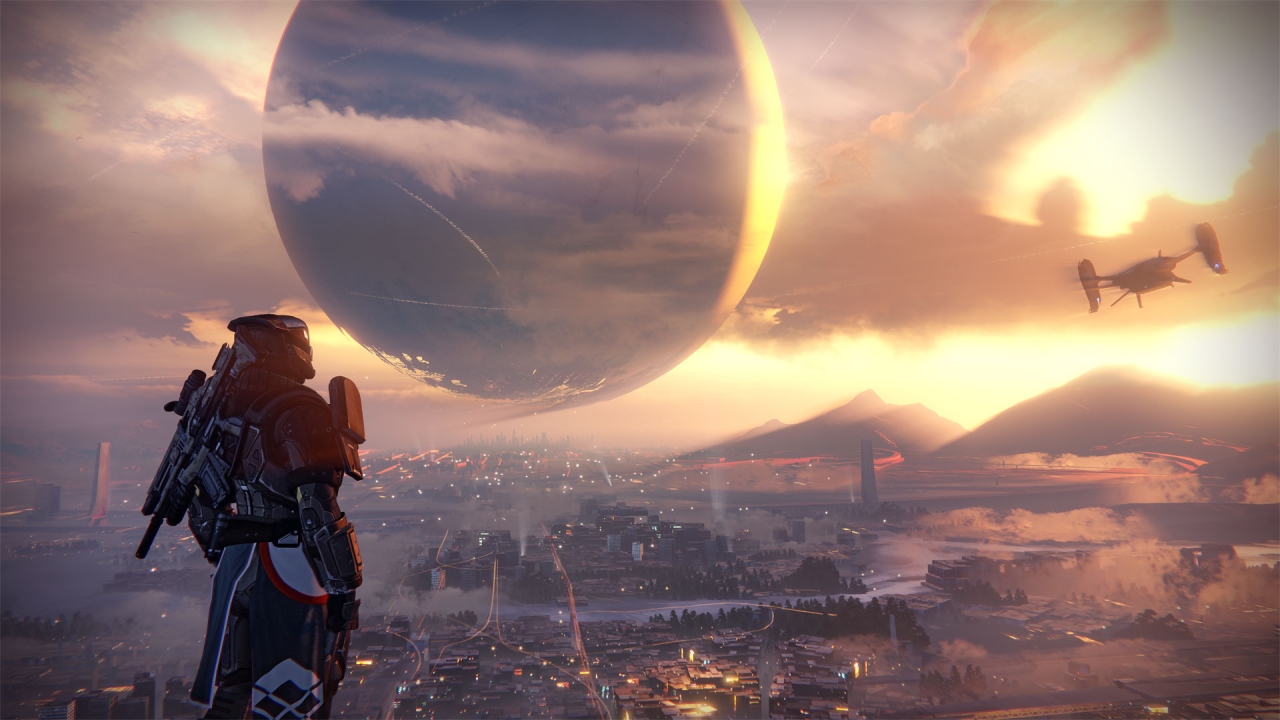
Bungie is an entirely different entity that it used to be. the people who envisioned Halo have scattered across the industry, whether that's towards 343 Industries or into their own independent endeavors. i haven't been keeping up with them, so take this with a grain of salt, but i get a sense that the whole 'rockstar' sheen has worn off a bit, that Bungie now acts like you'd expect most game studios to act, generally polite and slightly more normal.
in July 2022, a few months after the Sony acquistion, Destiny's community manager chimed in on a Reddit thread lamenting a lack of communication out of Bungie. he explained that Bungie, having received harrassment and death threats over the ongoing development of Destiny 2, had to cut back on communications with fans in order to ensure the safety of its employees. it was difficult, and they didn't want to punish the entire fandom, but it had to be done to make sure things could be straightened out.
it might be an entirely different Bungie speaking, but i would say maybe that's the most visionary thing to come of the studio since Halo.


